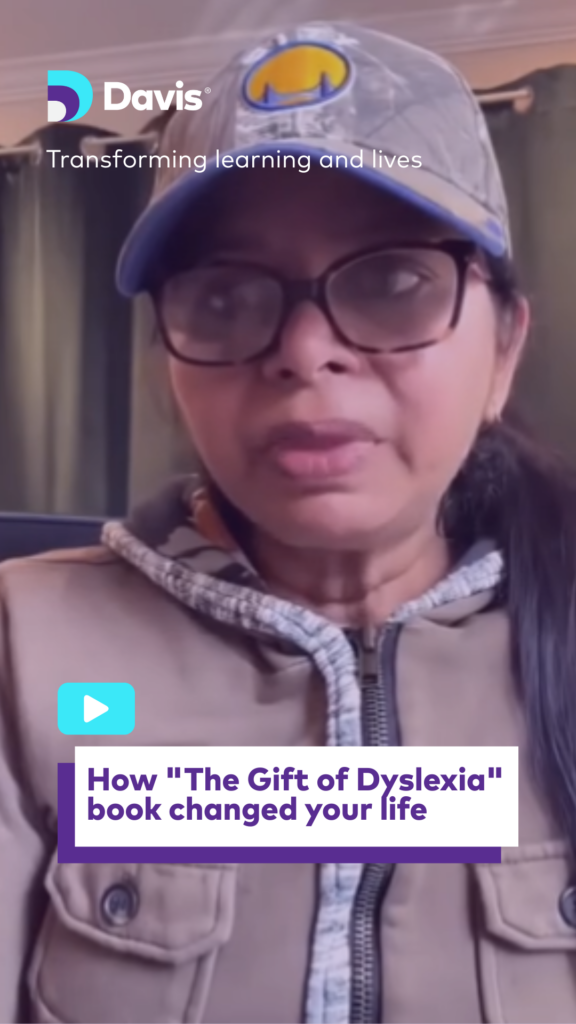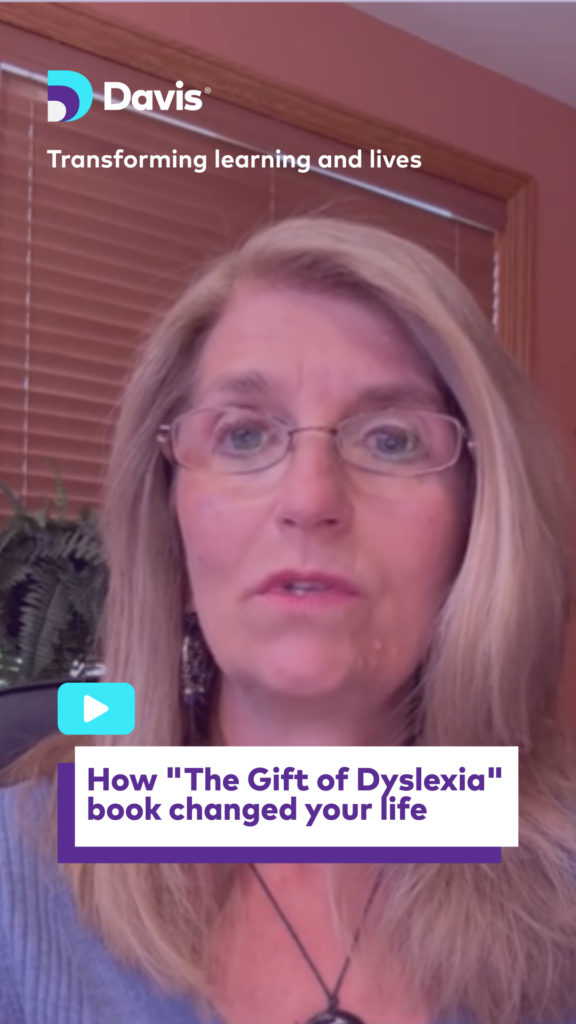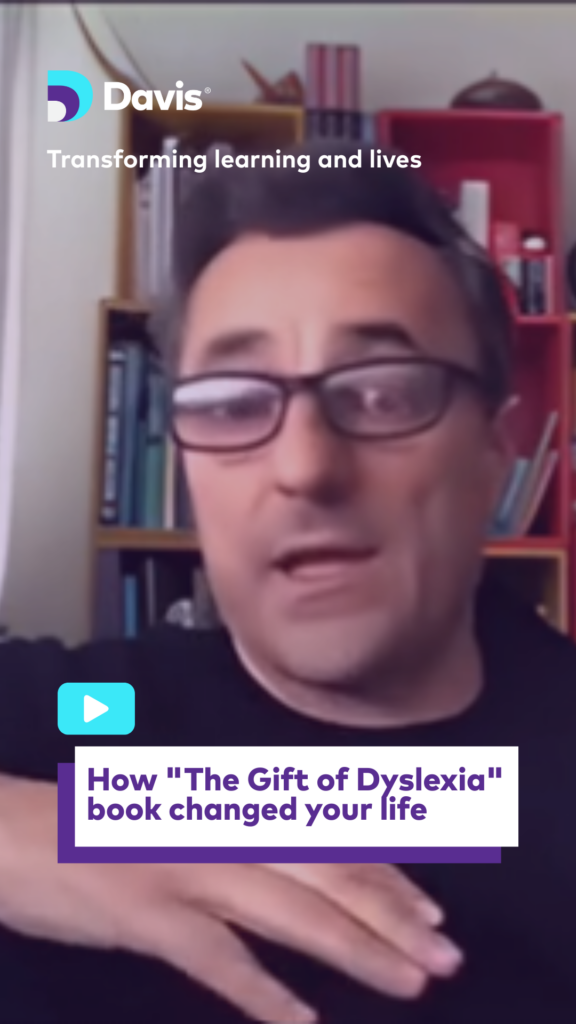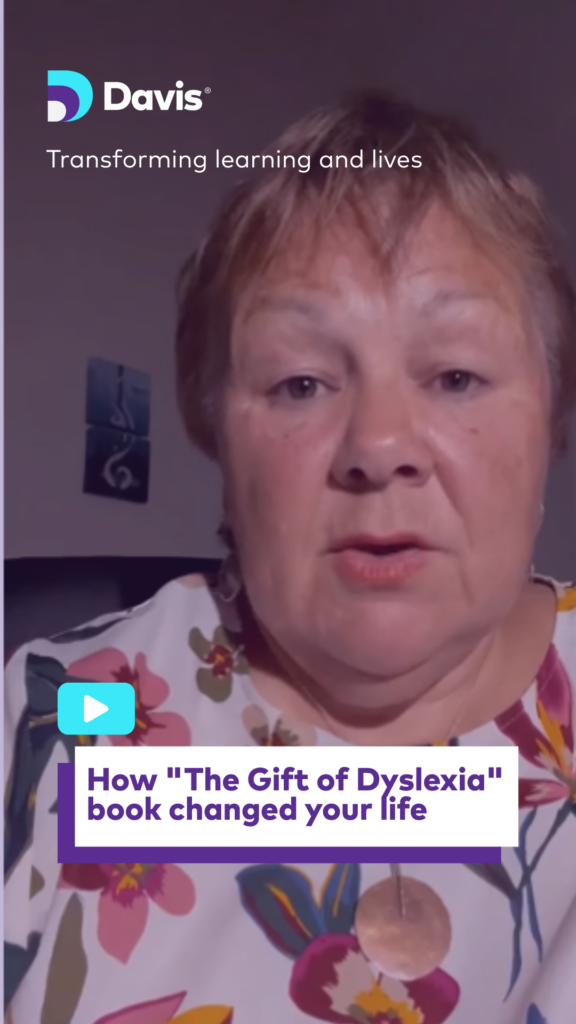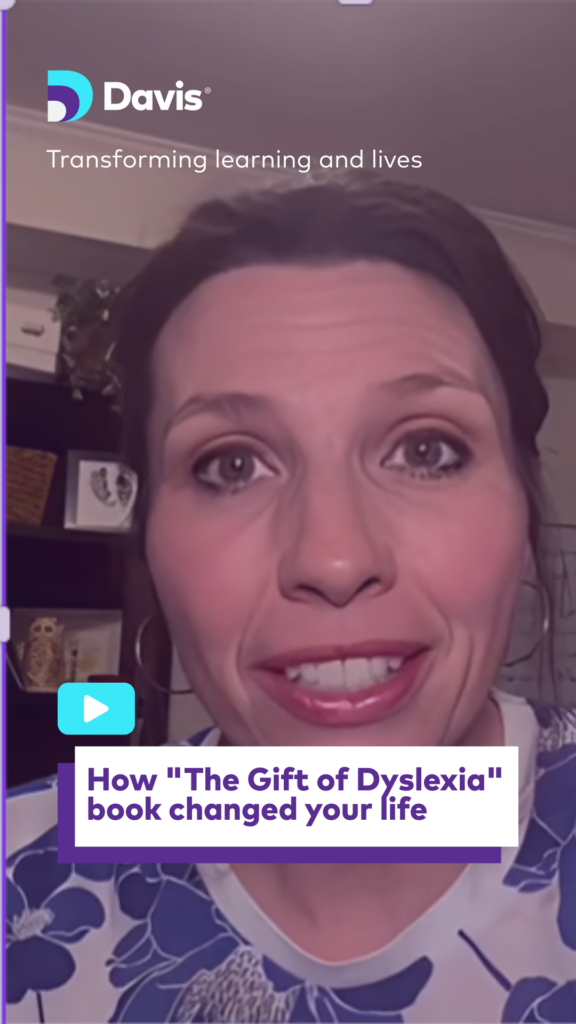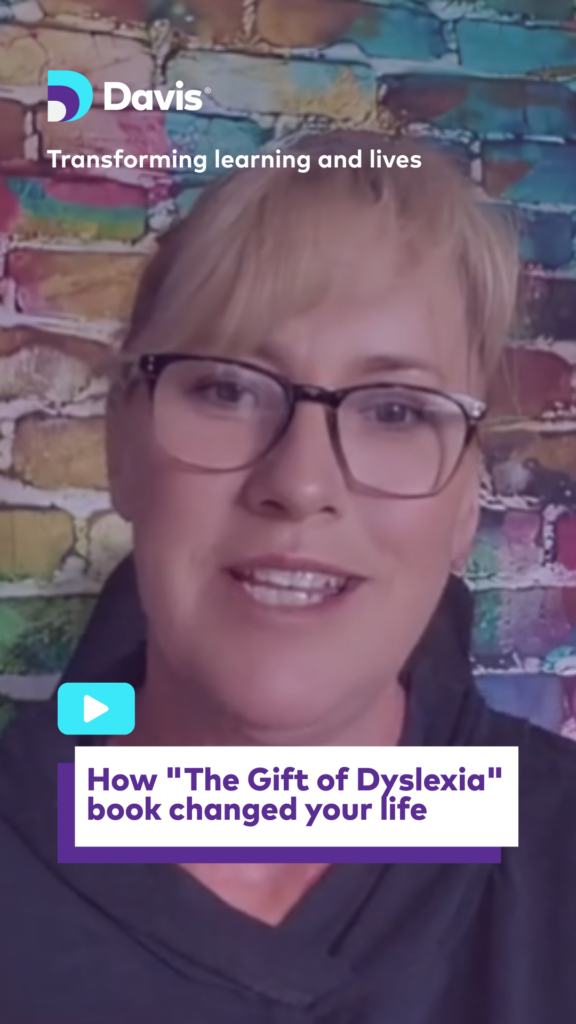Geen onderdeel van een categorie
By Cathie Geraci, Davis® Facilitator
When people ask me what I do, I tell them: “I help individuals understand how their intelligence works.” Yes, I help dyslexics learn to read, dyscalculics understand math, ADHDers manage attention and behavior, and autistic individuals make sense of the world around them. But ultimately, my clients discover how their thinking style holds strengths—and how it has also created challenges in learning and understanding.
Until recently, all my clients came from families who had their needs met. Families with the time to focus on a child’s learning struggles. Families with the resources to seek help.
But there are approximately 15 million children living in refugee camps worldwide, and fewer than half attend school. Among those who do, neurodiverse students often cannot learn effectively. Imagine growing up in a refugee camp, finally receiving the chance to learn, only to find that your brain won’t let you. It’s a double injustice. These children—some of the most vulnerable neurodiverse learners anywhere—are the ones I had the privilege to work with.
Let me tell you about Still I Rise International School.
Located in the heart of the Nairobi slums, it serves vulnerable children and refugees. Most students are local; they arrive each morning from the slums and return home each evening. A smaller group boards at the school, having come from the Kakuma Refugee Camp in Kenya or from Still I Rise emergency schools in Yemen and Congo.
This school is extraordinary. Walking through its gates, you might think you entered an elite Kenyan private school: well-kept grounds, lush gardens, a swimming pool, after-school clubs. But what truly makes it special is not that it serves slum communities and refugees, nor that it is entirely free. It is the only free school in the world for vulnerable and refugee students that offers the International Baccalaureate curriculum.
I met the school’s founder, Nicolò Govoni, in November 2024 while he was presenting his book Un Mondo Possibile. I asked whether he had dyslexic students and mentioned that I thought I could help. One year later, I found myself at the school facilitating two Davis Mastery for Dyslexia® programs.
Ryan
Ryan is 13 and lives in the slums with his mother and sister. His life is marked by extreme economic instability, yet nothing escapes his extraordinary visual-scanning ability. He is curious, thoughtful, and passionate about fencing. Despite being at the school for several years, he struggled with reading comprehension, writing, focus, and daily behavioral challenges.
After one week together, Ryan is now reading at grade level, writing comfortably—even in cursive—and maintaining focus. Most importantly, he now recognizes when he is the source of both his positive and negative behaviors. I am confident that in the months ahead, Ryan will become the student he wants to be, moving steadily toward his dream of working in cybersecurity.
Yaya
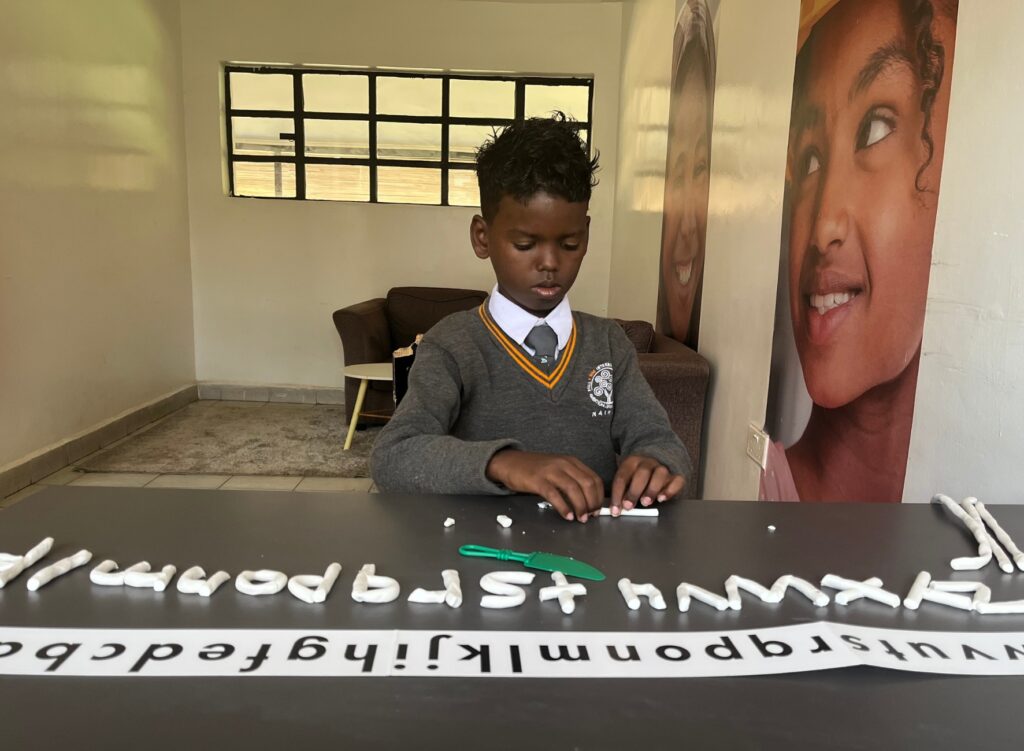
Yaya is 12 and comes from the Kakuma Refugee Camp. He left Ethiopia at age five and has spent most of his life in the camp. He is curious, kind, determined, and dreams of becoming the President of Ethiopia one day—to solve his country’s problems. Since arriving at the school just ten months ago, he has had to learn English, math, and reading all at once.
Although naturally gifted in math, Yaya could not yet read. He had developed many clever strategies to guess words and make it appear as though he could read. His motivation, however, was remarkable. By lunchtime on the final day of his program, something “clicked”—the mechanism for reading finally activated. I am confident he will be reading independently within months and soon be as strong in every subject as he is in math.
My time at Still I Rise International School was transformative. For these two students, it marked the beginning of understanding how their intelligence works and the end of the barriers that once held them back. I hope this is only the start of helping many more students there.
For me, it was a masterclass in human resilience. These students possess extraordinary motivation and remain connected to joy, despite having endured some of the harshest conditions on Earth. So while I helped two students understand their intelligence, the students of Still I Rise taught me how to be a better human being.
If you feel inspired to learn more, please visit www.stillirise.org.
Would you like to know more about the Davis® Mastery for Dyslexia? Contact us
December 6-7, 2025 | Free live online event
Your child isn’t broken. Traditional approaches weren’t made for their mind.
Two transformative days exploring autism through the Davis lens — discovering why your child experiences the world differently and how to support them without changing who they are.
Live attendance: FREE
Can’t make it live? Lifetime recordings: £12.99
Finally, answers that make sense
You’ve sat through countless meetings where professionals describe your child’s “deficits.” You’ve tried behavioral interventions that feel like forcing a square peg into a round hole. You’re exhausted from being told what your child can’t do.
What if we’ve been looking at autism all wrong?
Join families, educators, and professionals from 5 continents for a weekend that reframes everything. No deficit talk. No compliance training. Just breakthrough insights into how autistic minds actually work — and practical tools that honor that difference.
What you’ll Discover
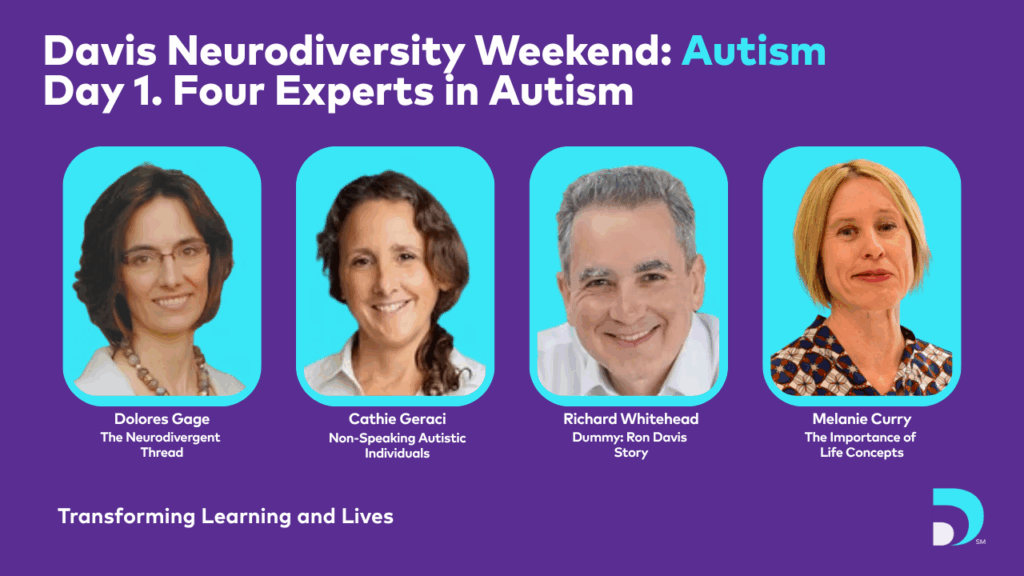
Saturday, December 6
5:45 PM GMT – Opening & Welcome
Featuring a personal message from Ron Davis, whose own autistic experience led to these revolutionary approaches.
6:00 PM – The Neurodivergent Thread with Dolores Gage
Why your child’s meltdowns, confusion, and sensory overwhelm all stem from the same source — and why that source is also their greatest strength.
7:30 PM – Non-Speaking Autistic Individuals with Cathie Geraci
Your non-speaking child has a rich inner world. Learn how Davis methods help restore calm and unlock communication without forcing speech.
9:00 PM – Dummy: Ron’s Story with Richard Whitehead
Preview Ron Davis’s autobiography — from non-speaking and “unreachable” to developing methods that have helped thousands worldwide.
10:30 PM – Missing Concepts and Individuation with Melanie Curry
Why your child might not recognize themselves in the mirror, understand “you” and “me,” or grasp cause and effect — and how to build these foundations gently.
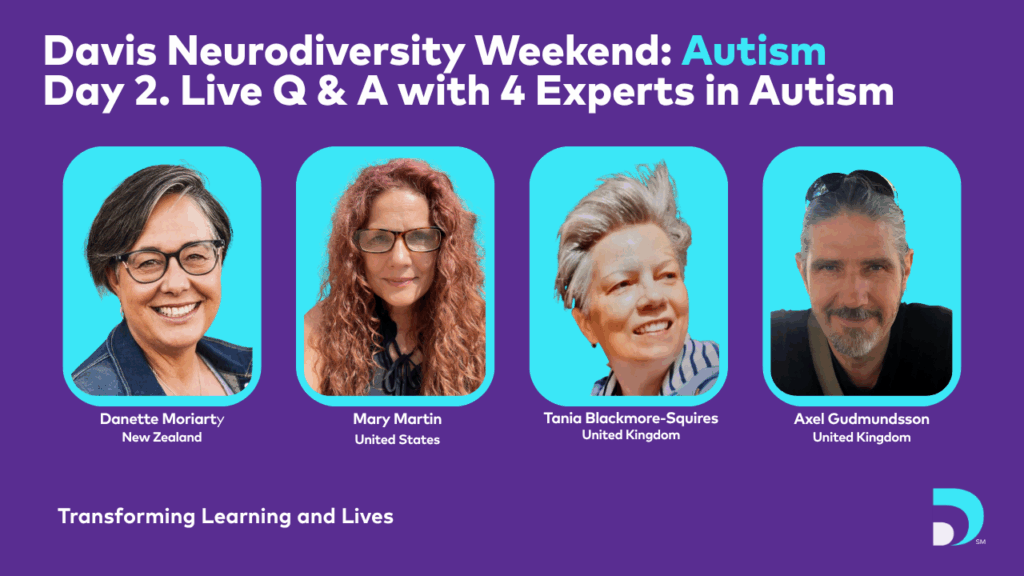
Sunday, December 7
7:30 PM GMT – Facilitator Panel + Your Questions Answered
Real families. Real breakthroughs. Davis facilitators share stories of transformation and answer your specific questions live.
Featuring: Tania Blackmore-Squires, Axel Gudmundsson, Mary Martin, Danette Moriarty
Who This Is For
Parents living with:
- Daily meltdowns you can’t predict or prevent
- A child who seems “unreachable” at times
- School calling constantly about behavior
- Therapy approaches that aren’t working
- Exhaustion from trying everything
You’ll leave with:
- Understanding of why your child’s brain works differently
- Practical tools you can use immediately
- Hope based on real success stories
- Connection with families who truly get it
- Clear next steps for your journey
Global event, local times
This event bridges time zones to unite our worldwide community:
Saturday Opening (5:45 PM GMT):
- London: 5:45 PM
- Paris/Berlin: 6:45 PM
- Johannesburg: 7:45 PM
- New York: 12:45 PM
- Los Angeles: 9:45 AM
- Auckland: 6:45 AM Sunday
- Sydney: 4:45 AM Sunday
Can’t make all sessions live? You can purchase lifetime recordings for £12.99.
Why Davis Is Different
We Don’t Try to “Fix” Autism
Your child’s different perception isn’t wrong — it’s just different. Davis methods work with how autistic minds naturally function.
Created BY Autistic Experience
Ron Davis was non-speaking until age 17. These aren’t theories developed in labs — they’re insights from lived experience.
Concepts, Not Compliance
Instead of behavior modification, we build the missing conceptual foundations that make the world make sense.
Tools That Last
Families report continued growth years after learning Davis methods. The tools grow with your child.
What others are saying about the Davis Autism Approach®
“The program didn’t try to change who he is. It gave him tools to understand and embrace himself – and that has made all the difference.” Louise, Mother of program participant
“I see how the stronger sense of who I am has allowed me to say no to what isn’t for me and say yes to what makes me happy. I no longer have to be reacting to everything happening around me. I can be centered and decide what is for me and what is not for me. I choose to respond rather than react. It feels so freeing.” Leigh, program participant
“Sophia was a frightened, fearful child who was withdrawn and living inside of herself. Since completing the program two years ago, she has become a typical young girl. She is two cycles away from completing her black belt in Taekwondo. She wants to work for Lucas films as an animator one day. Our lives are now ‘normal’ – we laugh as a family, we cry as a family, we encourage one another, we strengthen one another. We hadn’t experienced that before.” Mary, Mother of program participant
“I can’t believe how life-changing these concepts are. I use them all of the time in my life now – it is just so easy to take responsibility for things that had always seemed impossible before.” This person wished to remain anonymous
Common questions
Q: Is this for parents only?
A: While designed with parents in mind, educators, therapists, and autistic individuals would all benefit from these insights.
Q: My child was just diagnosed. Is this too advanced?
A: Perfect timing. Understanding the Davis perspective early saves years of inappropriate interventions.
Q: My child is an adult. Is it too late?
A: Never. Davis methods work across all ages. Many adults discover themselves through these concepts.
Q: What if I can only attend some sessions?
A: Register anyway. Each session stands alone with valuable insights. Recordings available for what you miss for only £12.99.
Q: How is this different from other autism seminars?
A: We don’t talk about deficits, disorders, or “fixing.” We explore how autistic perception works and how to support it.
A Personal Note from the Organizers
Every day, we see families exhausted from approaches that don’t work. Parents blamed for their child’s struggles. Children forced into boxes that don’t fit.
This weekend is different. It’s about understanding, not changing. Supporting, not suppressing. Hope based on real success, not false promises.
Your child’s autism isn’t a tragedy to overcome. It’s a different way of experiencing the world — one that includes incredible gifts alongside real challenges.
Join us to discover what becomes possible when we stop trying to “fix” and start trying to understand.
Organized By:
Davis UK & Ireland in partnership with Davis Autism International
Don’t Miss This
Two days that could change how you see your child — and how they see themselves.
December 6-7, 2025
Live: FREE
Recordings: £12.99
By Nadine Schumont, Licensed Davis® Facilitator
Some days in this work stay with you forever. Today was one of those days.
A 10-year-old former client asked his parents if he could visit me on his day off from school. Not because he was in crisis. Not because something was wrong. Just because he was in town and wanted to see me.
He’d completed Davis Concepts for Life® with me two years ago, when he was eight. That he wanted to come back just to visit? That alone made my day.
When children choose to return
We sat down together, and I asked how things were going. His mom had mentioned a few areas we might explore, but I wanted to hear from him first.
“Let’s think about situations that sometimes feel hard,” I suggested. “Moments where you might wish you’d handled things differently.”
He nodded and launched straight into his story.
The sandbox incident
Back in September, he’d dug a hole in the school sandbox. A really good hole. Ever since, he’d been watching it, protecting it, making sure it stayed exactly how he wanted it.
Then last week, another child started filling it with wet sand.
“I got so upset,” he told me. “We were yelling at each other, and then… I hit him.”
The shame in his voice was palpable. He knew he’d made a mistake. But more importantly, he couldn’t understand why he’d lost control over something that now seemed so small.
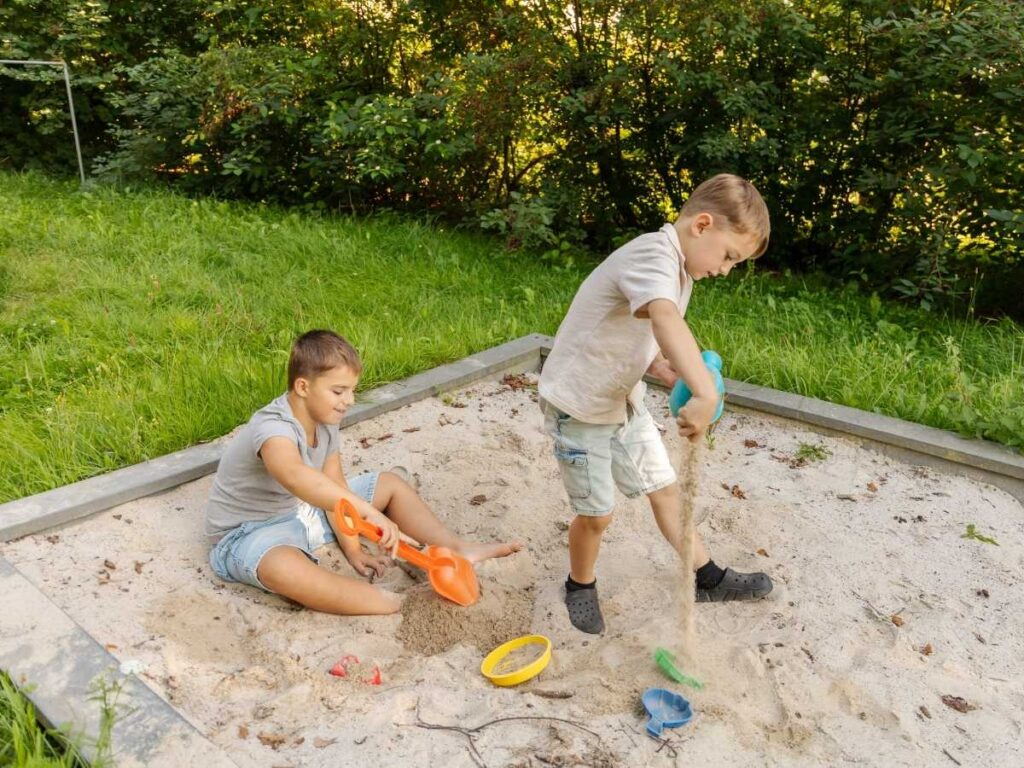
Making it tangible
We went into the clay room – the heart of Davis work. I asked him to model what happened, but in reverse order. This is something we do to help children see the sequence of events and recognize where they had choices.
He modeled:
- The hitting (what happened last)
- The yelling (the escalation)
- The boy filling the hole (the trigger)
- The quiet moment before anything happened
That last model – the calm before the storm – that’s where the magic happens.
The questions that changed everything
Looking at his clay scene, I asked, “Who made this hole?”
“I did – back in September.”
“Do you own the school property?”
He actually laughed. “No.”
“So if the sandbox belongs to everyone, does that mean anyone can play in it?”
He nodded, already seeing where this was going.
“Okay,” I said, “so if we go back to that moment when you were still in order – before your emotions took off – what other decision could you make?”
He paused. His face changed. A smile spread across it.
“I could just go make another hole.”
The power of self-discovery
I’ve been doing this work for years, and these moments never get old. That instant when a child realizes they have choices they never saw before. When the rigid thinking that trapped them suddenly becomes flexible.
We weren’t done yet. Using the Davis “Creating a New Behavior” procedure, we modeled what that new choice would look like. How he could recognize the moment before his emotions ramped up. How he could choose differently.
As we worked with the clay, he started connecting dots on his own.
“It’s all self-created energy, isn’t it?” he said. “My thoughts created my feelings, and my feelings created what I did.”
This is a 10-year-old, folks. Understanding emotional regulation at a level many adults never reach.
Beyond the sandbox
Later in our session, completely unprompted, he made another observation:
“Sometimes I use disorder to frustrate my mom.”
I hadn’t brought up his home behavior. His mom hadn’t mentioned this pattern. He discovered it himself, just by having the conceptual framework to understand his own actions.
We talked about how he could use his “dial” – an internal regulation tool from his original program – to turn down his energy when emotions rise. How he could walk away, breathe, and come back when ready.
“Yeah,” he grinned, “I can turn my dial down and make a different choice.”
What parents need to know
If your child:
- Fixates on keeping things “just right”
- Melts down when their plans are disrupted
- Can’t let go when something changes
- Hits or lashes out over seemingly small things
They’re not being defiant. They’re not manipulative. They’re missing fundamental life concepts that help us understand:
- We don’t control everything (and that’s okay)
- Change is survivable
- We always have choices
- Our emotions don’t have to control us
Why the Davis Concepts for Life® last
This is what amazes me about Davis work. Two years after his program, these concepts aren’t just remembered – they’re alive and growing.
I didn’t reteach him anything today. The concepts he mastered at age eight were still there, ready to apply to new situations. They’d matured with him.
His mother tells me he’s doing so much better overall. When he struggles and asks “But why?” she simply responds, “What did I tell you?” This gentle cue helps him pause and access what he already knows.
The invitation to grow
Every child who comes through my practice leaves with these tools:
- Understanding of emotion as self-created energy
- The ability to recognize order and disorder
- Tools to regulate their internal state
- Awareness of choice in every moment
But more than tools, they leave with an invitation – to keep growing, keep discovering, keep applying these concepts to new challenges as they arise.
A personal note
After 10 years as a Davis® Facilitator, I can tell you this: the children who seem most “stuck” often have the biggest breakthroughs. The boy who couldn’t let go of a sandbox hole? He’s now a child who understands flexibility, choice, and self-regulation.
His parting words to me today? “Thanks for helping me see I always have another choice.”
That’s why I do this work. Not to control behavior, but to unleash understanding. Not to manage children, but to empower them.
Because every child deserves their “I could just make another hole” moment.
About Davis Concepts for Life®
The Davis Concepts for Life® program provides individuals with the conceptual foundation necessary for emotional and social growth. Through clay modeling and experiential learning, participants master life concepts that many of us take for granted but that can be revolutionary for neurodivergent minds.
The program typically runs 30-60 hours over several weeks, paced to match each individual’s needs. It’s suitable for ages 8 through adult and particularly beneficial for individuals with autism, ADHD, and related profiles – including multi diagnosis and treatment resistant individuals.
Want to learn more?
If this story resonates with your family’s experience, you’re not alone. Many children are missing these fundamental concepts, leading to behavioral challenges that seem insurmountable.
They’re not. With the right approach, breakthrough is possible.
Find a Licensed Davis® Facilitator Near You
Learn about the Davis Concepts for Life® Program
Have questions? Or unsure whether this approach is right for you? Contact us
Nadine is a Licensed Davis® Facilitator whose own journey own with undiagnosed ADHD and dyslexia led her to take a Davis program in 2017. Since then, Nadine had been supporting neurodivergent individuals and their families. Based in Stratford, Ontario, Canada, Nadine provides both in-person and online programs. This story is shared with permission, with identifying details changed for privacy.
Have a story to share about your Davis® experience? We’d love to hear from you. Contact us
By Ronald D. Davis
Original article from the Dyslexic Reader 2002: The following is a description of an experiment he conducted in 1982 to prove to himself that disoriented perceptions are a natural function of the brain. This understanding of how the use of a natural brain function not only produces the symptoms of dyslexia, but also the many talents dyslexic thinkers can exhibit, serves as one of the foundations of Davis Mastery for Dyslexia®. It explains the tools which allow dyslexic thinkers to intentionally control the distorted perceptions that are a product of disorientation—to both eliminate a learning disability and to enhance their talents.
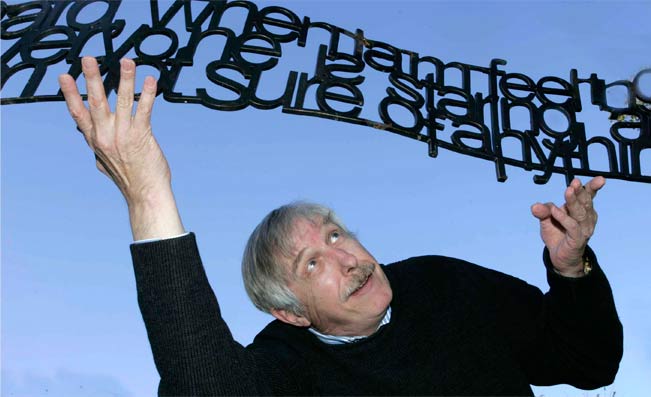
Setting the stage: 1982
In 1982, after my colleagues and I had arrived at a basic, rudimentary understanding of what had to be done to correct dyslexia, we offered a program for doing so to the public. The program was producing spectacular results, and we gathered a great deal of empirical evidence to support it. But the program and I were being criticized and ridiculed by the established authorities on dyslexia. This was because the developmental model for dyslexia was such a major departure from the structural model (brain damage or malfunction) that was accepted at the time. In addition, I lacked any formal training or credential in the field, so I was quickly branded a kook or snake oil salesman.
I searched in vain for anything that would support the concept that distortion in perception was at the root of dyslexia symptoms. I couldn’t even find a simple explanation of perceptual distortion, why it happened, how it happened, or what it was called.
The motivation
My primary motivation was to establish that dyslexia was not the result of brain damage or malfunction. I wanted to find a way to prove that all of the symptoms of dyslexia could be produced by a normal brain functioning naturally. I felt that if I could make a link between the perceptual distortions, which even non-dyslexics experience, and dyslexia symptoms, it would prove that the symptoms of dyslexia were not evidence of brain damage or malfunction. I didn’t know where to begin.
The breakthrough moment
Then one day I was driving into the office. We had just had about two weeks of cold, gray, rainy weather.
That morning it was warm, bright, and sunny. I wanted to play hooky from work and go for a drive in the redwood forest. I was stopped at a stoplight, with my mind already in the redwoods, when suddenly I felt that I was going to bump into the car in front of me. I naturally pushed harder and harder on the brake but I wasn’t stopping. Suddenly I realized, it’s not me moving, it’s the other car rolling backward towards me! A toot of my horn prevented a bump, but my mind began to race. This firsthand experience of the phenomenon (distorted sensory perceptions) I had been talking about for months caused a shift in my perspective. If I could reproduce this same effect in a controlled situation, I might be able to prove my theory.
The experiment begins
That day I set up an experiment. The equipment was an old 33-1/3 speed record player, standing on its side. Attached to the turn table was a large cardboard disk with a spiral painted on it. With a foot switch so the device could be turned on and off without using a hand, a stop watch, a tape recorder, and a clipboard, I was ready to explore perceptual distortion. I was the first test subject. I sat in front of the disk looking at the center of the spiral. A press of my foot, and the disk began to spin. In less than five seconds I felt the motion. The speed of the disk was so fast that the sense of motion was like flying down an endless tunnel.
The goal of the experiment was to produce dyslexia symptoms in a non- dyslexic brain. But before that could be established, the equipment had to produce dyslexic symptoms in a dyslexic brain. Based on the developmental model, the symptoms of dyslexia came from distortions in the senses. The senses most affected were vision, hearing, balance, motion, and time.

Phase one: Vision
The first thing I noticed performing the experiment on myself was that just before the feeling of movement began, the speed of the spinning disk appeared to slow down. This indicated that not only was my sense of motion distorting, but also my sense of vision.
Phase two: Balance
The second phase of the experiment was to stand in front of the disk balancing on one foot, turn the disk on, and try to maintain balance. I don’t recommend doing this without an assistant to turn the disk on for you and, more importantly, to catch you when you begin to fall–because you will fall over backwards. The spinning spiral definitely distorted the sense of balance.
Phase three: Time
The third phase was to sit in front of the stationary disk with a stopwatch in hand. While looking at the center of the spiral, I tried to estimate the passage of fifteen seconds by clicking the stopwatch on, and when I thought fifteen seconds had elapsed, I clicked it off. In five attempts I was never more than three seconds off. The next part was to start the disk spinning, and try the same thing. In five attempts I never got closer than five seconds, and twice I was more than ten seconds off. My sense of time was definitely distorting.
Phase four: Hearing
The fourth phase was to turn on the tape recorder, spin the disk, and after the feeling of motion began, have an assistant say something to me, and repeat back what I heard. We used nursery rhymes like, “Sally sells sea shells at the sea shore.” Only the assistant would deliberately alter the words, like, “Sally tells sea snails at the sea shore.” Or, “Sally sells seashores to seahorses.” I could not hear exactly what the assistant said, and the proof was on the tape.
Testing a Hundred People
So with less than $100 of equipment, I demonstrated for myself that my brain distorted the senses of vision, hearing, balance, motion, and time. The experiment produced dyslexic symptoms in a dyslexic brain. Now I was ready to try the same thing on a non-dyslexic brain. I decided to put one hundred people through the steps of the experiment. I wouldn’t even attempt to pre- determine whether or not they were dyslexic. I wanted a cross section of the population.
I started doing the experiment with anyone who was willing to sit in front of the spinning disk. I soon discovered that I needed another piece of equipment – a plastic-lined waste can. I also discovered that I needed to change the protocol. At first I let others observe someone going through the experiment. Their observations influenced their own experience. So observation was permitted only after having had the experience.
Some people were made too nauseous by the spinning disk to complete all four phases of the experiment. But there was perceptual distortion in the phases they did complete. And everyone who completed the series experienced distorted vision, hearing, balance, motion, and time. Age, intelligence, education, gender, race, etc. didn’t matter–the results were consistent.
Then one evening a young woman, the forty-eighth test subject, was sitting in front of the spinning disk. She sat there on the verge of vomiting for about three minutes, then fell to the floor and had a grand mal seizure. The unexpected event scared me; it terrified her. She had never had a seizure before, and I had never seen one that up close and personal. I felt responsible for making it happen.
I had satisfied my own curiosity. I had nearly fifty test results, all of which confirmed my theory. After all, I didn’t have a graduate degree hanging in the balance. I concluded that I had proven my point, so the hundred person experiment ended at only forty-eight.
Talents which can be enhanced by disoriented perceptions
- Spatial awareness and design
- Strategic planning and problem-solving
- Mechanical and engineering work
- Creative fields like art, music, and drama
- Athletics and piloting
- Inventing and storytelling
Thus, the goal of Davis Orientation Counseling is not the elimination of disorientation, but the ability to consciously control it when it acts as a barrier to reading, writing, doing arithmetic, or succeeding in a traditional educational setting.
Ready to learn more? Get in touch with our team to discuss your questions about dyslexia, or explore how the Davis® Mastery for Dyslexia can help you or your child thrive.
Contact us
Guest post by Tracy Doyle, Davis Facilitator
Math can feel like a foreign language, especially for learners whose brilliance shines in pictures, spatial thinking, and creativity. It isn’t that these kids can’t learn—it’s that the traditional way of teaching math often doesn’t align with how their minds naturally process information.
For students with dyslexia or dyscalculia, the symbols, sequences, and linguistic twists in math can create confusion rather than clarity. Dyslexic learners, for instance, often excel at three-dimensional or spatial reasoning but struggle with rote memory, symbols, and step-by-step logic—exactly the areas where so much of math typically lives.
That’s why the Davis® Mastery for Math Program offers such a profound shift. It meets learners where they are: visual, kinesthetic, big-picture thinkers, and invites them into math in a way that genuinely makes sense.
Natalie’s Transformation
When Natalie began her program, she was clear on what she wanted:
- To feel more confident
- To improve her math skills
- To ease the anxiety that often crept in during learning
And she did blossom. Natalie learned to work with her picture-thinking mind instead of fighting it. Concepts that once felt daunting—like addition, place value, fractions, and negative numbers—began to make sense in a whole new way.
Her measurable progress tells the story:
- Basic concepts: from grade equivalent 3.1 to 4.8
- Operations: from grade equivalent K to 3.3
- Applications: from grade equivalent 2.6 to 3.3
Through hands-on tools, clay modeling, and strategies for regulating focus, energy, and emotions, Natalie didn’t just grow mathematically—she built a stronger connection to herself. She walked away not only with math tools but with a deeper understanding of how her brilliant mind works. That’s not just change; that’s empowerment.
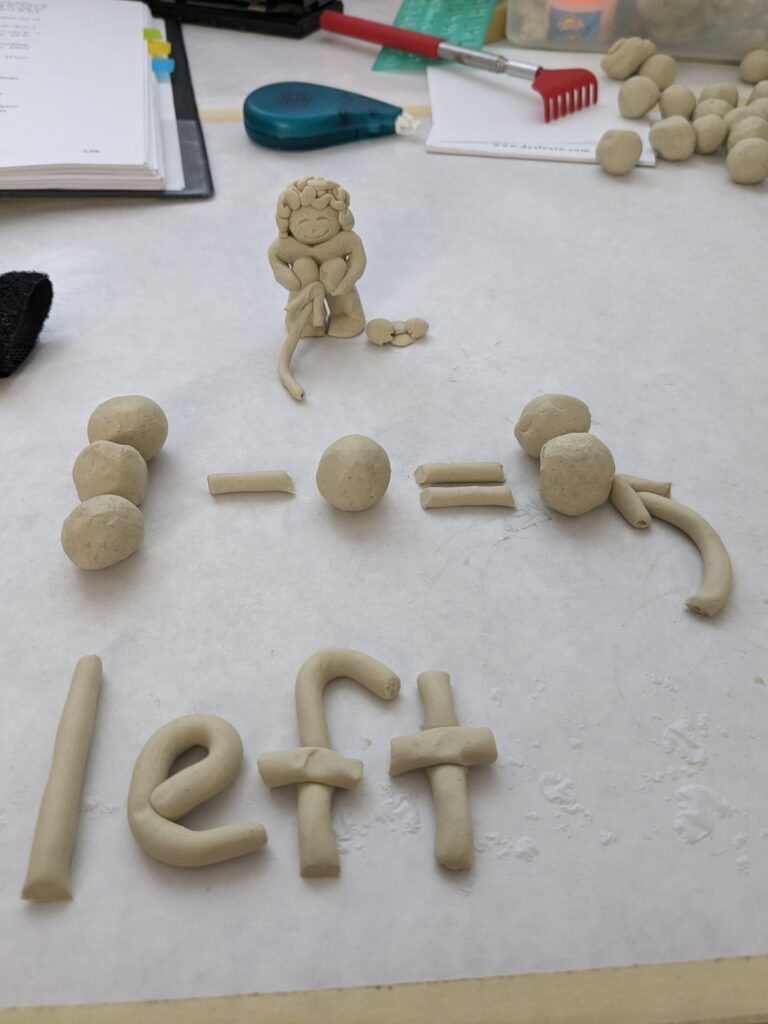
How This Approach Connects with What We Know
Visual, multisensory learning builds real understanding. Research and experience show that visual and manipulative strategies—like using beads, clay models, or pictorial overviews—help bridge abstract math concepts. When learners see and touch the math, it becomes anchored, meaningful, and memorable.
Math anxiety often stems from language and symbol confusion. Words like “from,” “by,” and other everyday words in math problems can trigger confusion for picture thinkers. They may recognize the words but can’t translate them into picture meaning, and that’s where true understanding falls apart.
At the root of math struggles lies disorientation, not laziness. Dyscalculia, the math-side counterpart to dyslexia, often stems from distorted perception. When you can’t intuitively grasp numbers or procedures because you’re disoriented, math becomes a maze. Approaches that address that orientation directly can be life-changing.
Natalie’s Story in the Bigger Picture
She’s not alone. Across the Dyslexia.com blog, you’ll find stories of students overwhelmed by numbers, math terms, or symbols, only to find joy and clarity when learning finally meets how they think.
This isn’t just healing academic wounds—it’s reigniting curiosity, confidence, and a sense of belonging in math.
If math has ever been a source of frustration, fear, or disconnection for your child, it doesn’t have to stay that way. The Davis® Mastery for Math Program offers an approach that changes everything because it starts with understanding how your child learns, not how we’ve traditionally taught.
Have questions about the Davis® Mastery for Math?
Contact us
Guest post by Sue Hall, Licensed Davis Facilitator, TedX Speaker, Author, Film Writer and gifted dyslexic
I was beyond excited to receive an invitation to deliver my first Keynote talk at the Edmonton Family Literacy Conference on October 8, 2025.
Even better?
After lunch, they were screening our documentary WHO KNEW Dyslexia is a Way of Thinking.
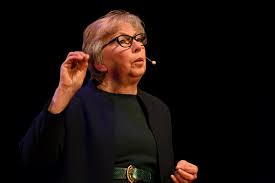
I love presenting at conferences and professional development sessions because of the unknown—those attendees’ ‘aha’ moments, the nods and smiles when I voice what they already know to be true.
When I share the unique ability of picture thinkers to alter perception, which leads to talents in the 3D world, and then explain how it works against us in the 2D world of print… when I explain that picture thinkers are image-based thinkers rather than sound thinkers and phonics just isn’t the way we learn to read… and when I share that picture thinkers need pictures to think with, and no image means no thinking—the overwhelming reaction is always the same: “I had no idea people thought like that.” Hence the title of the film.
The conference theme was to shift perception and disrupt. I opened by saying, “I promise to disrupt!” That part was easy.
After my talk and the film screening, there were plenty of questions and a great deal of emotion. I passed a notebook around, asking attendees to write their email if they wanted more details. The next morning I looked at the notebook… oh my… so many entries. It was affirming and heartwarming.
Here’s what happened next: A considerable number of attendees from Aboriginal and Metis communities wanted to book another talk, a professional development session, a film screening. I had shared that challenges can be significantly reduced with Davis Learning Strategies for K-3 teachers and The Whole Dyslexic Society’s pilot DLS for Early Years. The very next day, I heard from a province-wide association working with 3-5 year olds and a school district wanting to change their remediation methods.
I write this on Canadian Thanksgiving Day, and I could not be more grateful—for Ron Davis’s wisdom, for my calling as a Facilitator, for the invitations to enlighten educators of individuals from 3 to 80+. The message is clear: everyone is able to learn if they are taught in the way they were born to learn. They are definitely not learning disabled. And now way more educators know this and can share their ‘aha’ moments. Yay!
And there’s more exciting news: The WHO KNEW film director submitted the documentary to film festivals, and we just heard it’s been accepted to the Los Angeles Women in Film Festival (November 13-16, 2025)! She was beyond excited, too. Who knows what that will lead to? We just know it will be exciting and inspiring.
Want to experience your own ‘aha’ moment? Learn about Davis workshops and programs that can transform how you or your loved ones learn. Head to our solutions page.
Watch the documentary: Discover the full WHO KNEW story
Have questions about any of our Davis Programs or Workshops?
Complete the form below
Guest post by Stephen Martin, New Zealand
When we talk about neurodiversity, most people want clean labels. You’re “dyslexic” or you’ve got “ADHD” or maybe someone says you’re “on the spectrum.”
But for so many of us, it’s not one neat label. It’s a cocktail.
For me, dyslexia was the first word that gave my challenges a name. Reading from the board at school was nearly impossible, and that’s what got picked up. But fast-forward 20 years and suddenly I’m sitting in a doctor’s office, learning I also have ADHD. And when I really reflect, I know I carry traits from autism too — a love of routine, moments of social struggle.
This is the truth for so many people: we are not “one thing.” We’re a unique mix of traits, strengths, and challenges. It’s why one-size-fits-all solutions rarely work.

Why it feels like a cocktail
Each piece of neurodiversity adds its own flavour.
- Dyslexia gives us visual thinking, fast pattern recognition, but also the frustration of words not sticking the way they should.
- ADHD brings the kerosene, hyperactivity, dopamine-seeking, the racing energy that can be both gift and chaos.
- Autism traits can add a deep need for structure, a sensitivity to noise or light, or the feeling that social rules are written in a language we never got taught.
- Plus all the rest…
Put them together and you’ve got a cocktail that changes flavour depending on the day. Some days it’s a mojito, sharp, refreshing, full of energy. Other days it’s a hangover in a glass.
The Davis way of looking at it
What I love about the Davis Method is it doesn’t just chase symptoms. It asks: what’s the trigger?
Ron Davis understood that disorientation in the mind’s eye is at the core of dyslexia. That our brains are trying to see 3D meaning in 2D symbols, which leads to confusion. His approach is experiential, clay modelling, visualisation, life concepts. Instead of memorising, you build understanding with your hands and senses.
And here’s the powerful bit: this approach doesn’t stop with dyslexia.
The same life concepts work has helped people with ADHD, autism, dyscalculia, and more. Because at the root, all of these brains struggle with abstract concepts, time, cause and effect, or holding onto focus. Davis methods give those concepts a shape and a place in the mind.
A retrospective shift
Looking back, I wish more of us were told the truth earlier. That dyslexia was never just about spelling. That ADHD wasn’t just about being distracted. That autism wasn’t only about “social skills.”
They’re all connected. They all overlap. They’re different branches of the same neurodiverse tree.
And if we’re honest, so many adults only discover this cocktail later in life. That’s when the grief hits, what could my life have been like if I’d known at 20, not 40?
But awareness also brings possibility.
Why Davis makes a difference
The Davis Method isn’t a quick pill. It’s a way of rewiring how you see the world. For me, doing their Concepts for Life course was like having puzzle pieces finally slot into place. Suddenly time made sense. Cause and effect clicked. I wasn’t broken, my brain just needed a different way of learning.
That’s why I believe Davis programs can support across the board, dyslexia, ADHD, autism, dyscalculia, dyspraxia. Because they go to the root. They help us master the building blocks of thought in the way our brains actually work.
And when you shift the foundation, everything else in life gets lighter.
Final thought
So if you see yourself in this cocktail, a bit of ADHD, some dyslexia, maybe a splash of autism, know that you’re not alone. You’re not collecting diagnoses like Pokémon. You’re simply wired differently.
And that’s exactly why methods like Davis can make such a massive difference. They don’t try to pour your cocktail into someone else’s glass. They help you understand the mix you already have and use it to build a life that finally makes sense.
When The Cocktail Needs More Than Reading Support
If you recognize yourself in Stephen’s description – carrying ADHD, dyslexia, autism traits, or other neurodivergent characteristics – reading skills alone won’t solve everything.
The Davis Concepts for Life® program addresses the abstract concepts that all neurodivergent brains struggle with: time, cause and effect, motivation, responsibility, order, and relationships.
Why Concepts Matter
Stephen mentions how the Davis approach “doesn’t just chase symptoms” but asks “what’s the trigger?” The program uses clay modeling to make abstract concepts concrete, giving them shape and place in your mind through hands-on creation and real-world exploration.
You master fundamental cognitive concepts like cause and effect, time, order and disorder, motivation, and responsibility through plastilina clay modeling, then explore how these concepts work in your daily environment. You can read more about this in our blog post: A guide to understanding abstract life concepts.
What Changes
People who complete the program report increased self-awareness, stronger sense of self, improved executive functioning, better stress management, and enhanced ability to form and maintain relationships.
The program helps with executive functioning skills, stress, anxiety, focus, self-regulation, and behavior management – particularly beneficial for those struggling with forming and maintaining positive relationships.
The Approach
Programs run 50-70 hours, delivered one-on-one with a trained facilitator, either in-person or online. The flexible schedule spreads across several weeks, tailored to your specific needs and goals. Find out more about the Davis Concepts for Life program.
Unlike talk therapy, this uses creativity and experiential learning. You’re not memorizing concepts – you’re building them with your hands, then experiencing them in your life.
This Works Across The Cocktail
The program supports individuals with ADHD, autism, dyscalculia, and other neurodivergent profiles through hands-on methods that align with unique learning styles, no formal diagnosis is required.
As Stephen says: when you shift the foundation, everything else in life gets lighter.
Find a Licensed Davis® Facilitator in your area or learn more about the program here. If you are unsure whether the Davis® Concepts for Life program is right for you or someone you support, fill out the form below for a free Discovery Call – one of our team will speak with you about your specific needs.
Fout: Contact formulier niet gevonden.
About the author
Stephen Martin, based in New Zealand, is the creator of The Truth About Dyslexia podcast, with nearly a million downloads worldwide. Diagnosed with dyslexia as a child and ADHD as an adult, Stephen shares raw, real stories about the neurodiverse journey and what it takes to thrive.
He has worked with the Davis Method himself and is passionate about showing adults that dyslexia, ADHD, and autism are not just challenges, but part of a powerful mix of strengths.
Learn more about his dyslexia in adults podcast here or help him with his ADHD Sleep project survey if you have ADHD.
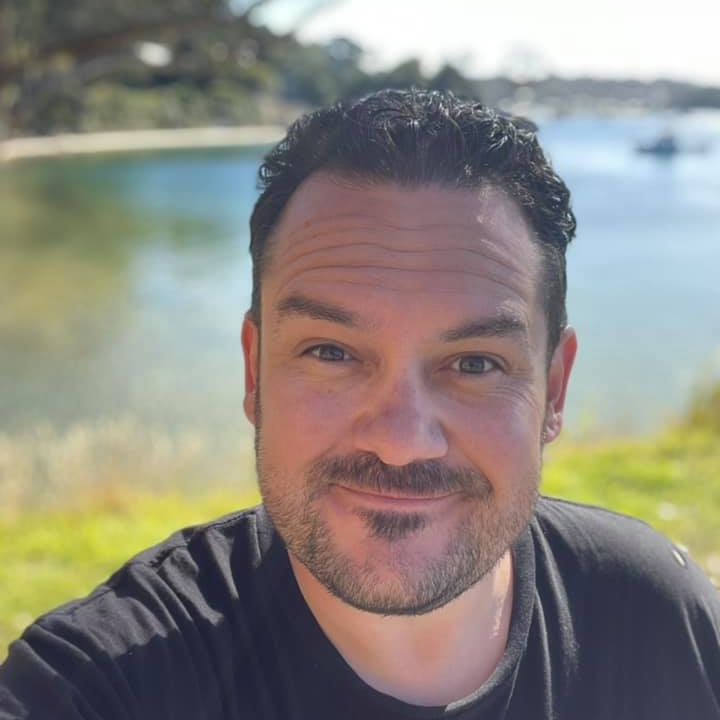
Guest Post by Stephen Martin, New Zealand
When I was first found to have dyslexia, I was about ten years old.
It wasn’t because I told my mum that words were moving on the page and in fact, that was never really my issue.
It was because I couldn’t copy words down off the blackboard and onto a piece of paper without getting a splitting headache.
I’d look up, then down, and the letters just wouldn’t stay still long enough to make sense.
It was exhausting.
That was the big sign for me that something wasn’t quite right.
Sure, I had spelling challenges too, but back then it was often brushed off as being “lazy” or “not trying hard enough.”
Luckily, someone saw past that and got me tested.
And that’s what’s wild because for so many of us, dyslexia doesn’t show up in just one way.
It’s not as simple as letters moving on a page.
The truth is, the visual side of dyslexia that most people think about, the swirling text, the jumping words and that’s only a small part of the story.
What often goes unseen is how dyslexia affects comprehension.
The hidden side of dyslexia
If you’ve ever read the same page three times and still couldn’t tell someone what it said, you’ll get this.
It’s like the words go in, but they don’t stick.
You might even start blaming yourself and thinking you’re lazy, distracted, or not focusing enough.
But you are focusing. Your brain’s just working differently.
People with dyslexia often think in pictures and stories, not words.
When we read, we don’t automatically “hear” the words in our heads like others do.
Instead, we translate them into visuals and into little movies.
That translation takes mental energy.
And by the time we’ve converted the words into meaning, we’re already tired.
So when someone asks, “What did that paragraph mean?” we draw a blank.
Not because we didn’t read it, but because our brain was busy doing the hard work behind the scenes just to make sense of it.

Why comprehension drains dyslexic brains
Reading isn’t something our brains evolved to do naturally and it’s a learned skill.
Most people’s brains eventually automate that decoding process.
But for many dyslexics, reading and comprehension use different neural pathways that take more effort to fire up.
It’s like running a race with a backpack full of bricks – you still finish, but it takes way more energy.
By the time you’ve decoded the words, you’ve got less energy left for understanding them.
That’s why it’s easy to reach the end of a page and realise you have no idea what you just read.
And it’s not just reading.
The same thing can happen when we listen.
When listening feels like reading
Ever listened to a podcast or an audiobook and found your mind wandering halfway through?
Then you suddenly realise you’ve missed ten minutes but can’t remember zoning out?
That’s the comprehension gap at work.
We hear the words, but they don’t all connect.
Our brains crave context think images, emotion, and stories to anchor the meaning.
That’s why dyslexic minds remember stories perfectly, but not the fine details.
Ask us what a book was about, and we might struggle.
Ask us what the main character went through, or what the scene looked like, we can tell you in vivid colour.
We don’t just remember information.
We remember experiences.
The cost of constant confusion
This comprehension challenge doesn’t just live in classrooms.
It follows us into adult life and into work meetings, emails, conversations, and relationships.
It can make you doubt yourself.
One moment you feel sharp, the next you’re lost.
And when you can’t quite grasp what’s being said, you start compensating, nodding along, pretending to understand, then piecing it together later.
That takes a huge emotional toll.
It’s why so many dyslexic adults describe feeling like they’re always behind and not because they can’t keep up, but because their brains are working twice as hard just to stay level.
But once you understand that comprehension is part of your dyslexia and not a personal flaw, you can start to work with it, not against it.
Three things that help when comprehension is the struggle
1. Use your picture brain on purpose
If your mind thinks in pictures, use it.
When you read something important, pause and see it.
Create a mini movie in your head.
The Davis® Mastery for Dyslexia actually teaches this – how to turn abstract words into real mental models so you understand what you read, not just recognise the words.
2. Slow down – speed isn’t understanding
We’ve been trained to read fast, as if speed equals intelligence.
But for dyslexic thinkers, comprehension lives in the pauses.
Slow reading lets your brain catch up and connect the visuals and that’s where meaning sticks.
3. Re-tell what you’ve read or heard
After reading or listening, try explaining it in your own words.
You don’t need to repeat it perfectly, just tell it like a story.
That act of storytelling helps your brain connect the language to your natural way of thinking – through pictures, emotion, and flow.
The bigger picture
Dyslexia isn’t just about reading and spelling.
It’s about how we make sense of the world.
We might not remember every sentence, but we see the big picture faster than most.
We connect patterns. We sense emotion. We understand people.
That’s comprehension too, just a different kind.
So if you’ve ever read a book and thought, “None of that stuck,” or listened to a talk and wondered where your brain went – take a breath.
You’re not broken.
Your brain just processes meaning in a way schools were never designed to measure.
And when you learn to work with that wiring – to use pictures, stories, and your natural way of thinking – comprehension finally starts to click.
Looking for help for Dyslexia? The Davis® Mastery for Dyslexia Program is suitable for all ages – yes, adults included!
If Stephen’s experience sounds familiar, you’re not alone.
The comprehension struggles he describes – reading without retaining, listening without connecting, constantly working twice as hard just to stay level – affect thousands of dyslexic adults and children.
The Davis® Mastery for Dyslexia program works with your picture-thinking brain, not against it. Through clay-based Symbol Mastery and orientation techniques, you learn to eliminate the confusion that causes words to slip away.
If you are unsure whether the The Davis® Mastery for Dyslexia program is right for you or someone you support, fill out the form below – one of our team will speak with you about your specific needs.
About the author
Stephen Martin, based in New Zealand, is the creator of The Truth About Dyslexia podcast, with nearly a million downloads worldwide. Diagnosed with dyslexia as a child and ADHD as an adult, Stephen shares raw, real stories about the neurodiverse journey and what it takes to thrive. He has worked with the Davis Method himself and is passionate about showing adults that dyslexia, ADHD, and autism are not just challenges, but part of a powerful mix of strengths. Find out about his Dyslexia & ADHD in adults podcast here or his new Added Sleep Supplement here.

Libraries across the country are recognizing the power of neurodiversity programming to create inclusive spaces for all learners. This summer, our own Nadine Schumont demonstrated this commitment when she was featured at Stratford Public Library’s “Voices of the World” program on July 23.
From Client Inspiration to Community Education
Nadine shared her book Owen’s Rainbow Mind: A Mysterious Summer of Discovery — a story inspired by her client Owen and his younger brother Caleb. The book follows their magical summer adventure sparked by a mysterious map. Guided by a wise old owl, Owen learns to embrace his picture-thinking mind and use his unique strengths.
The story reflects the core philosophy behind the Davis Method: thinking differently isn’t a deficit — it’s a gift.
Interactive Learning That Makes a Difference
During the library event, participants engaged in interactive activities designed to help them step into Owen’s world. This hands-on approach mirrors the Davis Method’s signature clay-based learning techniques that help neurodivergent learners master concepts through tactile, visual experiences.
Recent research shows that libraries nationwide are developing programming specifically for neurodivergent youth and their families, creating sensory-friendly environments and autism-inclusive early literacy services. These initiatives recognize that different minds require different approaches to learning.
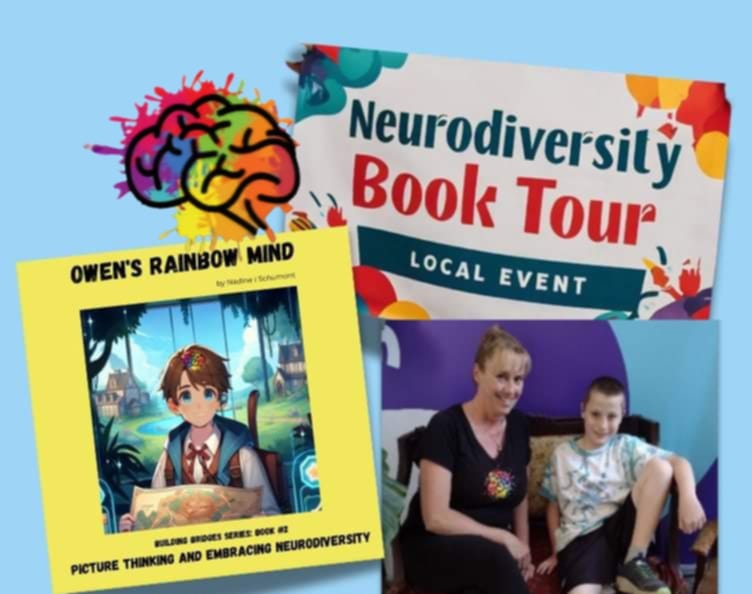
The Picture-Thinking Advantage
Neurodivergent individuals, including those with dyslexia, ADHD, and autism, tend to think non-verbally using mentally generated sensory impressions that can be visual, tactile, kinesthetic, or auditory. They are imaginative, creative, empathetic, and often solve problems by looking at the whole picture rather than working step-by-step.
This thinking style, which can seem challenging in traditional learning environments, becomes a superpower when properly understood and supported.
Beyond Accommodation: True Understanding
The Davis Method doesn’t rely on accommodations like special devices or medication. Instead, it teaches learners to:
- Master the orientation skills that eliminate confusion
- Create personal meaning for abstract concepts
- Use their natural picture-thinking abilities as learning tools
- Build permanent understanding rather than temporary fixes
The method is based on mastery — clients receive tools that enable them to master symbols and concepts that are foundations of learning and life. Once mastered, information is understood inherently and can transfer across situations and experiences.
Why Stories Matter
Owen’s story resonates because it shows a neurodivergent child discovering that being different is something to celebrate, not hide. Current research emphasizes the importance of books that promote respect and understanding for neurodiverse communities, advocating for positive learning environments that strive to make accommodations for all.
This aligns with our mission to help families understand that neurodiversity brings gifts alongside challenges.
Growing Recognition
Libraries are increasingly offering specialized programs for neurodivergent individuals, including sensory story times, neurodiversity clubs, and programming designed specifically for different learning styles. These programs recognize that traditional approaches don’t work for everyone.
The “Voices of the World” program at Stratford Public Library represents this growing awareness. By featuring stories like Owen’s, libraries help normalize different ways of thinking and learning.
The Davis Difference
As a Licensed Davis® Dyslexia Facilitator and Davis Autism Approach® Facilitator, Nadine brings unique insight to neurodiversity education. Nadine brings unique insight to neurodiversity education. Having completed the Davis® Program herself in 2018 after years of undiagnosed ADHD and dyslexia, she understands firsthand how life-changing this approach can be.
The Davis Method recognizes that dyslexic and many neurodivergent individuals are picture thinkers who experience perceptual disorientations in the senses of time, vision, hearing, and balance coordination. Nadine’s personal experience with these challenges allows her to connect with clients on a deeper level and guide them through their own transformation.
Rather than viewing these differences as problems to fix, the Davis approach teaches individuals to:
- Understand their unique learning style
- Develop self-regulation tools
- Master concepts through hands-on, creative methods
- Build confidence in their abilities
Looking Forward
Events like Nadine’s library presentation demonstrate the importance of community education about neurodiversity. When we share stories that celebrate different minds, we create a culture where all learners can thrive.
Whether you’re a parent, educator, or community member, understanding neurodiversity helps create more inclusive environments for everyone. After all, the world needs all kinds of minds — including rainbow minds like Owen’s.
Programs for Neurodivergent adults and those over the age of 8
Programs for Neurodivergent under the age of 8
Contact us
Math teachers routinely use multiple words for the same concept — add, plus, added to — switching between them naturally during lessons. But for dyslexic children, this seemingly simple language flexibility can create profound confusion.
A recent planning meeting with math teacher Geoffrey Ashiono highlighted this challenge and sparked a discussion about how Davis Method clay modeling can provide clarity where traditional teaching methods fall short.
The Language Confusion Problem
Math teachers naturally use synonymous terms interchangeably:
- Add or plus or added to
- Subtract or minus or take away
- Multiply or times or by
- Divide or share
While teachers understand these words mean the same thing, dyslexic children often don’t. When a teacher says “add” one minute, then “plus” the next, then “added to,” confusion sets in. Do they mean the same thing or different operations?
This uncertainty undermines mathematical confidence before calculations even begin.
Picture-Thinking Needs Context
Dyslexic learners are primarily picture-thinkers who benefit from concrete, visual representations. They need context and narrative to connect with learning — something that makes abstract concepts tangible and relatable.
Clay modeling provides exactly this foundation.
A Real Example: Watermelons and Addition
One 8-year-old learner came from a farm where they grew watermelons. The child loved watermelon, so his context for learning became watermelons. He also wanted to learn the meaning of “equal” — if his sister had three melons, he definitely wanted three melons too!
This personal connection became the foundation for understanding mathematical concepts.
Building Understanding Through Clay
First, establish the core concept:
Addition means “putting together” two or more quantities. When you add, you join something to something else so there is more. The “more” is crucial — it helps children realize the answer should always be bigger than the starting number.
Next, connect multiple terms to one meaning:
Using clay models, children learn that “add” has the same meaning as “plus” and that both connect to the + symbol. This gives certainty to children listening to mathematical language.
How the Clay Model Works
The child creates a visual representation using clay balls to represent quantities. For the equation 2 + 3 = 5:
Reading left to right: 2 plus 3 equals 5 Alternative reading: 3 added to 2 equals 5
Both phrasings use the same clay model and the same + symbol, making the connection clear.
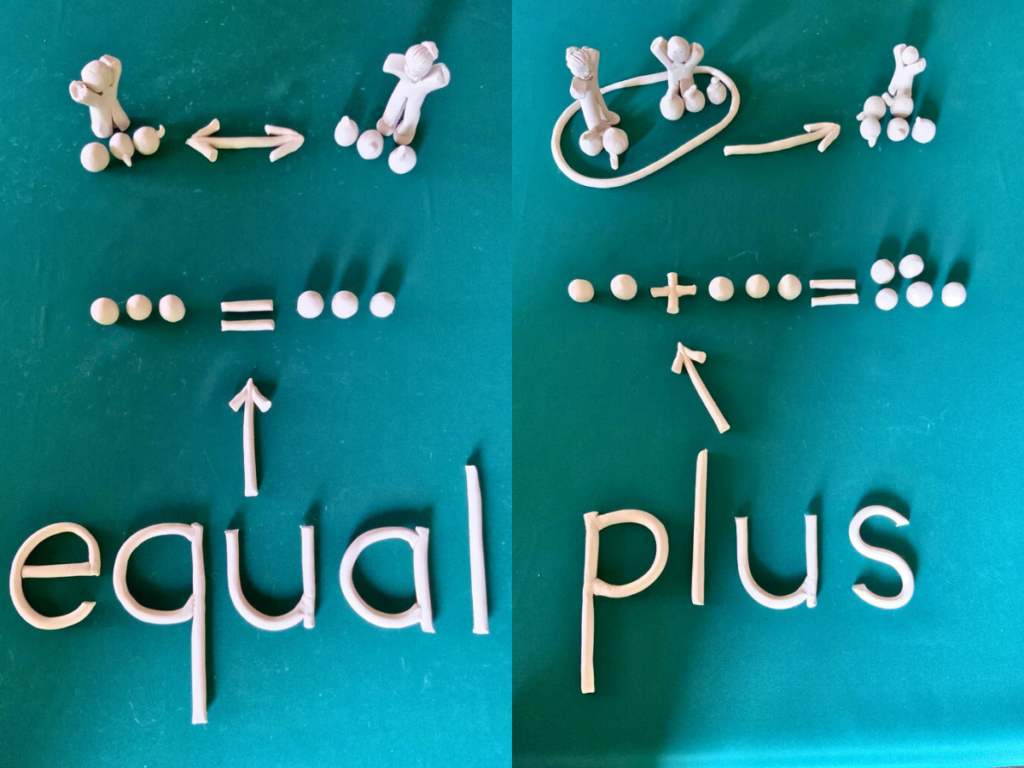
Connecting Symbols to Meaning
Mathematical symbols often confuse visual-spatial learners. Clay modeling addresses this by making abstract symbols concrete:
Where is the meaning of plus? → Point to the + sign Where is the meaning of add? → Point to the + sign
The physical model shows that different words point to the same symbol and concept.
The Summary Step
After creating the model, the learner takes control. They guide others through a summary of their clay work, pointing at the model while explaining the meaning. This active teaching role reinforces understanding and builds confidence.
Why This Approach Works
Picture-thinking learners need:
- Concrete representations of abstract concepts
- Personal context that makes learning relatable
- Multi-sensory engagement through hands-on creation
- Clear connections between different terms and symbols
- Active participation in explaining their understanding
Clay modeling provides all these elements while addressing the specific challenge of mathematical language confusion.
Beyond Addition
This approach works for all mathematical operations. Whether working with subtraction (minus, take away), multiplication (times, by), or division (divide, share), clay models help dyslexic learners understand that multiple words can represent the same mathematical concept.
The key is providing concrete, visual anchors for abstract mathematical language.
A Foundation for Success
When dyslexic children understand that mathematical terms are simply different names for the same operations, confusion decreases and confidence grows. They can focus on learning mathematics rather than decoding conflicting language.
This clarity becomes the foundation for mathematical success, allowing picture-thinking learners to engage with math using their natural strengths rather than struggling against language barriers.
Learn more about the Davis® Mastery for Dyslexia here, connect with Claire or find a Davis® Facilitator in your area.
Have questions? Contact us
When children consistently resist authority, refuse demands, or seem to oppose everything, parents and professionals often turn to labels like Oppositional Defiant Disorder (ODD) and Pathological Demand Avoidance (PDA). But what if these behaviors aren’t about defiance at all?
As both a parent of a child with ODD and PDA traits and a Davis facilitator, I’ve witnessed the complexity of supporting these children firsthand. This dual perspective has given me professional insight and deeply personal understanding of the daily challenges these families face.

The Hidden Crisis for Families
Parents of children with ODD and PDA often live in constant crisis mode, even when they don’t recognize it. The relentless cycle of conflict, avoidance, and defiance leaves families feeling powerless, isolated, and emotionally drained.
This chronic stress creates a psychological burden that:
- Undermines parental confidence
- Erodes sense of identity and stability
- Creates anticipatory anxiety around daily interactions
- Affects the entire family system
Parents function in survival mode without realizing it. This profoundly impacts their ability to support their child, themselves, and their wider family. Any effective support must address both the child’s missing conceptual foundations and the parents’ fragile emotional state.
Reframing Defiance: A Davis Perspective
The Davis approach offers a fundamental shift in understanding. Rather than viewing defiance as deliberate misbehavior, we recognize it as a child’s attempt to regain stability and control in an unpredictable world.
This reframes ODD from “willful bad behavior” to a protective strategy for children lacking internal anchors.
How the Mechanism Works
From a Davis perspective, ODD and PDA behaviors stem from disorientation — when children lack secure internal anchors like sequencing, cause and effect, time, or consequence. Without these concepts, the world feels chaotic and unpredictable, producing stress, anxiety, and helplessness.
To cope, many children create an imaginary system of control. In this inner world:
- Outcomes are predictable
- The child has agency
- They decide, protect, and control
This provides temporary stability.
The conflict emerges when external reality strips away that control. Adults set necessary rules and limits, but for children without strong cause/effect concepts, these boundaries feel arbitrary. Adult authority collides with the child’s internal script: “I am the one who decides.”
Defiance becomes self-preservation. Saying “no,” refusing, or arguing aren’t simply oppositional acts — they’re strategies to protect the inner world and ward off helplessness.
The Self-Reinforcing Cycle
This often creates a destructive pattern:
- Adults respond with sanctions or punitive language
- Children experience consequences as unjust (unable to link action and outcome)
- This confirms their belief that external reality is unfair
- Children retreat deeper into imaginary control
- Oppositional behavior strengthens
From the Davis perspective, this isn’t willful misbehavior but a protective strategy for managing overwhelming uncertainty.
Missing Conceptual Foundations
Children with ODD and PDA aren’t “choosing” defiance. Their behavior reflects gaps in essential life concepts. When these concepts are missing, rules feel random, consequences seem unfair, and relationships break down.
Key concepts that often play a role:
Change – Without it, transitions feel threatening; defiance protects against perceived instability
Cause/Effect/Consequence – Missing links make outcomes feel arbitrary; sanctions are experienced as injustice rather than learning
Before & After/Time – Weak sequencing makes requests like “homework first, then play” seem random; poor time sense fuels frustration
Order/Disorder – Structured environments feel arbitrary; chaotic ones overwhelming. Both provoke resistance
Fear – Without recognizing fear, defensive anger masks underlying anxiety
Responsibility/Control – Weakness makes self-regulation difficult; children feel controlled by others but unable to control themselves
Intention/Motivation – Misinterpreting motives creates mistrust; unclear motivation makes tasks meaningless
Energy – Difficulty pacing leads to swings between hyperactivity and exhaustion
Relationship/Trust/Agree/Rules/Belief – Missing these makes cooperation hard, rules feel unsafe, and agreement seems like submission
When these foundations are underdeveloped, the world becomes unpredictable and threatening.
Practical Davis Support Approaches
1. Building Predictability
Why it helps: Reduces anxiety around change and order
Tools: Orientation; Concept Mastery of Change, Time, Sequence and Order
Examples: Visual timetables; model “before” and “after”; practice transitions with Release and Ting to reduce stress
2. Strengthening Cause/Effect and Consequence
Why it helps: Helps children link behavior to outcomes, reducing feelings of unfairness
Tools: Concept Mastery of Cause, Effect, Consequence
Examples: Use natural demonstrations (plants growing, baking, switches) instead of punitive systems; reinforce logical links (spill water → wipe it up).
3. Developing Emotional Awareness and Regulation
Why it helps: Supports self-regulation and reduces overload
Tools: The Davis Dial; Concept Mastery of Emotions
Examples: Teach interoception cues; practice Dial adjustments in calm moments; co-regulate with Release or sensory tools
4. Offering Controlled Choices
Why it helps: Meets autonomy needs without unlimited control
Tools: Concept Mastery of Control, Want, Need
Examples: Give limited choices (“pen or pencil?” “wash up or vacuum?”); offer safe areas of full control, such as organising their desk.
5. Supporting Relationships and Rules
Why it helps: Rules make sense when grounded in trust and relationship
Tools: Symbol Mastery of Relationship, Trust, Agree, Rules
Examples: Phrase relationally (“Before coats on, after we go to the park”); co-create agreements with the child
6. Anchoring Morality in Understanding
Why it helps: Prevents rules being seen as arbitrary
Tools: Concept Mastery of Good, Bad, Right, Wrong
Examples: Use clay models to explore scenarios; reinforce mistakes as learning opportunities, not proof of being “bad.”
A New Understanding
By mapping ODD and PDA behaviors against the Davis Autism Approach® framework, we can reframe these conditions in a way that honors the child’s inner world while providing tools that anchor them more securely in reality.
Each concept mastered offers greater self-regulation, resilience, and trust in relationships.
This perspective moves us away from seeing ODD and PDA as behavioral disorders toward recognizing them as challenges of concept development and internal anchoring. With the right tools, children can gain the stability they need to thrive — without losing their creativity, individuality, or spirit.
Ask Tania anything about ODD and PDA, alongside 3 other Davis experts in Autism at our upcoming 2 day Autism weekend.
Day 1: December 6, 5:45 pm (GMT)
🎤 Dolores Gage (Madrid) – The Neurodivergent Thread: Why disorientation is the organising principle behind autism, dyslexia, and other neurodivergences — and how recognising it reveals both the challenges and the gifts of autistic thinking.
🎤 Cathie Geraci (Italy) – A powerful session on the world of non-speaking autism — how the Davis Autism Approach® helps restore calm and unlock communication.
🎤 Richard Whitehead (UK) – Ron’s Story: A first glimpse into “Dummy” — Ron Davis’s autobiographical journey from confusion to clarity, and how his discoveries became the foundation of the Davis Autism Approach®
🎤 Melanie Curry (New Zealand) – Missing Concepts and Individuation — Exploring the essential developmental concepts that underpin self-awareness, presence, and connection — and what happens when they’re missing.
Day 2: December 7, 8:30 pm (GMT)
Panel of Facilitators + Live Q&A — Tania Blackmore-Squires, Axel Gudmundsson, Mary Martin, Danette Moriarty
Real stories from Davis Autism Facilitators — how individuals and families are using the Davis tools to create life-changing progress. Includes open Q&A.
Have questions? Contact us
Fout: Contact formulier niet gevonden.
The Davis Method’s global reach expanded significantly in August 2025 when Davis UK & Ireland partnered with Dyslexia Tanzania to host two groundbreaking “Ask a Davis Expert” sessions. These live Zoom Q&A events brought together parents, educators, and neurodivergent adults seeking practical guidance grounded in the Davis approach.
The response exceeded all expectations.
First Session Sets the Standard
The inaugural session on August 5th drew strong attendance and lively engagement from across Tanzania. Three experts led the discussion:
- Richard Whitehead – Director of Davis UK & Ireland
- Rahma Amer Mbarak – Tanzania’s sole Davis Facilitator
- Caudence Ayoti – Founder of Dyslexia Tanzania
Questions flowed freely on topics including dyslexia, dyscalculia, ADHD, autism, and how Davis programmes can adapt to the Tanzanian context. Participants showed genuine hunger for information about alternative approaches to neurodiversity support.
The enthusiasm was so overwhelming that organizers immediately scheduled a follow-up session.
International Expertise Joins the Conversation
The second session on August 12th featured international Davis neurodiversity expert Cathie Geraci. While attendance was smaller, the quality of discussion remained high.
Participants showed particular interest in Davis solutions for non-speaking learners with autism. The demand for this specialized knowledge was so strong that Cathie committed to returning for a dedicated session planned for after mid-September.
The Heart of the Partnership
These events represent more than just information sharing. They mark the beginning of a purposeful collaboration between Davis UK & Ireland and Dyslexia Tanzania, with Rahma Amer Mbarak at the center.
Rahma’s unique position makes this partnership particularly powerful:
- Licensed Davis Facilitator and Davis Hub Member
- Board member of Dyslexia Tanzania
- Cultural bridge between international expertise and local needs
Her passion, credibility, and cultural grounding transformed this initiative from possibility into impact.
Building for the Future
The success of these initial sessions has sparked ambitious plans for expansion:
- Training Access – Discussions are underway to improve training opportunities for aspiring Davis Facilitators in Tanzania
- School Outreach – Targeted programmes for educational institutions are being developed
- Government Engagement – Plans include outreach to government SEN departments
- Ongoing Support – Regular expert sessions will continue to serve the growing community
Why This Matters
Tanzania’s neurodivergent population has historically had limited access to specialized support. Traditional approaches often don’t account for cultural context or local resources. The Davis Method’s focus on strengths-based, individualized support translates well across cultures.
These sessions demonstrate that geographic barriers don’t have to limit access to quality neurodiversity support. When passionate advocates like Rahma and Caudence connect with international expertise, real change becomes possible.
Recognition and Gratitude
The initiative’s success reflects the generous collaboration of all involved. Special recognition goes to Caudence Ayoti for her open and generous approach to partnerships of this kind. Her leadership at Dyslexia Tanzania created the foundation for this meaningful connection.
The willingness of Davis UK & Ireland experts to share their knowledge freely demonstrates the broader Davis community’s commitment to global accessibility.
Looking Ahead
These two sessions represent just the beginning. The momentum generated points toward a sustainable model for international Davis Method support that could extend well beyond Tanzania.
As discussions continue about expanded programming and training opportunities, one thing is clear: the appetite for alternative approaches to neurodiversity support exists worldwide. The challenge is creating sustainable ways to meet that demand.
The Tanzania partnership provides a promising template for how international collaboration can bridge expertise gaps while respecting local knowledge and cultural context.
The Davis UK & Ireland hub is dedicated to growing connections in Tanzania and beyond. Find out more about their programmes and partnerships at www.davismethod.co.uk.
Kuimarisha Uhusiano wa Kimataifa: Vipindi Viwili vya “Uliza Mtaalamu wa Davis” Vyachochea Mwitikio Tanzania
Mwezi Agosti 2025, Davis UK & Ireland iliungana na Dyslexia Tanzania kuandaa vipindi viwili vya moja kwa moja vya Uliza Mtaalamu wa Davis vilivyolengwa mahsusi kwa hadhira ya Kitanzania. Vipindi hivi vya wazi vya maswali na majibu kupitia Zoom viliwaleta pamoja wazazi, walimu, na watu wazima wenye utofauti wa neva waliokuwa wakitafuta mwongozo wa vitendo na majibu yanayotokana na mbinu za Davis.
Kipindi cha kwanza, kilichofanyika tarehe 5 Agosti, kilizidi matarajio kwa mahudhurio makubwa na ushiriki hai. Kikao hicho kiliongozwa na: Richard Whitehead, Mkurugenzi wa Davis UK & Ireland; Rahma Amer Mbarak, ambaye kwa sasa ndiye Fasiliteta pekee wa Davis nchini Tanzania; na Caudence Ayoti, Mwanzilishi wa Dyslexia Tanzania.
Maswali yalihusu mada mbalimbali zikiwemo dyslexia, dyscalculia, ADHD, autism, na jinsi programu za Davis zinavyoweza kubadilishwa ili kufaa mazingira ya Tanzania. Mwitikio ulikuwa wa kusisimua kiasi kwamba kipindi cha pili kilipangwa wiki iliyofuata, tarehe 12 Agosti — safari hii kikimshirikisha Cathie Geraci, mtaalamu wa kimataifa wa utofauti wa ujifunzaji kupitia mbinu za Davis.
Ingawa kikao cha pili kilikuwa na mahudhurio ya chini kidogo, kiwango cha maswali na mjadala kilikuwa cha juu. Washiriki walionyesha hamu kubwa ya kupata suluhisho la Davis kwa wanafunzi wasiozungumza (non-verbal) wenye autism — mada ambayo Cathie atarudi kuijadili katika kikao kingine kinachopangwa kufanyika baada ya katikati ya mwezi Septemba.
Ushirikiano Unaokua
Matukio haya yanaashiria mwanzo wa ushirikiano wenye matumaini na malengo mahususi kati ya Davis UK & Ireland na Dyslexia Tanzania, huku Rahma Amer Mbarak akiwa kiini cha ushirikiano huu. Rahma anashikilia nafasi muhimu katika mashirika haya yote mawili — kama Fasiliteta aliyeidhinishwa wa Davis, mwanachama wa Hub ya Davis, na mjumbe wa bodi ya Dyslexia Tanzania. Shauku yake, uaminifu wake, na uelewa wake wa kiutamaduni ndivyo vimefanya mpango huu kufanikiwa kwa namna ya kipekee.
Majadiliano sasa yanaendelea ili kuandaa matukio zaidi, kuboresha upatikanaji wa mafunzo kwa Watanzania wanaotamani kuwa Wafasiliteta wa Davis, na kuanzisha programu za uwamsho katika shule na idara za serikali za elimu maalum (SEN). Tunafurahishwa sana na maendeleo haya, na tunamshukuru kwa dhati Caudence Ayoti kwa mtazamo wake wa wazi na ukarimu katika kushirikiana kwenye miradi ya aina hii.
The Davis UK & Ireland hub is dedicated to growing connections in Tanzania and beyond. Find out more about their programmes and partnerships at www.davismethod.co.uk.
Guest Post by Stephen Martin
Stephen Martin is a leading voice in the adult dyslexia and ADHD space, best known as the host of The Truth About Dyslexia podcast — a raw, real, and relatable show that’s reached over 1 million downloads. Diagnosed with dyslexia as a child, Stephen now uses his lived experience and deep curiosity to empower neurodivergent adults through coaching, storytelling, and practical tools that actually work. He’s the founder of Truth About Dyslexia Coaching, where he helps adults shift from confusion to clarity using strategies tailored to the dyslexic mind.

Let’s talk about time. ⏳
Because if you don’t get time right, everything else starts falling apart.
I’m not just talking about being late to a meeting or missing a birthday. I’m talking about the way time can feel bent, malleable, or straight-up invisible when you’re dyslexic.
If you’ve lived with dyslexia or worked with adults who have, you’ll know exactly what I mean. Time is one of those invisible concepts we’re supposed to just get. But many of us don’t. And no one ever taught us how.
Time Isn’t a Straight Line for Us
For most people, time moves in a straight line. 10:00 am leads to 11:00 am leads to 12:00 pm. It’s structured, segmented, and measurable.
But for the neurodiverse brain? It’s not that simple.
I remember catching up with a friend recently. I could have sworn I’d seen her just a couple of weeks ago. She laughed and said, “Stephen, it’s been six months.”
And I believed her. But it still felt like two weeks in my head.
I’ve had business projects I thought would take six months, and 18 months later, I’m still knee-deep in them. I wasn’t being lazy. I wasn’t overpromising. I genuinely thought I’d nailed the timeline.
And that’s the challenge. Our brains can see the finished picture — vivid, clear, exciting — but that mental image doesn’t come with a realistic sense of how long it takes to build in the real world.
We see the vision. But we skip the ruler.
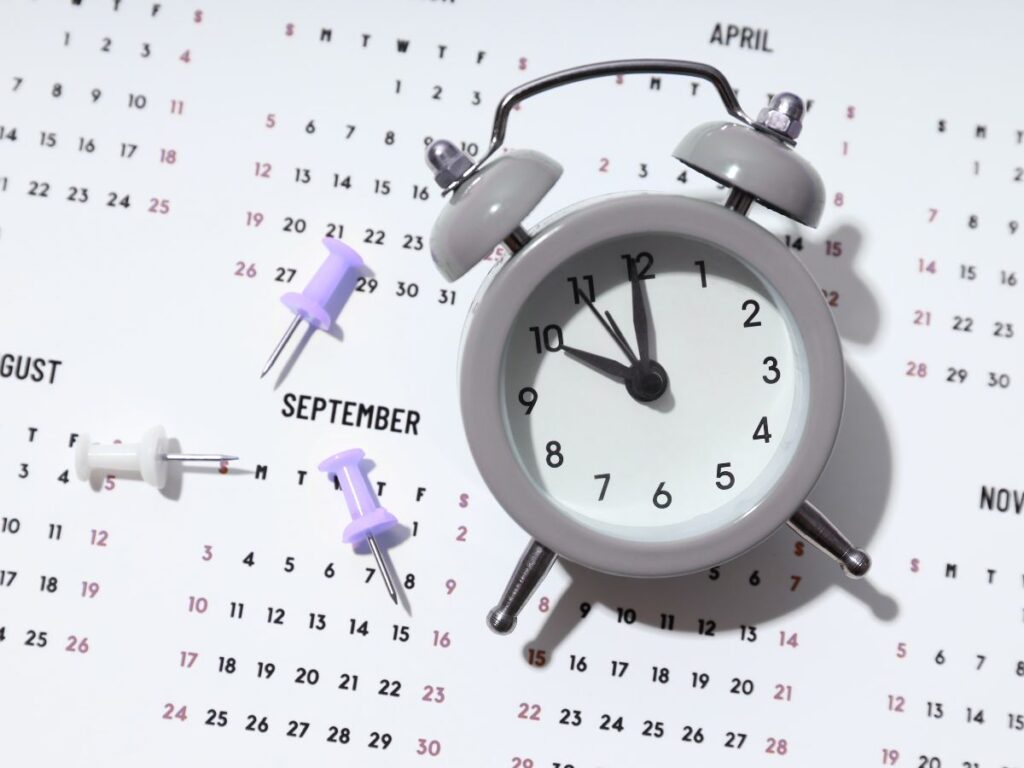
The Real Problem: We Feel Broken
If you’ve been told all your life that time management is a “basic skill,” and you can’t seem to nail it, you start to feel broken. You start saying things like:
• “I’m terrible with time.”
• “I’m just not organised.”
• “Why do I always underestimate everything?”
But what if it’s not that you’re broken… What if your concept of time was never properly developed?
That’s what I learnt when I did the Davis® Concepts for Life program. (Which, let’s be honest, should really be called the Davis Life Concepts for Humans — because it’s powerful for anyone neurodiverse.)
This was the first time someone had taken the abstract idea of “time” and actually helped me build it in 3D.
The Davis Way of Teaching Time
I don’t know about you, but I’ve read plenty of books about managing time. Some were helpful. Most weren’t. I’d remember one or two tips — maybe something like “use a timer” or “break tasks into chunks” — but the rest? Gone.
What Davis did differently was this: they didn’t just tell me about time… they made me experience it.
In the course, we looked at time not as a clock, but as a concept. A structure. A ruler for life.
Through the clay work and exercises, I wasn’t just learning time — I was building it, piece by piece, in a way that made sense to my dyslexic brain.
Suddenly, time wasn’t abstract anymore. It had form. It had weight. It had meaning.
And that meant I could use it.
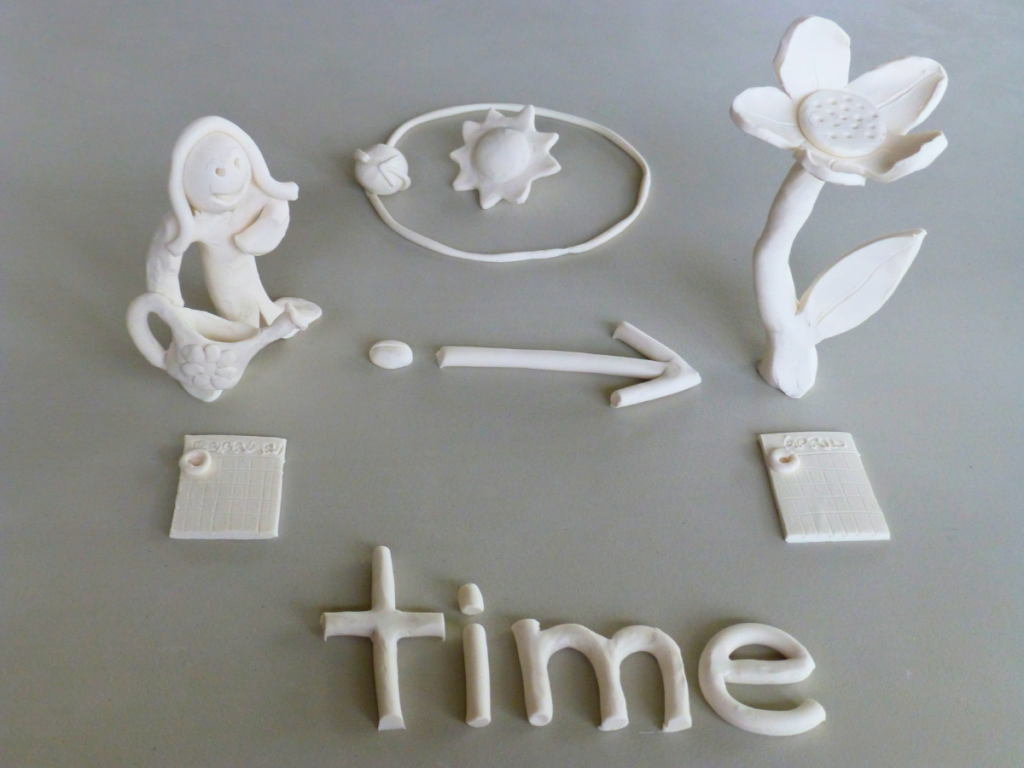
Why It Works for Dyslexic Adults
Most of us didn’t learn this stuff as kids. We just got told off for being late or unrealistic or “away with the fairies.”
But Davis doesn’t shame you. It shows you.
And here’s the kicker. Once you “get” time — not just as a word or number but as a functioning life tool — your whole life starts to shift.
• You stop overcommitting
• You stop underestimating
• You start finishing things you start
• You feel less guilty and more grounded
It doesn’t mean you suddenly become super rigid or perfectly punctual. I still work with my natural rhythms. But it gives you the structure to make real choices about how you spend your energy.
It’s Not Just About Productivity
Let’s be real. Time isn’t just about “getting stuff done.”
When you don’t understand time, you don’t understand rest either.
You might lie on the couch for three hours scrolling TikTok and then wonder why you still feel fried.
Understanding time helps you recover, not just schedule. It helps you regulate. It helps you get your needs met, especially if you’re juggling dyslexia, ADHD, anxiety, or the cocktail of neurodiverse companions many of us carry.
Time is not just a ticking clock. It’s a container for your life. And if that container is cracked or fuzzy or invisible… everything leaks.
What I’d Say to Facilitators Reading This
If you’re a Davis facilitator then thank you. Honestly. You’re doing the work most people don’t even realise is needed.
If you’re working with adults especially, don’t skip the concept of time. It can be a game-changer. It’s not just for people with time blindness. It’s for anyone who struggles to bring their internal visions into external reality.
Time is the bridge between the picture in your head and the life you want to live.
And the way Davis teaches it? It sticks. It lands. It lasts. 🙌
Want More?
Stephen Martin runs The Truth About Dyslexia, one of the top adult dyslexia podcasts in the world, with over 1 million downloads and counting.
If you’re looking for honest stories, neurodiverse hacks, and the kind of truth they never taught you in school, it’s worth a listen.
🎧 Listen here: Dyslexia Podcast
Or search The Truth About Dyslexia wherever you get your podcasts.
He’s also created a support space for dyslexic and ADHD adults called the Right Brain Reset. It’s a private community for people who want to make progress without burning out.
🧠 Learn more about ther Right Brain Reset Here
If you’re dyslexic and tired of doing it all alone, this might be the space you’ve been missing.
Want to know more about the Davis® Concepts for Life Program?
Find a Licensed Davis® Facilitator in your area or learn more about the program here. If you are unsure whether the Davis Concepts for Life program is right for you or someone you support, fill out the form below for a free Discovery Call – one of our team will speak with you about your specific needs.
Fout: Contact formulier niet gevonden.
After years of struggling with traditional executive function strategies that promised change but delivered frustration, many neurodivergent individuals and their families have discovered an approach that truly creates lasting transformation by addressing the root causes of executive function challenges.
The Davis Method represents a fundamental shift in how we understand and support executive function difficulties. Instead of managing symptoms with external tools and behavioral modifications, this approach builds the conceptual foundation that makes strong executive functioning possible.
The Davis Difference
The Davis Method was developed by Ron Davis, who experienced severe dyslexia and autism himself and understood from personal experience that learning differences stem from how the brain processes information. His breakthrough insight was that many learning and attention challenges arise from confusion about abstract concepts that most educational approaches assume people automatically understand.
When applied to executive function challenges, this insight reveals why so many traditional strategies fail: they’re built on assumptions about conceptual understanding that may not exist for individuals.

The Foundation of Executive Function – Abstract Concepts
At the heart of executive function lie several abstract and foundational concepts that most people take for granted:
Time: This is not about reading a clock, but truly understanding what time means, how it flows, and how to sense its passage.
Sequence: Understanding different types of sequences, what comes before and after, and how steps build upon each other, in order to prioritize and plan.
Cause and Effect: Grasping the relationship between actions and outcomes – positive and negative.
Order vs. Disorder: Recognizing patterns, understanding organization, and knowing how to create ‘order’ in different aspects of life.
Responsibility: Understanding the components that need to be present within self, in order to be able to take responsibility.
For many neurodivergent individuals, these concepts remain partially understood or completely confusing, despite being able to define them verbally. This gap between intellectual knowledge and true understanding creates the foundation for executive function struggles.

Making the Abstract Concrete with Clay
The Davis Method uses clay modeling to help individuals create concrete representations of abstract concepts. This hands-on approach allows people to literally build their understanding of time, sequence, cause and effect, and other foundational concepts.
Why clay? Because it engages multiple senses, allows for three-dimensional exploration, and enables people to manipulate and adjust their understanding until concepts become clear. For visual-spatial thinkers especially, this approach transforms confusing abstractions into tangible, understandable realities.
Stephen Martin, host of The Truth About Dyslexia podcast, describes his experience: “It felt like rewiring parts of my brain that had been running on guesswork for years. The clay work helped me understand concepts I thought I already knew but had never truly internalized.”

The Davis Concepts for Life Program: Individual Transformation
The Davis Concepts for Life Program provides intensive, one-on-one work with a trained Davis facilitator. Over the course of this individualized program, participants:
- Work through all of the Davis foundational concepts using clay modeling and hands-on learning
- Develop personalized tools for self-regulation and focus
- Practice applying new understanding to real-world situations
- Build lasting skills that support executive function across all areas of life
This individualized approach allows for complete customization to each person’s learning style, processing preferences, and specific goals and challenges.
The Davis Concepts for Life Workshop: Learning to Support Others
The Davis Concepts for Life Workshop teaches parents, professionals, and neurodivergent individuals themselves how to facilitate this transformational process for others, or to better understand themselves.
Over five intensive days, workshop participants learn:
- How to identify conceptual confusion underlying executive function challenges
- Clay modeling techniques for teaching abstract concepts
- Tools for supporting self-regulation, stress management, and energy regulation
- Strategies for building lasting organizational and planning skills
- How to create environments that support neurodivergent success
This workshop empowers attendees to become agents of change in their families, classrooms, or therapeutic practices.
Why the Davis Method Works When Others Don’t
Addresses Root Causes: Instead of managing symptoms, the Davis Method builds the conceptual foundation that supports natural executive functioning.
Works with Neurodivergent Strengths: The visual-spatial, hands-on approach aligns with how many neurodivergent brains naturally process information.
Creates Lasting Change: Once someone truly understands foundational concepts, they don’t need to rely on external supports—the skills become internalized.
Reduces Mental Load: Rather than adding more systems to remember and maintain, this approach eliminates the confusion that was creating executive function struggles in the first place.
Individualized and Flexible: The method adapts to each person’s unique processing style and learning needs.
What Participants Experience
Families and individuals who have experienced the Davis Concepts for Life program or workshop report:
- Improved time awareness and management without constant reminders
- Better emotional regulation during stressful or unexpected situations
- Increased ability to organize thoughts, belongings, and priorities naturally
- Enhanced planning and follow-through on tasks and goals
- Reduced anxiety around transitions and changes in routine
- Greater self-confidence and stronger boundaries
- Increased cognitive flexibility

Is the Davis Method Right for You?
The Davis Concepts for Life is particularly effective for individuals who:
- Have tried traditional executive function strategies without lasting success
- Are visual-spatial thinkers who learn better through hands-on experiences
- Experience executive function challenges alongside conditions like ADHD, autism, or dyslexia
- Feel exhausted by constantly managing external organizational systems
- Want to build foundational skills rather than just cope with symptoms
Your Path Forward
Whether you’re recognizing executive function challenges in yourself or someone you care about, we offer multiple pathways designed to meet different needs:
Want to Learn More First? Watch the replay of our webinar “Beyond the Struggle: Demystifying Executive Function for Neurodivergent Minds” featuring Mary Martin, Melanie Curry, Anne Mataczynski, and Anna Berghamre for additional insights before choosing your path forward. BONUS! Get our Free Executive Function Challenges Checklist to identify exactly where the gaps might be.
Individual Support: Work one-on-one with a trained Davis facilitator through the Davis Concepts for Life Program for personalized, intensive skill building. Find a Facilitator near you Facilitators Archive – Davis – English
Learn to Support Others (or Yourself): Join our Davis Concepts for Life Workshop to learn these life-changing techniques for your family, students, or clients.
Upcoming Workshops
October 10, 13, 17, 20, 24, 10:30 AM – 6:30 PM NZ / 8:30 AM – 4:30 PM AET Perfect timing for our Australia and New Zealand participants. Register now
November 3-7, 2025, 9am – 5pm British Standard Time – English, online. Register now
The Time for Real Change is Now
Executive function challenges don’t have to be a lifelong struggle managed through external systems and constant effort. The Davis Method offers a path to genuine transformation—one that builds from the ground up and creates lasting change by addressing the foundational concepts that support natural executive functioning.
If you’re ready to move beyond managing symptoms and start building real skills, we invite you to discover how the Davis Method can transform executive function challenges into strengths.
The journey to clearer thinking, better organization, and greater self-confidence begins with understanding. And understanding begins with the right approach.
Read post 2 in this series: The Davis Method: A Different Approach to Executive Function Challenges→
Want to book a Discovery call with us? Fill out the form below
Fout: Contact formulier niet gevonden.
You’ve probably tried them all: color-coded planners, phone alerts, reward charts, breaking tasks into smaller steps, and countless apps promising to revolutionize your organization. Yet somehow, you’re still struggling with the same executive function challenges. Sound familiar?
If you’re neurodivergent, whether you have ADHD, autism, dyslexia, or simply a brain that works differently, you’ve likely discovered that traditional executive function strategies often fall short. But it’s not because you’re doing something wrong. The problem lies in how these strategies are designed.
The One-Size-Fits-All Problem
Most executive function interventions are designed for neurotypical brains. They assume that everyone processes information, manages attention, and regulates emotions in similar ways. But neurodivergent brains operate with different strengths, challenges, and processing styles.
Consider the common advice to “use a planner.” For someone with ADHD, the planner might become another source of overwhelm rather than organization. For an autistic individual, rigid planning systems might increase anxiety when unexpected changes occur. For someone with dyslexia, traditional written planning methods might not align with their visual-spatial strengths.

Surface Solutions for Deep Challenges
Traditional approaches typically focus on external supports and behavioral modifications—essentially trying to patch over executive function difficulties without addressing their root causes.
What traditional strategies look like:
- Time management apps and reminder systems
- Breaking large tasks into smaller steps
- Color-coding and visual organization systems
- Reward and consequence charts
- Mindfulness and meditation practices
- Cognitive behavioral therapy techniques
While these tools can provide temporary relief, they often fail to create lasting change because they don’t address the fundamental issue: difficulty understanding and internalizing abstract concepts that form the foundation of executive functioning.
The Abstract Concept Gap
Here’s what many professionals don’t realize: executive function challenges often stem from lack of clarity around abstract concepts like time, sequence, cause and effect, order, and responsibility.
For example, telling someone to “manage their time better” assumes they have a clear, internalized understanding of what time is and an accurate perception of the passage of time. But for many neurodivergent individuals, time remains an abstract, confusing concept. They might intellectually know that an hour has 60 minutes, but they lack the accurate experience of time that makes effective time management possible.
Similarly, consequences and rewards systems assume someone truly understands cause and effect relationships. Without this foundational understanding, external behaviour modification techniques often feel arbitrary and fail to create meaningful change.
Why Neurodivergent Brains Need Different Approaches
Different Processing Styles: Neurodivergent brains often process information in unique ways. Visual thinkers might struggle with purely verbal instructions, while those with working memory challenges need different approaches than those with attention regulation difficulties.
Sensory Considerations: Many neurodivergent individuals have sensory processing differences that can impact executive functioning. Traditional strategies rarely account for how sensory overwhelm or seeking behaviors affect organization and planning abilities.
Motivation and Interest: Neurodivergent brains often have different motivation patterns. What works as a reward or consequence for neurotypical individuals might not resonate with someone whose brain operates differently.
Masking and Compensation: Many neurodivergent individuals become skilled at masking their difficulties or developing elaborate compensation strategies. Traditional approaches might reinforce these exhausting patterns rather than addressing underlying challenges.

The Fatigue Factor
Perhaps most importantly, traditional executive function strategies often increase rather than decrease mental load. When you’re constantly relying on external systems, reminder alerts, and complex organizational schemes, you’re using enormous amounts of mental energy that could be directed elsewhere.
Many neurodivergent individuals report feeling exhausted by the end of the day, not from their actual work or activities, but from the constant effort required to navigate systems that don’t match how their brains naturally function.
What Neurodivergent Brains Actually Need
Instead of more external supports and behavioral modifications, neurodivergent brains often need:
Conceptual Understanding: Deep, internalized understanding of specific concepts that support executive functioning, rather than surface-level strategies.
Individualized Approaches: Solutions that work with, rather than against, natural processing styles and strengths.
Foundation Building: Addressing root causes rather than managing symptoms.
Simple self-regulation tools: Effective techniques that are quick and easy to use in any situation to ensure focus, stress management and energy regulation.
Sustainable Strategies: Approaches that reduce rather than increase mental load over time that remain meaningful and useable.
The Davis Concepts for Life Program provides one-on-one support and was developed specifically to address these needs, using hands-on learning techniques that help individuals truly understand and internalize the concepts that support strong executive functioning.
Moving Beyond Band-Aid Solutions
If you’ve been frustrated by traditional executive function strategies, know that it’s not a reflection of your effort or ability. You simply need an approach that’s designed for how your brain actually works.
The Davis Concepts for Life Workshop supports parents, professionals, teachers, and support workers—to facilitate this transformation process for others. It is also life changing for individuals to attend who are struggling with executive function. Whether you’re supporting someone you care about or seeking tools for your own executive function challenges, by the end of this workshop you’ll have the skills to guide someone through nearly 50 key concepts and 3 simple self-regulation tools that form the foundation of strong executive functioning.
Ready for a Different Approach?
Join hundreds who’ve watched our expert panel on executive functioning. Get the replay plus our comprehensive assessment checklist – both free for a limited time. Watch now→
Join us for upcoming workshops where you’ll learn why the Davis Method succeeds where traditional approaches often fall short:
October 10, 13, 17, 20, 24, 10:30 AM – 6:30 PM NZ / 8:30 AM – 4:30 PM AET Perfect for participants in Australia and New Zealand. Register now →
November 3-7, 2025, 9am – 5pm British Standard Time. English, online. Register now →
In our final post of this series, we’ll explore exactly how the Davis Method creates lasting change by addressing the foundational concepts that support strong executive functioning—and why this approach is revolutionizing how we understand and support neurodivergent brains.
←Read previous: Understanding Executive Function: The Brain’s CEO That Controls Your Daily Life
Read next: The Davis Method: A Different Approach to Executive Function Challenges→
Have questions? Contact us
Fout: Contact formulier niet gevonden.

Executive function might sound like corporate jargon, but it’s actually one of the most crucial aspects of how your brain operates daily. Think of it as your brain’s “CEO”—the system that manages planning, organizing, focusing, and regulating emotions. When these skills work smoothly, life feels manageable. But when executive function struggles emerge, even simple tasks can become overwhelming sources of stress and frustration.
Want to know more about how executive function can affect daily life? Watch the replay of our webinar “Beyond the Struggle: Demystifying Executive Function for Neurodivergent Minds” featuring Mary Martin, Melanie Curry, Anne Mataczynski, and Anna Berghamre for additional insights before choosing your path forward. BONUS! Get our Free Executive Function Challenges Checklist to identify exactly where the gaps might be.
What is the Best Definition of Executive Function?
Executive function refers to a set of mental skills that include working memory, flexible thinking, and self-control. These skills help us focus attention, remember instructions, juggle multiple tasks successfully, and regulate our emotions and behaviour. Essentially, executive function is what allows us to plan ahead, stay organized, and adapt when things don’t go as expected.
The Three Main Components of Executive Function
Understanding executive function becomes clearer when we break it down into its three core components:
Working Memory
Working memory is your brain’s ability to hold information front of mind while using it. It’s what allows you to remember a phone number long enough to dial it, or follow multi-step instructions without losing track. When working memory struggles, people might forget what they were doing mid-task or lose track of important details.
Mental Flexibility (Cognitive Flexibility)
This is your brain’s ability to switch between thinking about different concepts or adapt when rules change. Mental flexibility helps you transition from one activity to another, see problems from different angles, and adjust when unexpected changes occur. Without it, people may get “stuck” in routines or have difficulty when plans change unexpectedly.
Inhibitory Control (Self-Control)
Inhibitory control helps you resist impulses, stay focused, and think before acting. It’s what stops you from interrupting others, helps you stick to a task even when it’s boring, and allows you to consider consequences before making decisions. When this system struggles, people may act impulsively or have difficulty controlling their emotional responses.
Why Are Your Executive Functions So Important?
Executive functions are foundational skills that make everything else possible. They’re what allow you to:
- Complete tasks from start to finish
- Manage time effectively
- Organize your thoughts, belongings, and priorities
- Control your emotions during stressful situations
- Make plans and follow through with them
- Learn from mistakes and adjust your approach
Without strong executive function skills, daily life becomes an uphill battle. Work projects remain unfinished, relationships suffer from emotional outbursts, and the constant struggle to stay organized creates ongoing stress and anxiety.

What Causes Poor Executive Functioning?
Poor executive functioning can stem from various factors:
Neurological Differences: Different learning styles (picture thinkers), neurodivergent brains, ADHD, autism and dyslexia often involve executive function challenges. The regions of the brain responsible for these skills may develop differently or function in unique ways for neurodiverse individuals.
Brain Injury or Trauma: Traumatic brain injuries, strokes, or other brain-related medical conditions can impact executive function abilities.
Stress and Mental Health: Chronic stress, anxiety, depression, and trauma can significantly impact executive functioning, making it harder to focus, plan, and regulate emotions.
Developmental Factors: Some people may not have had opportunities to develop strong executive function skills during childhood, or may have missed learning key foundational concepts that support these abilities.
Is Poor Executive Function ADHD? Autism? Or Something Else?
This is a common source of confusion. Poor executive function isn’t a diagnosis itself—it’s a characteristic that can appear across many different neuro-types:
- ADHD frequently involves executive function challenges, particularly with attention, impulse control, and working memory
- Autism often includes executive function differences, especially around mental flexibility and transitions
- Dyslexia can involve working memory and organizational challenges
- Anxiety disorders can significantly impact executive functioning abilities
- Learning disabilities often co-occur with executive function struggles
However, executive function challenges can also exist independently without a formal diagnosis. Some people simply have brains that work differently and need targeted support to develop these crucial skills.
How Do You Fix Poor Executive Function?
The good news is that executive function skills can be improved, but the approach matters significantly. Traditional strategies often focus on external supports and behavioural modifications – things like planners, reminder systems, and time management techniques.
While these tools can be helpful, they don’t address the underlying issue: difficulty with abstract concepts that form the foundation of executive functioning.
The Davis Concepts for Life Program takes a different approach by helping individuals truly understand and internalize abstract concepts like time, sequence, cause and effect, and responsibility. Using hands-on, clay-based learning techniques, people develop a solid conceptual foundation that supports lasting executive function improvements.
Can Executive Functioning Skills Be Taught?
Absolutely! Executive functioning skills can be taught and strengthened at any age. However, the most effective approaches go beyond surface-level strategies to address the foundational concepts that support these skills.
The Davis Concepts for Life Workshop teaches parents, professionals, teachers, and support workers—as well as individuals struggling with executive function themselves—how to build these foundational skills using proven techniques that make abstract concepts concrete and understandable. Whether you’re supporting someone you care about or seeking tools for your own executive function challenges, by the end of this workshop you’ll have the skills to guide someone through nearly 50 abstract concepts that form the foundation of strong executive functioning.
Read the next post in this series: Why Traditional Executive Function Strategies Don’t Work for Neurodivergent Brains
Ready to Dive Deeper?
Now that you understand what executive function is and why it’s so crucial for daily life, you might be wondering: “What does this look like in real life, and how can it be addressed?”
We recently hosted an expert panel discussion where licensed Davis facilitators explored these exact questions. You’ll discover:
- How to distinguish between normal behavior and actual executive functioning challenges
- Why neurodivergent brains struggle with tasks that seem “simple” to others
- Real success stories from families who’ve found lasting solutions
- How the Davis approach differs from traditional strategies
Watch the replay now and get our FREE Executive Function Challenges Checklist – a comprehensive tool to help you identify specific areas where you or your loved one might need support.
Have questions? Contact us
Fout: Contact formulier niet gevonden.
Guest post by Stephen Martin, The Truth About Dyslexia Podcast, New Zealand
Why you’re not broken, and how Davis helped me finally get it.
Ever been told a word and just… snapped?
Not because the word was rude.
But because your brain went “What the heck does that even mean?”
And suddenly your whole nervous system feels like it’s on fire?
Welcome to the world of dyslexia and trigger words.
But here’s the twist,
When Ron Davis talks about trigger words, he’s not talking about emotional triggers.
He’s talking about non-picture words.
Words like:
the, if, was, because, even, though, should, could, would.
Words that don’t have a picture in your mind.
And if you’re a dyslexic thinker who processes through images and visuals…
That’s like asking your brain to solve a puzzle with half the pieces missing.
These are the real “trigger” words.
They don’t just confuse us, they disorient us.
We might be reading a sentence fine, then hit one of these invisible words and
💥 Boom, brain fog, misreading, skipping lines, mental exhaustion.
It’s like our brain steps out of sync with reality.
And the worst part?
We blame ourselves.

“Just focus.” Yeah, right.
For years I thought I was lazy.
I heard “just try harder” and “you’re not paying attention” more times than I can count.
But what I’ve come to learn, through the Davis Dyslexia Method, is that my brain was trying.
It just didn’t have the right tools.
Davis gave me a map.
It helped me understand disorientation, that moment where your sense of time, space and meaning twists up.
It’s not you being “bad at reading”, it’s your brain spinning because it’s trying to make sense of a word it can’t picture.
And here’s the kicker,
When you learn how to orient yourself, things start to click.
Reading becomes clearer.
Thinking becomes calmer.
Life starts making more sense.
Dyslexia isn’t a solo act.
Here’s the thing no one told us growing up,
Dyslexia often brings friends.
ADHD, Autism, Anxiety, Emotional storms.
They’re branches of the same neurodiverse tree.
And guess what? The Davis tools can help there too.
For me, the Life Concepts course was a lifeline.
The Attention Mastery program could be helpful for many too.
You’re not broken. You were never taught the rules.
So if you’ve ever felt:
• Like your brain switches off mid-sentence
• Like a simple word trips you up
• Like you “should” be better at this by now…
Please hear this:
You’re not overreacting.
You’re running a powerful brain, without the manual.
There’s a better way.
And the Davis approach changed everything for me.
Want to know more?
✅ Take the Dyslexia Quiz — quick and eye-opening
🎧 Check out my Truth About Dyslexia podcast, raw, honest, and all the things school never taught us
📚 Read The Gift of Dyslexia by Ron Davis, it’s a game changer
P.S. If you’ve ever blamed yourself for being confused by “the” or “was”… you’re not alone. You’re dyslexic. And that’s nothing to be ashamed of.
Inspired by Stephen’s story?
If you’re an adult looking for support, you can find a Davis Facilitator near you and explore how the Davis Concepts for Life® program or Davis Mastery for Dyslexia program could help you or someone you care about.
Or, if you’d like to guide someone through the program yourself — and even take the first step toward becoming a Licensed Davis Facilitator — join an upcoming Concepts for Life Workshop or upcoming Gift of Dyslexia Workshop to gain the tools and training to make a real difference.
About the Author: Stephen Martin
Stephen Martin is a leading voice in the adult dyslexia and ADHD space, best known as the host of The Truth About Dyslexia podcast — a raw, real, and relatable show that’s reached over 1 million downloads. Diagnosed with dyslexia as a child, Stephen now uses his lived experience and deep curiosity to empower neurodivergent adults through coaching, storytelling, and practical tools that actually work. He’s the founder of Truth About Dyslexia Coaching, where he helps adults shift from confusion to clarity using strategies tailored to the dyslexic mind.

Story by Theano Panagiotopoulou – Davis Facilitator, Αθήνα, ΑΤΤΙΚΗ, Greece
Client age: 26 years old
Profession: Environmental Scientist
K.D. had been diagnosed as dyslexic, with dyscalculia and attention deficit from the age of third grade elementary. Her memories during her school life are characterized by an intense feeling of failure. Being fired from her first job was the catalyst for her decision to attend the Davis Dyslexia program.
Her goal was one: “to see what I read.”
During the program we addressed the full spectrum of dyslexia and everything it contains in terms of emotions and fears. When she heard the word “reading” she felt fear and shame. As soon as K.D. received the alignment tool, she immediately said she felt “certainty.” With the koosh balls she was impressed that she could maintain her balance, catch the balls and not become disoriented. When we finished the program, in evaluating the results she said the characteristic phrase: “I don’t know if I’ll manage to work properly, but my feeling is that it was like I was drunk and someone gave me coffee to drink.”
We met with Despina one month after the program and I observed the following important points:
- She did the mastery program EVERY DAY
- She improved her handwriting tremendously
- She considered that she was between 2 worlds (the old and new self)
- She decided to study her aerial photography course, which she was AFRAID to even touch because she didn’t understand it at all, and she found that she no longer had this difficulty. On the contrary, she could completely understand what she was reading.
- She sent an email without checking it “thousands of times” because she was confident about what she had written
She continues her training. She got a job a month ago. She feels confident and secure. All this change is also intensely visible in her presence – “she has become more beautiful.”
🇬🇷 Greek:
Ηλικία : 26 ετών Επάγγελμα : Περιβαλλοντολόγος Η Κ.Δ. είχε διαγνωσθεί ως δυσλεξική, με δυσαριθμησία και διάσπαση προσοχής από την ηλικία της Τρίτης Δημοτικού. Οι αναμνήσεις της κατά την διάρκεια της σχολικής ζωής της χαρακτηρίζονται από ένα έντονο συναίσθημα αποτυχίας. Η απόλυσή της από την πρώτη της δουλειά ήταν η αφορμή να αποφασίσει να παρακολουθήσει το πρόγραμμα της Δυσλεξίας Davis.
Ο στόχος της ήταν ένας: «να βλέπω αυτό που διαβάζω».
Κατά την διάρκεια του προγράμματος αντιμετωπίσαμε όλο το φάσμα της δυσλεξίας και ό,τι αυτό περιέχει σε συναισθήματα και φόβους. Όταν άκουγε την λέξη «ανάγνωση» αισθανόταν φόβο και ντροπή. Μόλις η Κ.Δ. πήρε το εργαλείο της ευθυγράμμισης, είπε αμέσως ότι αισθάνθηκε «σιγουριά». Στα koosh balls τής έκανε εντύπωση που μπορούσε να κρατάει την ισορροπία της, να πιάνει τα μπαλάκια και να μην αποπροσανατολίζεται. Όταν τελειώσαμε το πρόγραμμα, στην αξιολόγηση των αποτελεσμάτων είπε την χαρακτηριστική φράση: «Δεν ξέρω αν θα τα καταφέρω να δουλέψω σωστά, αλλά η αίσθησή μου είναι ότι ήταν σαν να ήμουν μεθυσμένη και μου έδωσε κάποιος να πιώ καφέ».
Συναντηθήκαμε με την Δέσποινα ένα μήνα μετά το πρόγραμμα και είχα να παρατηρήσω τα εξής σημαντικά σημεία: · Έκανε το πρόγραμμα της κυριαρχίας ΚΑΘΕ ΜΕΡΑ · Βελτίωσε πάρα πολύ την γραφή της · Θεωρούσε, ότι βρίσκεται ανάμεσα σε 2 κόσμους (τον παλιό και τον καινούργιο εαυτό) · Αποφάσισε να διαβάσει το μάθημα της αεροφωτογραφίας, το οποίο ΦΟΒΟΤΑΝ να ακουμπήσει καν, διότι δεν το καταλάβαινε καθόλου και διαπίστωσε, ότι δεν είχε πλέον αυτή την δυσκολία. Αντίθετα, μπορούσε να καταλάβει απόλυτα αυτά που διάβαζε. · Έστειλε ένα e-mail χωρίς να το ελέγξει «χιλιάδες φορές» , διότι ήταν σίγουρη γι’ αυτό που είχε γράψει Συνεχίζει την προπόνησή της. Έπιασε δουλειά εδώ και ένα μήνα. Αισθάνεται σίγουρη και ασφαλής. Όλη αυτή η αλλαγή φαίνεται έντονα επίσης στην παρουσία της, «έχει ομορφύνει».
When the Neurodiversity Show 2025 was unexpectedly cancelled, families seeking autism support and dyslexia intervention faced a significant gap. The Davis UKIE team responded swiftly, organizing Davis Neurodiversity Online on May 9th and 10th, 2025 — bringing together parents, educators, and professionals from across the globe for two intensive days focused on practical autism support, dyslexia strategies, and neurodivergent parenting solutions.
Expert Autism Support and Dyslexia Intervention Sessions
Led by experienced Davis Facilitators and internationally recognized autism specialists, the comprehensive programme demonstrated the real-world impact of Davis dyslexia methods, ADHD strategies, and autism intervention techniques across multiple areas: dyslexia support for adults, early literacy intervention, attention management for children, autism communication strategies, and evidence-based parenting approaches for neurodivergent families.
Session Highlights and Key Takeaways
🌟 Richard Whitehead — Adult Dyslexia: The Hidden Struggles
Richard explored a critical issue in adult dyslexia support: how high-ability dyslexic adults often develop sophisticated masking strategies, leading to chronic under-identification and profound misunderstanding of their learning needs. His dyslexia intervention session revealed how Davis assessment tools can uncover these hidden struggles and provide targeted support for authentic learning breakthroughs in adults with dyslexia.
In his follow-up session, Dyscalculia Treatment: Maths Makes Sense Now, Richard offered evidence-based insight into addressing dyscalculia through structured Davis methodologies, showing participants how mathematical concepts can become accessible for individuals with learning differences.
🌟 Axel Gudmundsson — ADHD Management: Disability or Gift? and Neuroinclusive Literacy Strategies
Drawing on decades of educational experience, Axel challenged conventional perspectives on ADHD while providing both strategic ADHD management frameworks and practical classroom applications for children with attention differences. His sessions equipped teachers and parents with transformative approaches to ADHD challenges and evidence-based literacy development for neurodivergent learners.
🌟 Carl Nigi — Adult Dyslexia Diagnosis: A Personal Journey
As both a late-diagnosed dyslexic adult and certified Davis Facilitator specializing in adult dyslexia support, Carl offered a uniquely authentic perspective on the long-term impact of undiagnosed learning differences and the transformative potential of appropriate dyslexia intervention — demonstrating that adult dyslexia treatment can create meaningful change at any age.
🌟 Sue Hall — Early Literacy with Davis Learning Strategies
Sue presented practical, immediately implementable strategies for integrating Davis tools into early education settings, showing how neurodivergent learners can achieve success from the beginning with structured, supportive approaches.
🌟 Cathie Geraci — Autism Communication: Supporting Non-Speaking Autistic Individuals
In a particularly moving session on autism support, Cathie demonstrated sensitive, respectful approaches to meaningful communication with non-speaking autistic individuals, illustrating how the Davis Autism Approach can unlock communication pathways and foster genuine understanding between families and autistic children.
🌟 Tessa Halliwell — Autism Self-Regulation: Pain, Purpose and Potential
Combining lived autism experience with professional expertise, Tessa explored the complex emotional landscape of autism, showing how Davis methods can support gentle self-regulation techniques and help autistic individuals discover their unique strengths and purpose while managing autism-related challenges.
🌟 Elizabeth Currie Shier — Parenting Neurodivergent Children: Strategies for Success
Elizabeth provided compassionate, research-informed parenting strategies specifically designed for families with neurodivergent children, helping parents transition from daily crisis management to long-term strength-building and family resilience when parenting children with autism, ADHD, or dyslexia.
🌟 Live Q&A Panels — Expert Autism and Dyslexia Support
Two interactive panel sessions allowed participants to engage directly with autism specialists and dyslexia experts, addressing real-world questions about autism intervention, adult dyslexia support, ADHD management, and parenting strategies for neurodivergent families. These sessions proved invaluable for personalized guidance and community connection around specific learning differences.
Global Impact: Autism Support and Dyslexia Intervention Feedback
The response from our international audience seeking autism support, dyslexia intervention, and parenting guidance was overwhelmingly positive, with participants consistently highlighting the depth of autism expertise, clarity of dyslexia strategies, and immediate practical relevance of ADHD management techniques. Comments praised the compassionate approach to neurodivergent parenting and real-world applicability that characterizes all Davis autism and dyslexia work.
The Davis Approach: Proven Autism and Dyslexia Methods
What distinguishes these autism support and dyslexia intervention insights is their foundation in the groundbreaking work of Ronald D. Davis, whose methods emerged from his own lived experience with dyslexia and learning differences. This unique perspective continues to offer an empowering, strength-based approach to autism support and dyslexia treatment that resonates deeply with neurodivergent individuals and their families.
The Davis approach recognizes that autism, dyslexia, ADHD, dyscalculia and dysgraphia are not deficits to be corrected, but different ways of processing information that, when properly understood and supported through evidence-based autism intervention and dyslexia strategies, can become sources of significant strength and creativity.
Future Autism and Dyslexia Training Events
Plans are already underway for future Davis autism support and dyslexia intervention events, with our next comprehensive programme featuring autism specialists, dyslexia experts, and ADHD management training scheduled for late September 2025. The success of this rapid-response conference has energized our team and demonstrated the global demand for accessible, expert-led neurodivergent parenting education and adult support.
Access and Availability
🎥 All session recordings remain available with unlimited replay access, allowing participants to revisit content and share insights with colleagues, family members, and support networks.
Article by Dolores Gage
We’re excited to share that Davis® methods are now being introduced to a global audience through the #1 international bestselling book The Perfectly Imperfect Family: Real Solutions for Mindful Parents Navigating Today’s Biggest Challenges.
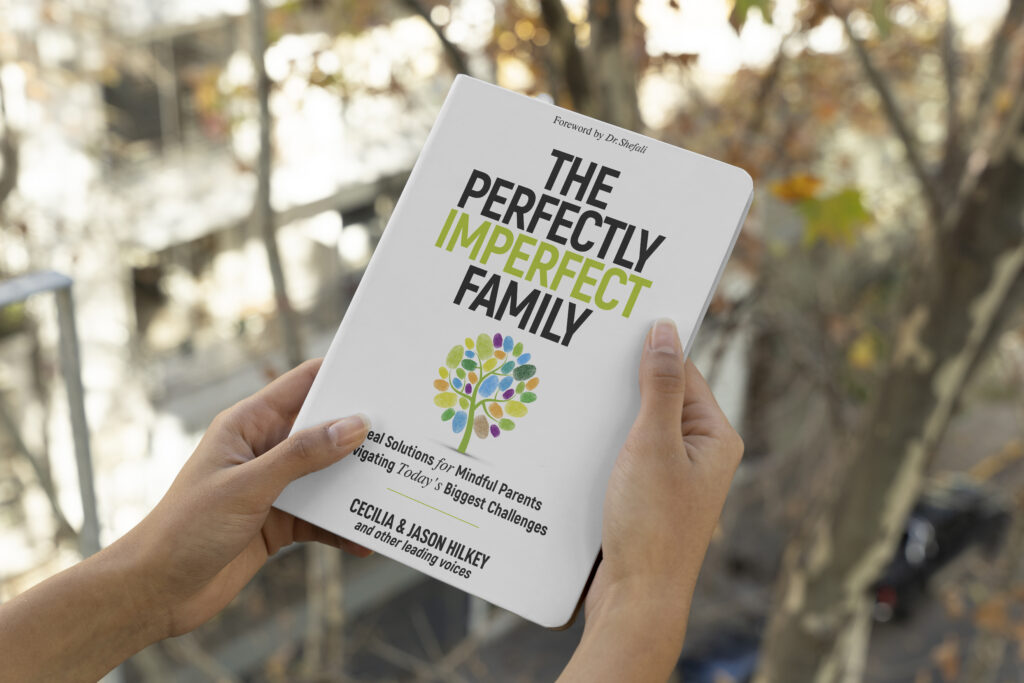
The book features a dedicated section on Neurodiversity and the chapter that opens it, “NEWrodiversity: Minds Decoded, Potential Unlocked,” was written by Davis® Facilitator Dolores Gage. It explains how our unique thinking style can lead to challenges like dyslexia and ADHD, and how the Davis approach helps individuals of all ages understand and overcome those challenges by addressing the root cause.
Thanks to this collaborative book project, the Davis message is now reaching readers across the world — and in a big way:
📚 The Perfectly Imperfect Family became a #1 Bestseller in:
- 🇦🇺🇳🇿 Australia & New Zealand — #1 in 16 categories
- 🇧🇷 Brazil — #1 in 5 categories
- 🇨🇦 Canada — #1 in 13 categories
- 🇫🇷 France — #1 in 4 categories
- 🇩🇪 Germany — #1 in 8 categories
- 🇮🇳 India — Top rankings in 8 categories
- 🇮🇹 Italy — #1 in 2 categories
- 🇲🇽 Mexico — #1 in 1 category
- 🇳🇱 Netherlands — #1 in 3 categories
- 🇪🇸 Spain — #1 in 10 categories
- 🇬🇧 UK — #1 in 10 categories
- 🇺🇸 USA — #1 in 17 categories
🌟 That’s a total of 175 Bestselling Categories — with 89 of them hitting #1! 🌟
This incredible exposure is helping more parents and professionals discover that neurodivergent minds aren’t broken. They simply think and learn differently. Davis methods show that these challenges are not lifelong labels, but rather solvable puzzles, and that real transformation is possible.
If you’re curious about how the Davis approach works, or if you’re ready to explore a programme for yourself or your child, you can find a trained Davis Facilitator near you via the Facilitator Directory on our website.
And if there isn’t someone nearby, don’t worry: many Facilitators work online, and several offer travel options as well.
Together, we’re helping more people understand the root causes of learning differences and offering clear, strengths-based solutions that transform lives.
Article by Sue Hall
In 2023, The Whole Dyslexic Society (WDS) heard that the Ministry of Education and Child Care in British Columbia, was inviting new opportunities for the professional development of Early Childhood Educators

One of our WDS Board, Julie Brewer, who is a Montessori Early Childhood Educator had attended a Davis Learning Strategies for K-3 teachers Workshop and adapted the tools and strategies for her pre-school 3-5 yr olds…with incredible and unexpected success. All the children learned to relax, to control their energy levels, to focus, and master their alphabet letters individually… regardless of their innate learning style.
This success gave us the courage to apply and to our shock and delight, we were awarded the grant! It was a RUSH ! Acceptance arrived in August 2023, paperwork was signed in October and the whole pilot had to be completed by the end of January 2024. No pressure!
We built the pilot course, NeuroInclusivity for Early Years, around the Davis Learning Strategies and it attracted an incredible response from the ECEs… 60 enquiries within one week! Who wouldn’t want their children to self-manage for free? We conducted interviews, our Administrator got everyone familiar with the Thinkific e-learning platform and then it was all systems go!
Accessibility, ECEs with very little spare time and no funding for substitutes led us decide on live webinars which we recorded and placed on their Thinkific accounts. The modules pre the two day Davis Learning Strategies for Early Years Workshop explained why learning challenges arise and the history of DLS. Julie and I adapted the DLS for K-3 Manual and we were thrilled when Stacey Smith agreed to deliver both the online and in person workshops. Both were successful but the in person had the extra fun and community element.
ECEs then completed weekly Assignments, for Release, Dial, Focus and Koosh ball toss respectively. Some ECEs got to individual Letter Mastery in the time frame. Julie compiled completed assignments into a Google Evaluation form and the colourful pie charts confirmed it was a huge success.
Some of the ECEs want to continue to the end of June and some are even planning their next academic year.
I have attended a great deal of professional development and this was by far, the most inspiring, engaging and applicable by a long shot.
The children have ownership in the atmosphere of their classroom and can help themselves, friends, and teachers to kindly check on each other.
The release technique in particular has been a game-changer for our group of 20 kids. The difference in attention for our circle times since using release has been absolutely incredible!
So what now? The Ministry of Education and Child Care has our report, and so far radio silence, but we (the WDS) are determined more ECEs have this opportunity. We know that these tools can ensure that those who might have been seen to learn differently, never have a learning disability label attached to them.
We are deeply grateful to all those who took part in a very exciting, profoundly beneficial professional development pilot. Hugs all round 😊thank you.
How the Davis Method Transformed Professional and Personal Life
Sixteen months after completing both the Davis Mastery for Attention and Davis Mastery for Dyslexia programs, adult client L.B. shares how these interventions transformed not just his reading and focus, but his entire professional and personal life.

The Challenge: Dyslexia Holding Back Professional Success
L.B. came to us with clear professional goals that dyslexia was preventing him from achieving. He needed to function effectively in workplace situations, handle required paperwork and online training courses, and overcome the overwhelming hurdle that writing had become in his life.
“My goals were to be able to function in a job/school/professional situation and not have dyslexia hold me back. Things like being able to handle forms/paperwork or required online safety courses that require reading. I didn’t want writing to feel like a huge hurdle anymore.”
Beyond reading and writing, L.B. also struggled with focus, spelling, information retention, time management, and calendar use – challenges that significantly impacted his daily life and career prospects.
L.B.’s reading ability improved from an estimated grade 5 level with great difficulty to grade 8+ independent reading level.
“Before the program, my reading was strained, full of mistakes, and took a lot of effort. By the end of the program grade 8 was ‘independent’ level, and we probably could have done grade 9 level reading too!”
L.B’s Life changing results from the Davis Programs
Professional Success
- Can handle government documents with confidence
- Reads and understands complex financial materials
- Perfect attendance record at work
- Trusted with opening the worksite daily
Cognitive Improvements
- Dramatically improved focus and attention
- Better verbal instruction comprehension
- Enhanced reading comprehension
- Effective time management skills
Emotional Healing
- Overcame reading-related trauma
- Restored self-esteem
- Better social anxiety management
- Improved present-moment awareness
“As far as reading goes, I can get through government documents, and the other day I was reading about finances, stocks and bonds and investing, and I was able to UNDERSTAND what I read!”
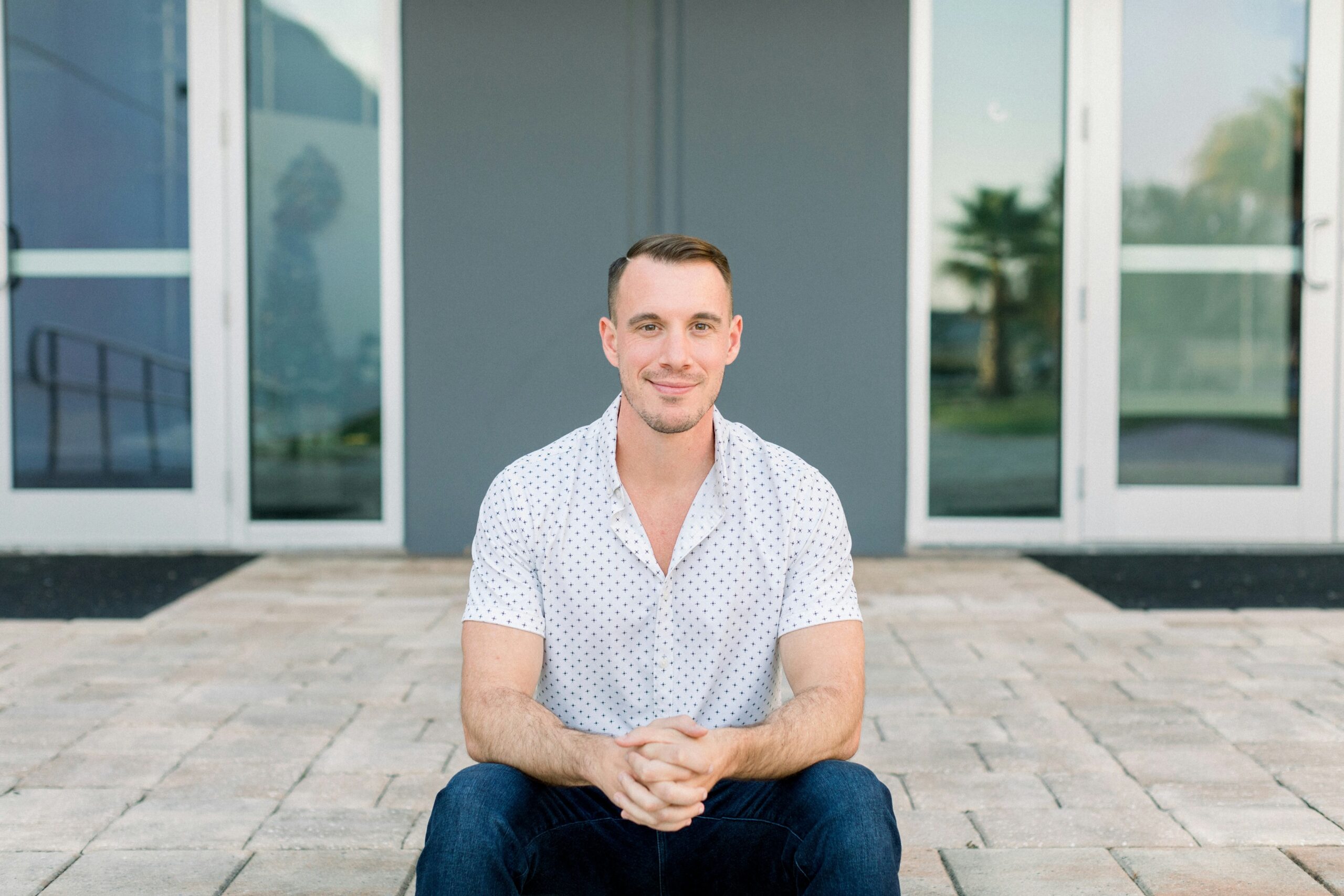
Breakthrough Moments and Unexpected Benefits
One of the most powerful aspects of L.B.’s transformation was learning to manage his attention and mental focus:
“I didn’t expect to be able to see so clearly. Now when I get lost in my thoughts, staring off into the void in my mind (that state where it feels like 5 minutes have gone by but it’s been 5 hours), just having the hands and that part, being able to pull myself out of this void of thought has been unexpected, and also so helpful.”
The Davis Method’s unique approach to alignment and focus provided L.B. with practical tools he continues to use in challenging situations:
“Even the other day when I was in a room full of people talking and I felt social anxiety, being pulled everywhere, I remembered the hands, got focused, and then it didn’t matter anymore, I felt calm and could handle it.”
Healing from Educational Trauma
Beyond the practical improvements, L.B. experienced profound emotional healing from past educational trauma:
“I also had a lot of trauma related to reading from my early years. At one point having the letters of the alphabet in clay in front of me made me feel like my head was underwater, it was so overwhelming. It was incredibly empowering to be able to let go of those negative memories and take control. Once I did that the feeling stopped, and I felt like my self-esteem was restored. It was a very healing experience.”
L.B’s Final Thoughts
“I’m really grateful for this Davis training. Being at work and remembering my point of balance and focus has been so monumental to me. To be present for life unfolding is the greatest gift. I look forward to receiving the rest of the skills to feel like I have the capacity to bring what’s in my heart to life by creating my dreams.”
Transform Your Life with Davis Programs
L.B.’s success story demonstrates the life-changing potential of the Davis Method for adults struggling with dyslexia and attention challenges.
Davis® Mastery for Dyslexia program Davis® Mastery for Attention program Find a facilitator
Start your journey with Davis
At just 12 years old, T.R. faced a reality that many children with dyslexia know all too well: “I’m 12 and I don’t even know how to write.” His teachers would send him to the hallway to “think about it,” leaving him feeling isolated and frustrated. But T.R.’s story is a powerful testament to how the right approach can transform a child’s entire relationship with learning.
The Struggle: When Traditional Methods Fall Short
Before discovering Davis dyslexia programs, T.R.’s educational experience was marked by confusion and discouragement. His writing looked like “a bunch of blob letters,” his G’s appeared backwards, and traditional paper-and-pencil learning methods weren’t helping him advance at all. Like many children with dyslexia, T.R. possessed incredible creativity and intelligence, but the conventional classroom approach couldn’t unlock his potential.
“They would just like sort of put me out in the hallway and say, ‘you’ll think about it, T.R.,'” he recalls. This isolation is unfortunately common for children struggling with learning differences, often leading to decreased confidence and motivation. But T.R.’s natural artistic abilities, his love for Lego, clay, and drawing, would soon become the key to his transformation.
The Davis Difference: Hands-On Learning That Works
What makes dyslexia help through the Davis approach so effective is its recognition that children like T.R. aren’t broken, they’re wired differently. The program tapped into T.R.’s existing strengths, particularly his visual and tactile learning preferences. “I really like doing the program because it let me really interact with the skills that I already had,” T.R. explains.
The Davis Mastery for Dyslexia program uses clay modeling to help students understand sight words in a three-dimensional, experiential way. For T.R., this method was “up my alley already” because it combined his love of building and creating with essential literacy skills. Instead of staring at flat letters on paper, he could sculpt, touch, and manipulate words until they made sense.
Creative Breakthroughs: When Learning Becomes Art
One of T.R.’s favorite clay models was the word “else,” which allowed him to “combine two worlds together” by creating an alien talking to itself about people from “another place.” This creative interpretation demonstrates how the Davis approach encourages students to use their imagination as a learning tool rather than suppressing it.
T.R.’s description of his “dials”, his mental focus tools, shows his sophisticated understanding of attention control. He compares them to “Tesla thingamabobbers… like that blue glowing futuristic thing,” illustrating how he can now visualize and control his focus in ways that make sense to his creative mind.
Remarkable Results: From Blob Letters to Clean Writing
T.R is now is now a confident learner, “I barely make any mistakes now,” he proudly shares. His handwriting evolved from illegible “blob letters” to “clean letters” that aren’t scattered everywhere. His backwards G’s are a thing of the past, and he’s developed remarkable speed and accuracy in his work.
Perhaps most importantly, T.R. has learned to overcome creative blocks, what he calls “word blocks”, by developing strategies like asking family members for ideas and combining concepts to spark his own creativity. This problem-solving approach extends far beyond just writing, giving him tools he can use throughout his life.
Practical Wisdom: Tips from a Young Expert
T.R. offers valuable advice for other children facing similar challenges: “If you have patience, you can do anything.” He’s discovered that consistent daily practice with clay words builds both speed and confidence, with some easier words taking him just two minutes to complete.
His self-motivation strategies are equally impressive. Rather than relying solely on external rewards, T.R. treats himself for completed work, whether that’s drawing time or other activities he enjoys. This internal motivation is crucial for long-term success and confidence building.
A Message of Hope for Families
T.R.’s journey from educational isolation to confident learning offers hope for families seeking effective dyslexia help. His advice to parents considering the program is clear: “If you’re doing this at a younger age, this is really useful. So you won’t really end up like suffering.”
The Davis dyslexia programs teach more than reading and writing, they teach you how to leverage natural strengths and creativity. For visual, hands-on learners like T.R., this approach can mean the difference between educational struggle and genuine academic confidence.
As T.R.’s story shows, with the right support and methods, children with dyslexia can transform their perceived weaknesses into genuine superpowers. The key is finding an approach that honors how they naturally learn and think.
Take the next step today:
- Find a Licensed Davis Facilitator in your area – Our experienced professionals provide personalized, one-on-one support tailored to your child’s specific needs
- Contact us directly to learn more about the Davis Mastery for Dyslexia program and how it can help your child
Don’t let your child struggle in silence like T.R. did. With the right support, they too can go from “blob letters” to confident writing, from educational isolation to academic success. Contact us today to begin your child’s transformation journey.
A Davis Mastery for Dyslexia Success Story: Real Results for Real Families
Alex’s story is one that resonates with countless families navigating the challenges of dyslexia. Before discovering the Davis Mastery for Dyslexia program, school was an uphill battle. Reading felt impossible, staying focused seemed out of reach, and Alex’s incredible imagination, capable of taking him to the moon, the sun, and every planet in the solar system, felt more like a distraction than a gift.
But what if that vivid imagination wasn’t the problem? What if it was actually the solution?
The Challenge: When Attention Becomes Elusive
For many children with dyslexia, traditional learning methods can feel like trying to fit a square peg into a round hole. Alex described how his mind would “leave the brain” during reading, floating off to imaginary places like “Kokomo” until his mental vacation was over. This isn’t defiance or lack of effort, it’s how many visual, creative minds naturally operate when not given the right tools.
Here’s an expanded section that incorporates information about Licensed Davis Facilitators and the Davis Mastery for Attention program:
The Challenge: When Attention Becomes Elusive
For many children with dyslexia, traditional learning methods can feel like trying to fit a square peg into a round hole. Alex described how his mind would “leave the brain” during reading, floating off to imaginary places like “Kokomo” until his mental vacation was over. This isn’t defiance or lack of effort—it’s how many visual, creative minds naturally operate when not given the right tools.
Attention difficulties or ADHD often accompany dyslexia, not because these children can’t focus, but because their brains are wired to process information differently. They need learning approaches that match their natural thinking patterns. As said by Dr. Edward (Ned) Hallowell, “ADHD is like having a Ferrari for a brain… with bicycle brakes”. This metaphor highlights the powerful, yet sometimes challenging, nature of ADHD, suggesting that individuals with ADHD possess a high-potential “engine” but may struggle with impulse control or focus.
Comprehensive Support from Licensed Davis Facilitators
What makes the Davis approach unique is that Licensed Davis Facilitators are trained to address both dyslexia and attention challenges through specialized programs. While Alex participated in the Davis Mastery for Dyslexia program, families dealing with attention difficulties can also access the Davis Mastery for Attention program, which uses similar hands-on, experiential methods to help children gain control over their focus.
Licensed Davis Facilitators understand that these learning differences often overlap and require individualized approaches. They work one-on-one with students to identify their unique strengths and challenges, creating personalized learning strategies that turn potential distractions, like Alex’s vivid imagination, into powerful learning tools. Whether a child struggles primarily with reading, attention, or both, a Licensed Davis Facilitator can provide the specialized support needed to unlock their full potential.
The Breakthrough: Clay, Creativity, and Connection
The Davis Mastery for Dyslexia approach recognizes that children like Alex aren’t broken, they’re brilliant. Instead of fighting against Alex’s imagination, the program taught him how to harness it. Through hands-on clay modeling, Alex could literally sculpt sight words, seeing and feeling them “all the way around” rather than just staring at flat text on a page.
“Clay is amazing,” Alex explains with genuine enthusiasm. “You could sculpt clay models of the words… you could use your imagination.” This experiential, tactile approach transformed learning from a struggle into something exciting, something Alex actually looked forward to.
Real Results: Beyond Just Academic Improvement
The changes in Alex go far beyond better test scores. His handwriting improved dramatically. His spelling became more accurate. But perhaps most importantly, his confidence soared. “Everything’s getting better. Pretty much everything,” he shares with a smile.
Alex learned to control his wandering attention, keeping his “mind focusing with his brain” during reading. His imagination, once a source of distraction, became a powerful learning tool.
Hope for Families Seeking Help for Dyslexia
Alex’s transformation offers hope for families searching for effective help for dyslexia. His story demonstrates that with the right approach, children with dyslexia can not only overcome their challenges but actually leverage their unique strengths.
As Alex enthusiastically tells other struggling students:
“When you’re done with this program, you’ll become smarter, maybe smarter than your mother or father… You may think this is going to be a boring, boring thing, but when you actually do it, it actually turns out amazing.”
For visual, creative learners like Alex, the Davis Mastery for Dyslexia program doesn’t just teach reading—it teaches children how to transform their greatest challenges into their most powerful assets.
Ready to discover your child’s learning superpowers? Contact us to learn more about how the Davis approach can help your family’s journey with dyslexia.
Start your journey today, contact us
Guest post by Stephen Martin
About Stephen:
Stephen Martin is a leading voice in the adult dyslexia and ADHD space, best known as the host of The Truth About Dyslexia podcast — a raw, real, and relatable show that’s reached over 1 million downloads. Diagnosed with dyslexia as a child, Stephen now uses his lived experience and deep curiosity to empower neurodivergent adults through coaching, storytelling, and practical tools that actually work. He’s the founder of Truth About Dyslexia Coaching, where he helps adults shift from confusion to clarity using strategies tailored to the dyslexic mind.

My Davis Dyslexia Experience as an Adult
Hey there, I’m Stephen Martin, host of The Truth About Dyslexia podcast. If you’ve found this page while looking for real answers about dyslexia in adults or searching for an adult dyslexia podcast that actually speaks your language, you’re in the right place.
Today, I want to talk about something that changed the way I see myself and how my brain actually works — the Davis Mastery for Dyslexia Program. But before we get into the nuts and bolts of the course, I want to share how I even got to the point of needing it.
Diagnosed Young… Then Forgot About It
I was diagnosed with dyslexia at age 10. I was in a private school at the time, and to be honest, I was lucky. Dyslexia wasn’t officially recognised in New Zealand’s school system until around 2007. So to be picked up in the mid-90s was rare.
My mum was my absolute hero. Like many mums of dyslexic kids, she fought tooth and nail for me. She helped me get a Reader/Writer for high school exams, which, around 2000, was pretty rare, and that gave me a real leg-up.
But once I left school, I did what so many of us do. I put dyslexia in a box and shoved it under the bed. I figured if I just worked harder, pushed myself enough, and stayed positive, I’d be fine. Turns out, that’s not quite how it works.
A Pub Chat That Changed Everything
I was about 32 when my dad brought it up again. We were at the pub, having a beer, and he asked, “Do you think your dyslexia might be behind some of the stuff you’re struggling with in life?”
I did what any proud adult (and smart arse son) would do – I ignored him. Multiple times.
But he didn’t let up. Eventually, he found a Davis Dyslexia practitioner who lived walking distance from my house. That kind of luck doesn’t happen often. He kept at me until I messaged her.
It took five text follow-ups from her before I responded. Like many dyslexics, I was stuck in the fog. But eventually, I got myself to her house for an initial consultation.
That’s when everything shifted.
The Builder That Didn’t Exist
During our session, she noticed my eyes drift off and asked what I was thinking about. I told her I was picturing the builder hammering on her deck outside.
She asked, “Have you ever seen my deck? Or met my builder?”
I said no.
She smiled and explained that I had just created an entire scene in my head, a detailed, vivid, and completely made-up experience and believed it was real.
That moment hit hard. It made me realise just how often I’d trusted mental stories that weren’t rooted in anything real. Stories about myself. About others. About the world.
That was the hook. I was in.

The Davis Concepts for Life
When I first heard about the Life Concepts course, I was more than happy to invest in myself. And honestly, it was worth every cent.
The amount of one-on-one time you get with a facilitator is incredible. And once you get over the fact that you’re learning using clay-yes, actual clay, the depth of what you uncover is profound. It feels childlike at first, but it unlocks things that traditional education never came close to.
I worked with a fantastic facilitator named Vanessa Victor, and I honestly can’t thank her enough. She made me feel seen, respected, and supported throughout the whole process. And I know there are other amazing Davis facilitators out there who care deeply about every client they work with, whether child or adult.
The course itself uses real-life examples and practical application to teach you how to internalise core concepts that so many of us missed growing up. Things like time. Sequence. Cause and effect. Responsibility.
It sounds obvious, but it’s not. Just because you can say the word “consequence” or nod when someone talks about “cause and effect” doesn’t mean you’ve actually embodied what it means. And that’s the magic of this course.
It was like filling in invisible gaps in my foundations, the kind of knowledge you didn’t even know you were missing until someone pointed a light at it.
I can’t do justice to what happens in that room with clay and a brilliant facilitator. But I can tell you it felt like rewiring parts of my brain that had been running on guesswork for years.
What Changed for Me
After going through Davis, I began to:
- Understand how I process information (and why that matters).
- Spot the stories I was creating in my mind that weren’t actually true.
- Feel more grounded, like my internal compass finally had a north.
- Let go of the shame of not “getting” things others seemed to know automatically.
But most of all, I stopped trying to fix myself and started learning how to work with my brain instead of against it.
If You’re An Adult With Dyslexia…
Let me be straight with you: you’re not broken. You’re not lazy. And you’re definitely not alone. Whether you were diagnosed at school or only recently started wondering about it, the Davis approach is one of the most empowering things I’ve ever done, especially for adults who are ready to make sense of the messy, often overwhelming parts of life that never quite clicked.
If you’re looking for a safe place to keep exploring this stuff, come check out my podcast, The Truth About Dyslexia. It’s raw. It’s honest. And it’s made for people who think in pictures and feel like school never really taught them the tools they needed
Looking to explore more about dyslexia in adults?
Start listening to Stephen’s Podcast: The Truth About Dyslexia, or visit his website for core resource page for adult dyslexia for practical support and real stories.
Inspired by Stephen’s story?
If you’re an adult looking for support, you can find a Davis Facilitator near you and explore how the Davis Concepts for Life® program or Davis Mastery for Dyslexia program could help you or someone you care about.
Or, if you’d like to guide someone through the program yourself — and even take the first step toward becoming a Licensed Davis Facilitator — join an upcoming Concepts for Life Workshop or upcoming Gift of Dyslexia Workshop to gain the tools and training to make a real difference.
Got questions?
Contact us
Celebrating three decades of turning learning struggles into lifelong gifts
The Discovery That Changed Everything
Thirty years ago, Ron Davis published a book that changed how the world understands dyslexia.
What started as one man’s journey from 38 years of illiteracy became a global movement. This movement has helped millions of people across more than 40 countries.
The Gift of Dyslexia revealed what others failed to see: dyslexia isn’t a disability. It’s a different way of thinking. When you understand it properly, it becomes an extraordinary gift.
Today, our services reach over 30 languages worldwide. Our research-backed methods have helped countless people discover their true potential.
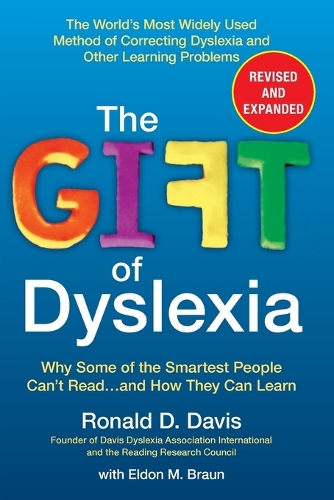
Ron Davis: From Struggle to Breakthrough
Ron Davis was born with what we now call severe autism. Doctors labeled him “uneducable and mentally retarded.”
For the first nine years of his life, he had no awareness of the world around him.
When awareness came, it brought terror. He suddenly had to learn in a system that wasn’t designed for minds like his.
The turning point came at age 17.
An IQ test revealed Ron was a genius. He scored 137 points.
By age 27, after using clay modeling to learn concepts and words, his IQ reached 169.
But reading remained impossible.
Words swam on pages. Letters flipped and rotated. Spacing disappeared.
The breakthrough came during his career as a sculptor. He realized he could “go” to a place where language didn’t exist.
If he could go there, perhaps he could go where language did exist.
That curiosity led to his discovery of the root cause of dyslexia: disorientation.
Once Ron understood this, he could read without effort for the first time in his life.
The words held still. The spacing was accurate. He experienced what everyone else experienced when looking at text. You can read Ron’s full story here
Real Stories of Change
For 30 years, The Gift of Dyslexia has created “finally, somebody understands” moments for families worldwide.
Here are stories from people whose lives changed:
Cheryl Rodriguez – twenty years of dedication
Cheryl treasures her signed copy of The Gift of Dyslexia – “one of my most prized books.” As a Davis Facilitator for almost 20 years, she’s witnessed the book’s enduring power firsthand. “It not only changed the direction my life and career took, but it has also helped me in being able to change the lives of numerous people because of it.” What makes it so lasting? “Its simplicity, clarity and the fact that it gives hope.” After two decades of helping others, Cheryl’s verdict: “The scope of the gift of dyslexia is indeed immense and it will continue to help and inspire people for years to come.”
Anne Mataczynski – from desperate parent to life-changing facilitator
Anne trained to be a reading teacher. Every university strategy she tried with her brilliant son, who was struggling with reading, failed.
When she discovered The Gift of Dyslexia, her son’sresponse changed everything: “Of course we think in pictures, don’t you Mom?”
Within months of implementing the Gift of Dyslexia, her son was reading at grade level.
Today, he’s a college graduate running successful businesses. Anne has been a Davis Facilitator since 2006.
“I knew then and there that had to be my career path to help other individuals overcome some of the struggles they were having with reading.”
Carl Nigi – from lifelong struggle to purpose
Carl spent his entire life “chasing his dyslexia” as a severely dyslexic adult. When he discovered Ron Davis’s work, everything changed. He realized dyslexia isn’t what we think it is. It’s “something really very good, very positive that just needs a different approach.”
“I couldn’t stand by and let a child of eight, nine, ten have the same experience that I have had as a dyslexic learning to read.”
Now Carl is a Davis Facilitator. He ensures no child has to struggle the way he did.
Margot Young – beyond reading: life change
Margot’s story shows how Davis tools extend far beyond literacy.
Before the program Margot:
Had no control over her temper
– Constantly bumped into things
– Dropped items regularly
– Even backed her car into letterboxes
Using Davis self-regulation techniques, she can now:
– Control her anger
– Stay alert and focused
– Manage her energy levels
– Truly relax
The Davis tools keep her “in the here and now.” They changed how she moves through the world.
Emily Nielsen – a mother’s library search leads to a career change
When Emily’s kindergartener couldn’t learn to read and repeated the grade, she acted.
She went to the library and checked out every book on dyslexia she could find. Reading The Gift of Dyslexia, she cried. “Finally, there is somebody out there that understands my son.”
That struggling five-year-old is now 22. If you heard him read, you’d never know he was dyslexic.
Emily became a Davis Facilitator five years ago. She witnessed what she calls “the magic of this program.”
“We know it’s not magic, but it works like magic.”
Nadine Shumont- university success after years of struggle
Nadine was diagnosed with dyslexia and ADHD as an adult. She struggled through university in her 40s. She’d used every available resource. Nothing worked. Ready to drop out, she discovered The Gift of Dyslexia audiobook as a last resort.
“It changed my world.”
She completed her degree. She became a Davis Facilitator to “give back and pay it forward to everybody else who’s neurodiverse like me.”
Your Change Starts Here
Ready to discover how The Gift of Dyslexia can change your life or your loved one’s life?
You have several pathways:
Join our next Gift of Dyslexia Workshop – July 14-18, 2025
Perfect for:
Parents and grandparents seeking to understand and support dyslexic family members
Adults with dyslexia looking to understand their own learning style
Professionals considering a meaningful career change to become Davis Facilitators
What You’ll Receive:
- Complete understanding of dyslexic thinking and the Davis approach
- Practical tools and techniques you can use immediately
- Professional certificates and all materials
- Ongoing support
- Pathway to Davis Facilitator training (if desired)
Investment: $1,595 USD
Format: Online (US/Canada time zones)
Work One-on-One with a Certified Davis Facilitator
If you prefer personalized, individual support for yourself or your child, our licensed facilitators provide the complete Davis Mastery for Dyslexia program through one-on-one sessions.
Get the Book that started it all
Own your copy of the international bestseller that has been translated into 20 languages and changed millions of lives.
The Gift of Dyslexia – Available in:
Paperback: $19.99 USD
Audiobook: $19.99 USD
Available in 20 languages
Join the Global Community
Connect with thousands of families, adults, and professionals who understand the dyslexic experience:
- Newsletter: Get regular insights, success stories, and hear about our latest events. Register here
- Join our closed Facebook Group: providing support and information for parents, teachers, and neurodivergent individuals who are using Davis methods or who want to learn more about our approach.
- Social Media: Follow our communities on Facebook, Instagram, LinkedIn, YouTube and BlueSky
- Testimonials: Read more stories on our news page
- Have questions? Contact us
Attention Deficit Hyperactivity Disorder (ADHD) often makes focusing and maintaining order difficult. This blog explores the unique methods that Davis facilitators use to help individuals with ADHD manage their attention and create order in their environment and in life. It focuses on developing essential life skills through innovative techniques. These concepts are part of the Davis Method, a framework designed to empower individuals with ADHD and other neurotypes.

Understanding orientation and disorientation
Orientation and disorientation are two different mental states that drastically impacts how we operate in our daily lives. Orientation is a mental state where perception matches what is actually happening in the environment and provides a sense of structure, focus, and control. This is the mental state where we’re able to be present, concentrate on a task, and tune out distractions. Disorientation, on the other hand, is a state of mental distraction, confusion, restlessness, but is also where daydreaming, problem-solving, and imagination can shine.
For example, a student in a classroom may experience disorientation if they’re bored or easily distracted by noises or sights around them, rather than being able to focus on the teacher’s lesson. Or someone with ADHD may find it challenging to maintain order and organization in their daily routines, which can make life feel chaotic and out of control.
Disorientation is not inherently good or bad – it’s simply a different way of processing information and experiencing the world. The Davis method recognizes that both orientation and disorientation are valuable life skills, depending on the situation and individual needs moment by moment.
This perspective challenges the traditional view of ADHD. Instead of labeling the state of disorientation as negative, the Davis method sees it as a useful skill. Orientation is necessary for tasks requiring precision. Disorientation, on the other hand, can spark creativity or exploration. The key is learning when and how to switch between these states.
Teaching focus
The foundation of the Davis method is teaching individuals how to focus. There are three primary methods to guiding an individual to do this:
1. Visual thinkers: These individuals process information with mental images. Using visualization techniques, the Davis Orientation Counseling techniques enable clients to center their attention and focus quickly and easily.
2. Kinesthetic thinkers: These are physical, hands-on learners, such as athletes and artists. The Davis Alignment techniques use movement or physical sensations to stay focused.
3. Auditory thinkers: These individuals benefit from sounds, such as rhythmic beats or specific tones, to guide their focus. The Davis Auditory Orientation sound is highly effective to build focus endurance.
Teaching focus is simple. In most cases, it takes less than 30 minutes. After learning the techniques, individuals practice focusing and becoming more in-tune with the feeling of orientation. This includes noticing when they lose focus and working to regain it. Refocusing builds awareness and control over their attention.
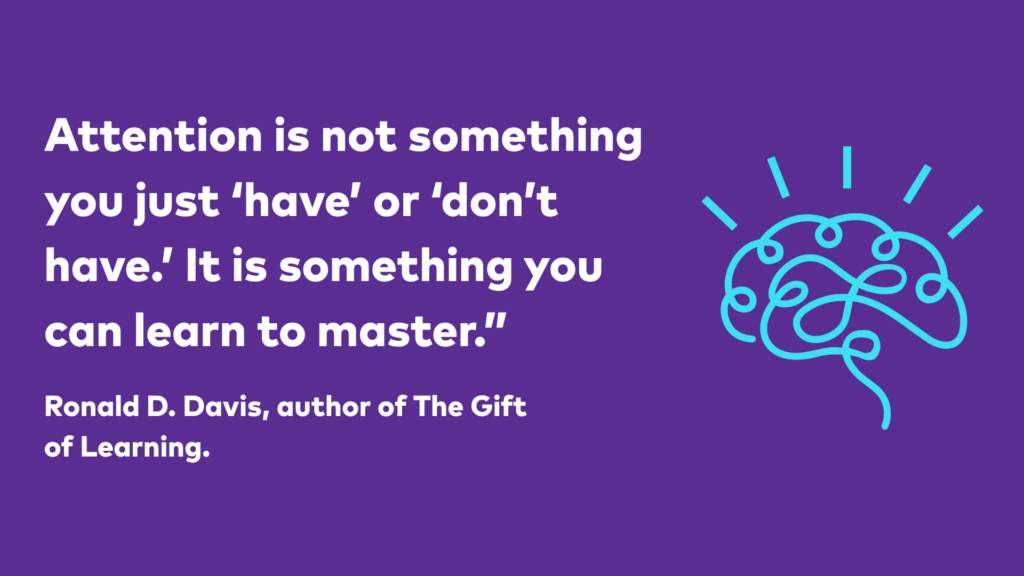
Building essential life skills
ADHD often affects foundational life skills. Concepts such as time, order, sequence, and consequences may feel unclear. The Davis method introduces these ideas step by step. This process is like installing software in the mind. It fills in gaps that might exist and helps individuals understand key principles of how the world around them operates.
Here are some of the core life skills taught:
1. Understanding consequences
ADHD individuals often struggle to connect actions with outcomes. For example, the consequences of certain behaviors, like smoking or excessive drinking, may not appear until years later. This method teaches how to trace back events and identify the cause of unintended outcomes. By doing so, individuals are empowered to make better choices.
2. Practicing order in daily life
Order is more than keeping a tidy room. It involves organizing thoughts, actions, and time. The Davis method encourages practicing order in different ways:
- Order in space: Ensuring physical objects are in their proper place.
- Order in time: Time awareness, prioritizing, and staying on task.
- Order in behavior: Being present, focusing on the right activities at the right time, and choosing behaviors the cause positive outcomes.
3. Exploring new choices
Once individuals identify the cause of negative outcomes, they can explore alternatives. They are encouraged to test these new choices to see if they lead to better results. If the new choice still creates unintended consequences, they can refine it further. This trial-and-error process builds problem-solving skills and opens up new ways of doing things that will better serve them and those around them.
Why this approach stands out
The Davis method offers a refreshing alternative to traditional ADHD interventions. Instead of aiming for constant focus, it embraces the natural rhythm of the mind. Disorientation is not viewed as a flaw but as a valuable state. This mindset fosters self-acceptance, confidence and encourages creativity.
By teaching practical tools and using real-world practice, this approach empowers individuals. They gain the skills needed to navigate challenges independently. The focus on life skills ensures lasting impact, far beyond the classroom or therapy session.
Putting it all together
The ultimate goal of this method is to teach individuals how to manage their minds and environments. They learn to:
1. Recognize when they are focused or disoriented.
2. Switch between these states intentionally.
3. Maintain order in their thoughts, actions, and surroundings.
4. Analyze their choices and refine their actions.
By mastering these skills, individuals with ADHD can create a more balanced and fulfilling life. They gain control over their attention and can harness it to achieve their goals and potential. The Davis method provides the tools needed to thrive, one step at a time.
“What makes the Davis Autism Approach different to any other therapy or program I’m aware of, is that Ron Davis really understands autism from within. His program truly reaches to the core of who my son is. It’s hard to imagine what life would have been like if we hadn’t found the Davis Autism Approach when we did.“
Since doing a Davis Autism Approach program when he was 12, my son Isaac has developed a freedom and independence and sense of peace that he wouldn’t have otherwise had.
The biggest transformation our family noticed was that we started to get to know Isaac. He was no longer shutdown and withdrawn. He was gaining a sense of self and a confidence that he had never had before. He started to express himself clearly because his thoughts were much more in order. He is actually a very articulate young man!
As a family, instead of doing things for him all the time, we have had to adjust and let him start doing things his way.
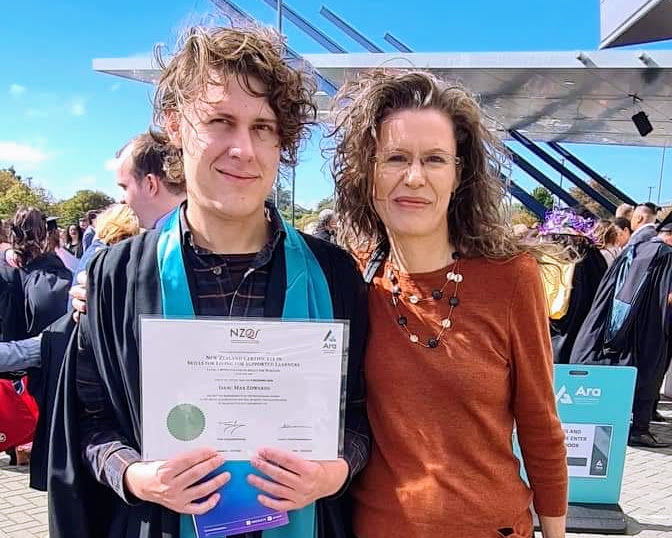
The Davis Autism Approach is the only program I’m aware of that manages to unlock the gifts and resources within people with autism.
I now know that Isaac is going to be OK in life … he will always be able to negotiate the world around him without getting anxious and confused, because within him he has the Davis tools and skills.
It is like a rock he can always come back to.
Juliana, parent, New Zealand
Interested in working with a facilitator?
Fill out the contact form below and a member of our team will be in touch with you.
Fout: Contact formulier niet gevonden.
Help for Dyslexia & ADHD: A Mother’s Davis Method Success Story
“The Davis® method gave us clarity where nothing else had. It explained both the struggles and the strengths. That changed everything.” — Dolores Gage
When Traditional Systems Fail Brilliant Minds
Dolores Gage’s son was nine years old when he came home from school and asked, “Mama, why can’t I make friends like everyone else?”
Behind his question lay a painful daily reality: bullying, exclusion, and mounting frustration over his struggles with reading, math, and attention.
Despite ongoing conversations with teachers, nothing changed. Instead, the labels began to pile up—“lazy,” “stupid,” “weirdo.”
They crushed his self-worth. Eventually, he hit a breaking point.
“If next year is like this, I’ll kill myself,” he confided one night.
Dolores knew too well where this could lead. Her own brother—brilliant and sensitive—had taken the same tragic path years earlier.
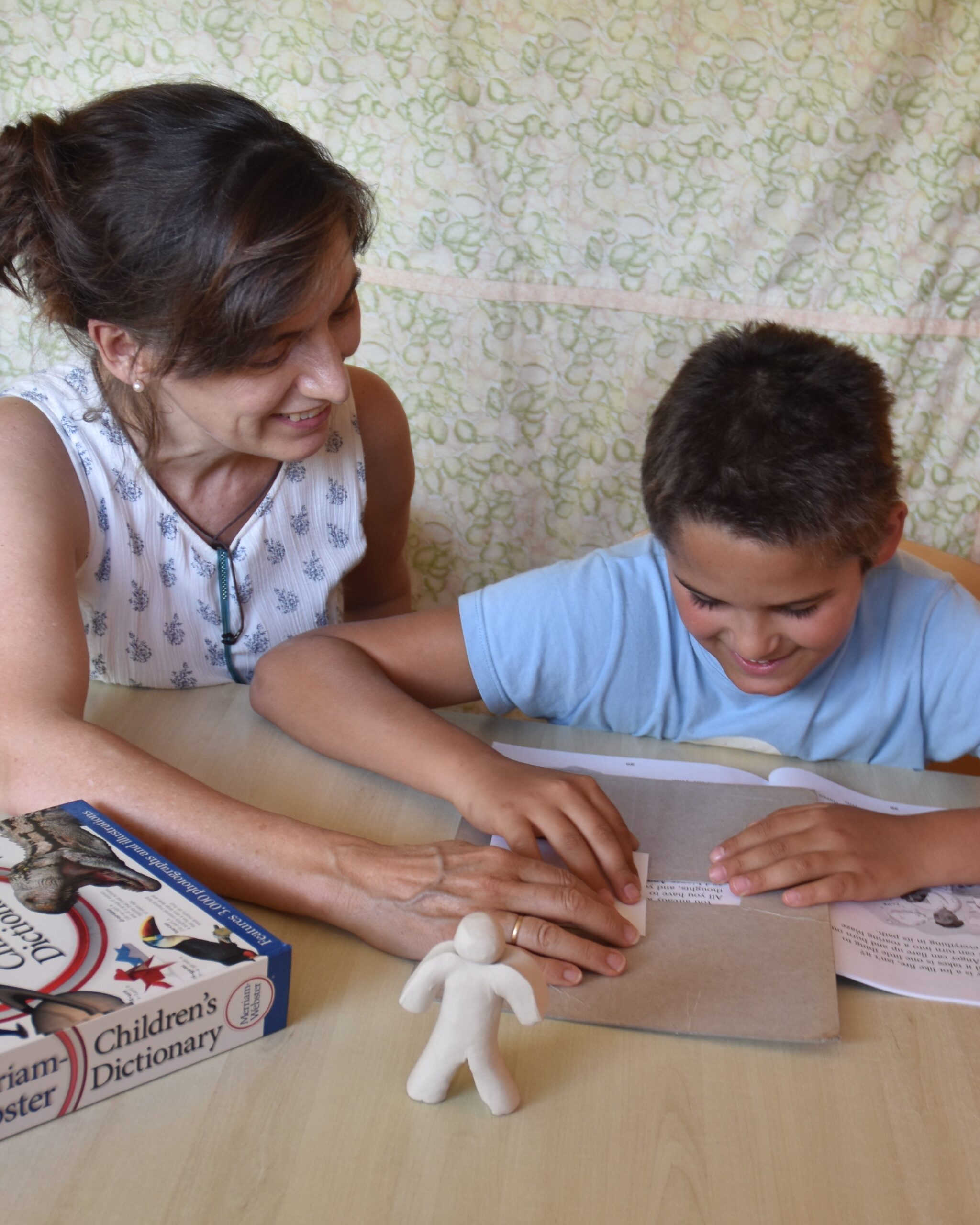
The Human Cost of Misunderstanding Neurodiversity
Dolores, a seasoned educator with an MA in International Education, was no stranger to learning theory. But even with her training, the conventional labels—dyslexia, dyscalculia, ADHD—only added to her confusion. They described symptoms without explaining the cause. They focused on deficits and disorders, not strengths. And they offered little insight into the overlap between conditions or why children who struggled so much could also be unusually creative, intuitive, and resilient.
“The system could tell us what our son couldn’t do. But no one could tell us why—or how to help him.”
This is the hidden human cost of misunderstanding neurodiversity: children internalize the belief that they are broken, families live in fear, and tragically, some never make it through. Some—like Dolores’s brother, a creative and sensitive neurodivergent young man—don’t survive the pressure. Suicide is now the leading cause of death for people under 35. But the harms go beyond school failure and mental health challenges. When low self-esteem takes root, it can significantly increase the risk of turning to addiction and crime—studies suggest that between 50% and 80% of incarcerated individuals have learning difficulties. Misunderstanding neurodiversity doesn’t just limit potential—it endangers lives.
A Framework That Finally Made Sense
Hope came from an unexpected source: The Gift of Dyslexia by Ron Davis.
Unlike anything else, it offered a framework that explained her son’s challenges and his gifts.
Ron Davis himself was labeled “uneducatably retarded.” Autistic and severely dyslexic, he didn’t learn to speak until 17—or read until 38. But through intense self-observation, he uncovered the root causes of his struggles and pioneered a method that has since helped individuals worldwide.
What Is the Davis® Method?
At the heart of the Davis® approach is an understanding of three key traits common to many neurodivergent individuals:
- Non-verbal/picture thinking:
A natural, fast, and intuitive way of processing that fosters creativity, empathy, and holistic problem-solving. - Heightened sensory sensitivity:
A nervous system tuned in to social, emotional, and physical stimuli—sometimes overwhelmingly so. - A talent for disorientation:
This ability to disconnect from immediate reality is a double-edged sword. It enables imaginative thinking—but also causes perceptual distortions that interfere with learning.
Dyslexia and ADHD: Same Root, Different Triggers
The Davis® method reveals that disorientation is the root cause of both dyslexia and ADHD—but the triggers differ:
- Dyslexia
Confusion—especially around 2D symbols like letters—triggers momentary disorientation. This leads to perceptual distortions, reading mistakes, and frustration. - ADHD
Boredom or emotional overwhelm triggers more intense, long-term disorientation. The result is inattentional blindness, where the child filters out anything they don’t find interesting or important—leading to inattention, impulsivity, and disorder.
“Living with disorientation is like watching two movies at once and understanding neither.”
Traditional strategies overlook this mechanism entirely.
A Turning Point—and a Transformation
With Davis® tools and insights, Dolores’s son learned to manage his disorientation, control his perceptions, and build a stronger understanding of core life concepts.
The transformation was profound:
- Outbursts disappeared
- Confidence returned
- He began to thrive academically. He even made the High Honors List!
“We got our child back—and a whole new understanding of who he really was.”
Dolores went on to train as a Davis® facilitator, and now dedicates herself to helping individuals of all ages unlock the same potential.
The World Needs a NEW Understanding
The Davis® method doesn’t just offer techniques—it provides clarity, empowerment, and a new perspective on neurodivergence.
This is NEWrodiversity: a strengths-based framework that explains the why, not just the what—and offers real solutions.
“The traditional approach costs lives. Davis® offers unique insights, hope, and solutions that work.”
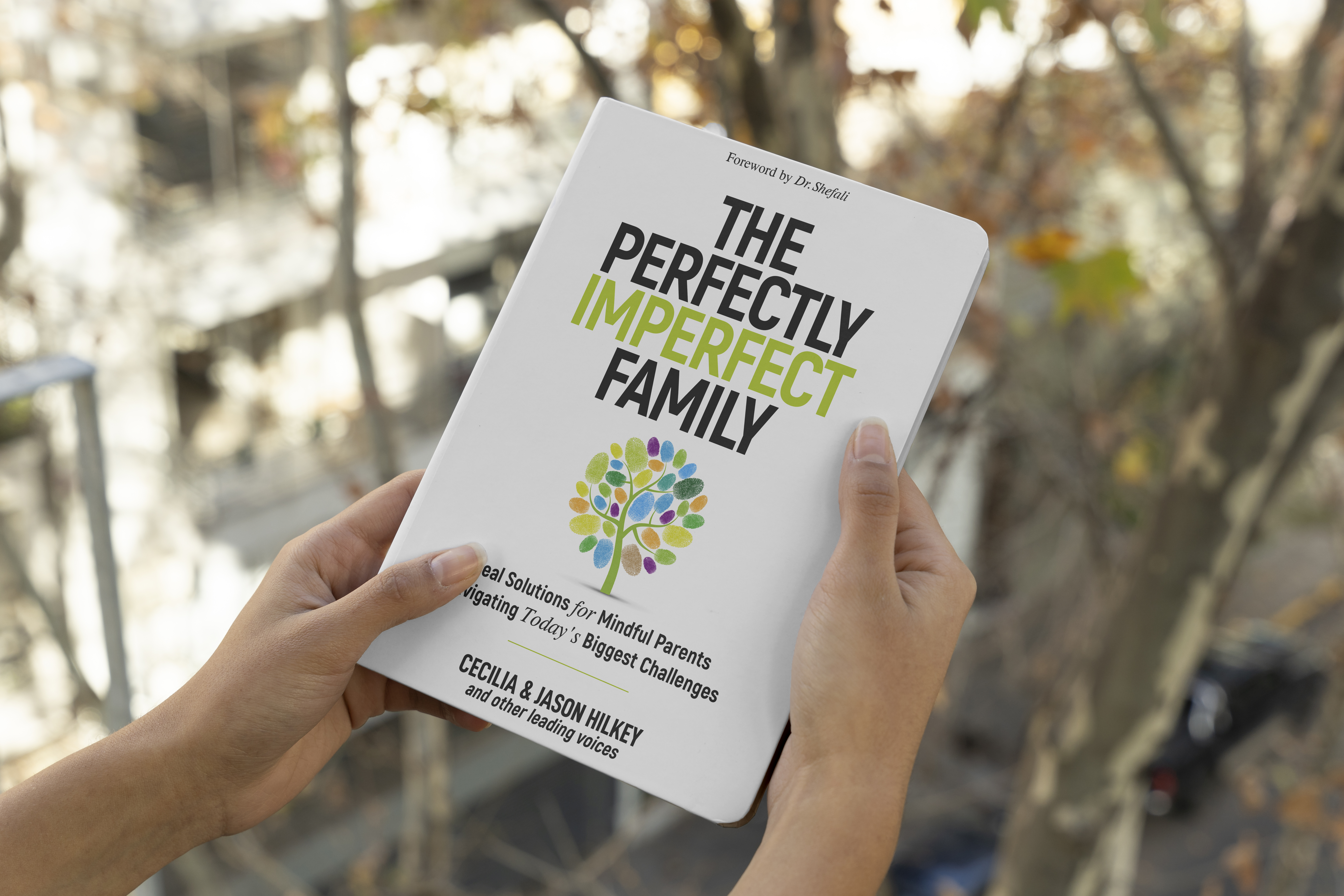
Read More in The Perfectly Imperfect Family
Dolores’s full story is featured in the newly released book:
The Perfectly Imperfect Family: Real Solutions for Mindful Parents Navigating Today’s Biggest Challenges
A brand-new book launch featuring practical guidance for navigating parenting and neurodiversity.
Australia/New Zealand | Brazil | Canada | France | Germany | Italy | India | Japan | Mexico | Netherlands | Spain | UK | USA
Ready for Solutions? Find a Davis® Facilitator
If you or someone you love is struggling with neurodivergent challenges, you don’t have to walk this road alone.
Find a licensed Davis® facilitator near you
Contact us, our team is here to help you find the right path for your family
Every brilliant mind deserves to be understood.
And how Davis Methods enhance it
The Davis Method teaches much more than reading by unlocking creative potential.
Traditional approaches to dyslexia focus solely on “fixing” reading difficulties, which often suppresses creative gifts that come with visual-spatial thinking. The Davis Method takes a fundamentally different approach by recognizing and enhancing these natural talents.

Dyslexia as identity, not deficit
As Davis Presenter and Facilitator, Axel Gudmundsson eloquently puts it: “Dyslexia is often seen as an illness; a nuisance at the very least, which, when resolved or healed, will make us like normal people.” This deficit approach does not acknowledge dyslexia as a part of someone’s essence and their innate creativity. This approach sees dyslexia through the narrow focus of solely being a reading challenge, but at Davis, we know dyslexia is far more than that.
A nine-year-old boy captured this truth perfectly after completing a reading program when he asked his Davis Facilitator with great concern: “If I stop being dyslexic, I’ll stop being me! I love being dyslexic now!”
The creative mind of visual thinkers
What makes dyslexic thinking so creatively powerful?
Dyslexic individuals:
- Think primarily in images rather than words
- Process information holistically rather than sequentially
- Aren’t mentally confined by the linear constraints of language
- Notice patterns and connections others miss
- Often have higher-than-normal intelligence
- Can problem-solve, invent, create and escape using their vivid imagination
This unique thinking style gives rise to remarkable gifts:
- Three-dimensional visualization abilities
- Innovative problem-solving approaches
- Intuitive understanding of complex systems
- The ability to see what others cannot

How the Davis Method enhances creativity
Unlike traditional interventions that try to rewire dyslexic thinking into a more “conventional” pattern, the Davis Method embraces the natural dyslexic thinking style and works with natural strengths:
- Clay modelling harnesses visual-spatial abilities to create concrete understanding
- Orientation techniques teach focus without suppressing creative thinking
- Meaning-based learning works with the dyslexic need for authentic understanding
- Symbol mastery builds reading comprehension through hands-on, creative expression of abstract words that typically cause gaps in understanding
When dyslexic individuals master reading and writing through methods that respect their unique thinking style, frustration eases and learning can be achieved. The Davis Method provides a bridge to the world of words while maintaining their creative edge. Through this approach, clients gain the ability to switch between creative, picture thinking mode or sequential, symbol-oriented mode for reading.
Success without sacrifice
James, a boy with both autism and dyslexia, experienced remarkable growth through the Davis Method. Not only did he gain reading skills, but his creativity and self-expression flourished. After avoiding writing for years, his mother was ecstatic to receive his independently written heartfelt letter, a skill that traditional methods had been unable to foster. Read his story here.
The Davis Method allows dyslexic thinkers to access the world of text without sacrificing the creative brilliance that makes them who they are.
Facilitators around the world are available to help! Contact a provider near you today!
Would you like to be the person helping dyslexic readers discover their true, creative self while improving their reading and writing ability? Join us for the Davis Gift of Dyslexia Workshop to discover how to nurture both literacy AND creativity in dyslexic learners. This workshop is the first step in becoming a Licensed Davis Dyslexia Facilitator.
This workshop is open to all adults interested in better supporting Dyslexic thinkers. It is especially recommended for parents, tutors, teachers, professionals and heart-centered entreprenuers as well as individuals interested in pursuing licensure as a Davis Facilitator.
Join our Davis Method Support group, where we provide support and information for parents, teachers, and neurodivergent individuals who are using Davis methods or who want to learn more about our approach.
The Davis Methods are strength-based, empowering programs that are available worldwide and in more that 30 languages. We help transform the learning and lives of those struggling with dyslexia, ADHD, autism, dyscalculia, dyspraxia, dysgraphia, executive functioning, and other related diagnoses by by providing the personalized support they need to understand what’s holding them back – and how to break through those barriers.
Want to know more? Contact us
Davis Method: Neurodivergent solutions by a neurodivergent pioneer
Ron Davis’s journey from a non-verbal autistic child to becoming an innovator in neurodivergent support offers profound insights into the neurodivergent mind and learning differences. His story demonstrates how personal struggles can lead to groundbreaking discoveries in understanding and addressing learning challenges.
In the landscape of educational interventions for neurodivergence, one approach stands uniquely apart from the rest. The Davis Method wasn’t created by outside observers studying neurodivergence—it was developed by someone who lived it. Ron Davis, a brilliant mind who spent 38 years unable to read, transformed his own experiences with autism and dyslexia into solutions that have changed countless lives worldwide.
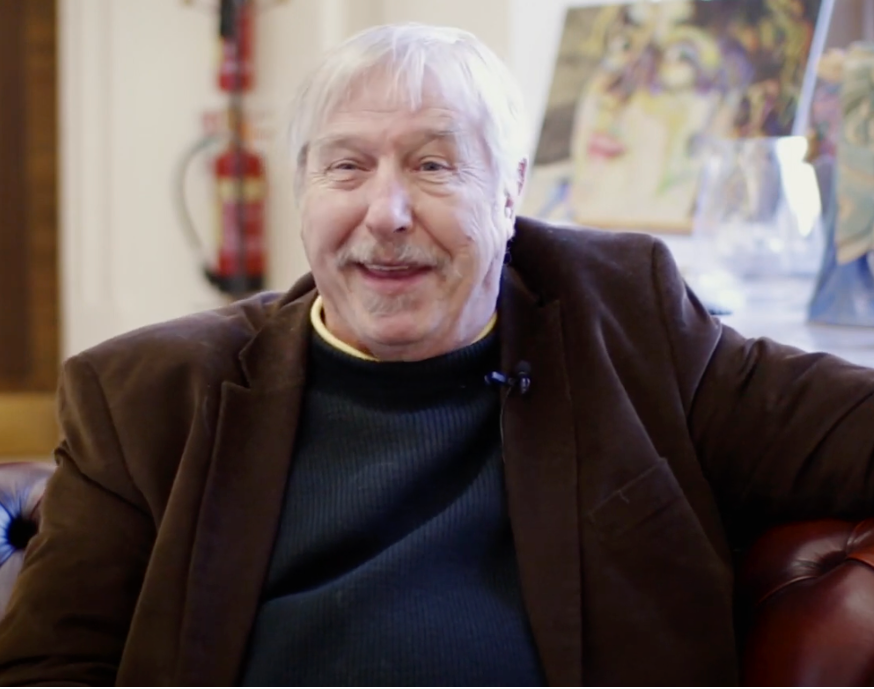
Understanding neurodivergence from the inside
At the heart of every Davis solution is an understanding of how neurodivergent minds actually work. Ron Davis didn’t theorize about neurodivergence, he lived it daily.
Born in 1942, Ron was diagnosed as a “Kanner’s Baby” (early terminology for autism). His mother was told Ron would “never be able to be held, to learn, to speak, or achieve much beyond what a chimpanzee could.” For his first nine years, Ron had no awareness of himself or the world around him. He describes this period as having “no connection to others or himself.”
At age nine, Ron suddenly became aware of the physical world around him, experiencing what most children develop at age two, but without any of the foundational skills to process this new reality.
School was overwhelming with its sensory stimulations. Letters on classroom walls seemed to float and move before his eyes.
This firsthand experience of both autism and dyslexia gave Ron unique insights that academic researchers didn’t have access to. From age 9, Ron began making things out of clay, which he feels helped him make sense of the world and learn the alphabet. However, it wasn’t until he was in his thirties that he discovered how to turn off the disorientation he experienced—what he called the “disorientation tunnel”, this became the foundation for the Davis Programs. Since discovering these ways to overcome his own learning differences, Ron has focused on building the methodology and sharing it with others.
“If you eliminate the reason the problem exists, the problem ceases to exist.”
The gift of dyslexia: understanding strengths, not deficits
The Davis Method recognizes something traditional interventions miss: dyslexia isn’t just a collection of challenges, it comes with remarkable gifts. Ron discovered this through his own journey.
Despite being unable to read, Ron possessed extraordinary spatial visualization abilities that led him to work as an engineer during the Space Race era. His mind could manipulate mental images in ways that neurotypical thinkers often couldn’t match. This wasn’t in spite of his dyslexia, it was because of it.
Ron’s breakthrough came when he realized that when he sculpted, he entered a mental state where language didn’t exist, it was all imagery. This led him to wonder if he could find a way to enter a state where language would work properly. This question led to his discovery of what he identified as the root cause of dyslexia: disorientation.
The Davis Method embraces the natural thinking style of dyslexic individuals: visual, multidimensional thinking, rather than forcing them to abandon it. Through techniques like Symbol Mastery, where abstract concepts are modeled in clay, Davis solutions work with the natural strengths of dyslexic minds rather than against them.
This approach stands in stark contrast to traditional remediation methods that focus on drilling phonics and repetition—approaches that often leave dyslexic learners feeling defeated and deficient.
Sign up to mailing list to receive notification when we announce our next Davis Gift of Dyslexia Workshop and get access to an Early Bird Discount.
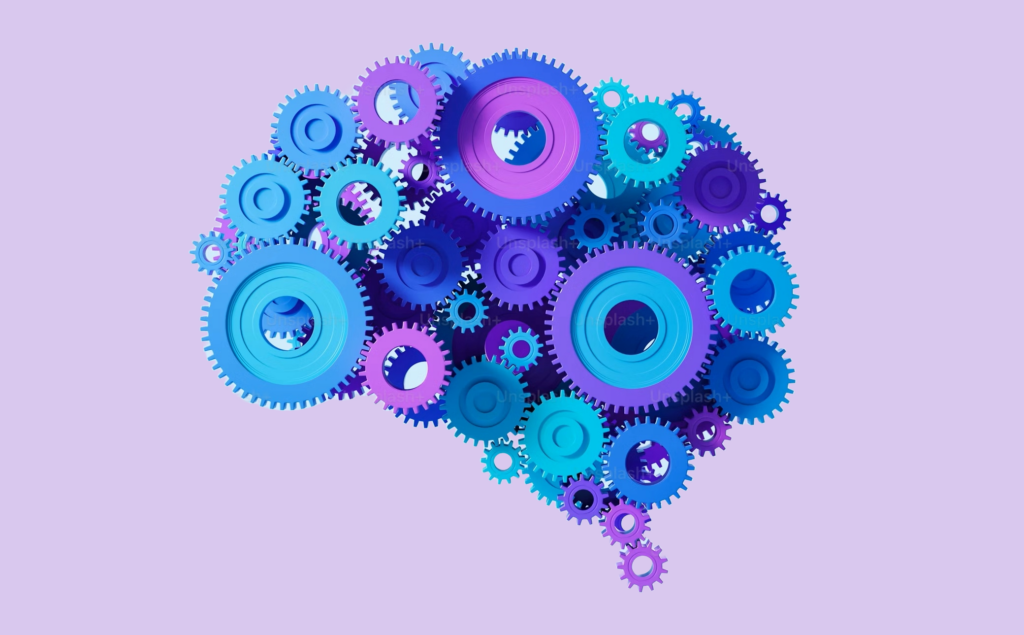
Autism understanding: a map created from within
Ron’s personal journey through autism gives the Davis Autism Approach its unique power. Traditional autism interventions often aim to eliminate autistic “symptoms”. The Davis Autism Approach, by contrast, respects autistic neurology while providing tools for greater self-awareness and self-regulation.
The Davis Autism Approach begins not by trying to change the autistic person, but by helping their support person learn tools for co-regulation. This reflects Ron’s deep understanding that autistic individuals are often overwhelmed by the emotions and energy of those around them.
Through tools like Auditory Orientation (the “Davis Ting”), Release, and Dial, the program helps autistic individuals develop accurate perceptions and regulate their focus, stress, and energy levels. These tools weren’t developed through external observation—they emerged from Ron’s lived experience of what actually works for an autistic mind.
Most importantly, the Davis Autism Approach doesn’t view autism as something to be fixed. Instead, it recognizes that autistic individuals often miss crucial life concepts not because they can’t learn them, but because traditional teaching methods don’t match their thinking style. Through clay modeling and experiential learning, these concepts become accessible, allowing autistic individuals to participate more fully in the life they choose.
Interested in understanding more about the Davis Autism Approach? Sign up here to receive notification when we announce our next Autism Approach Workshop and get access to an Early Bird Discount
“What inspired me to help others with autism is that I am myself autistic. I know what it feels like, and I know the limitations that exist as a result of it. I realized that, given I had found my own way through this chaos (of autism), I could provide a ‘map’ for others of my kind to follow.”
Neurodivergence: the foundation of our approach
What makes all Davis solutions truly revolutionary is that they’re created from a neurodivergent perspective. This isn’t interventions designed by the neurotypical for the neurodivergent—it’s neurodivergent wisdom shared among peers.
In a world where neurodivergent individuals are often told what they “should” do by those who don’t share their neurotype, Davis solutions offer a refreshing alternative. Every technique, every tool, every insight comes from someone who understands the territory because he mapped it from the inside.
At Davis, we don’t see neurodivergence as a deficit. We recognize it as a different way of processing information, one with its own strengths and challenges. Our solutions don’t aim to make neurodivergent individuals more neurotypical. Instead, they provide tools that work with neurodivergent thinking styles to unlock potential.
Davis methodologies honor neurodivergent ways of being. We understand that the path to success isn’t through forcing conformity, but through building bridges of understanding and providing tools that actually make sense to neurodivergent minds.
A legacy of transformation
Forty years after Ron’s initial discoveries, the impact of his work continues to grow. His approaches have spread worldwide, with his book “The Gift of Dyslexia” translated into more than 20 languages and 400 licensed facilitators globally.
The scientific community, which initially dismissed Ron’s work as “controversial,” has gradually caught up. Concepts like neurodiversity and “the gifts of dyslexia” that Ron championed decades ago are now widely accepted as self-evident.
What makes this legacy so powerful is its authenticity. Ron didn’t study neurodivergence as an outside observer, he lived it. He transformed his own challenges into insights that have opened doors for countless others.
When you engage with Davis solutions, you’re not simply receiving intervention techniques. You’re connecting with the hard-won wisdom of someone who walked the path before you, who understands the terrain from the inside, and who discovered a way forward that empowers neurodivergent minds rather than attempting to rewire them.
That’s the power of neurodivergent solutions created by a neurodivergent pioneer. That’s the Davis Method.
Ready to transform how you support neurodivergent minds? Join our community to receive our monthly newsletter with workshop dates, practical tips, and success stories from our global network of facilitators.
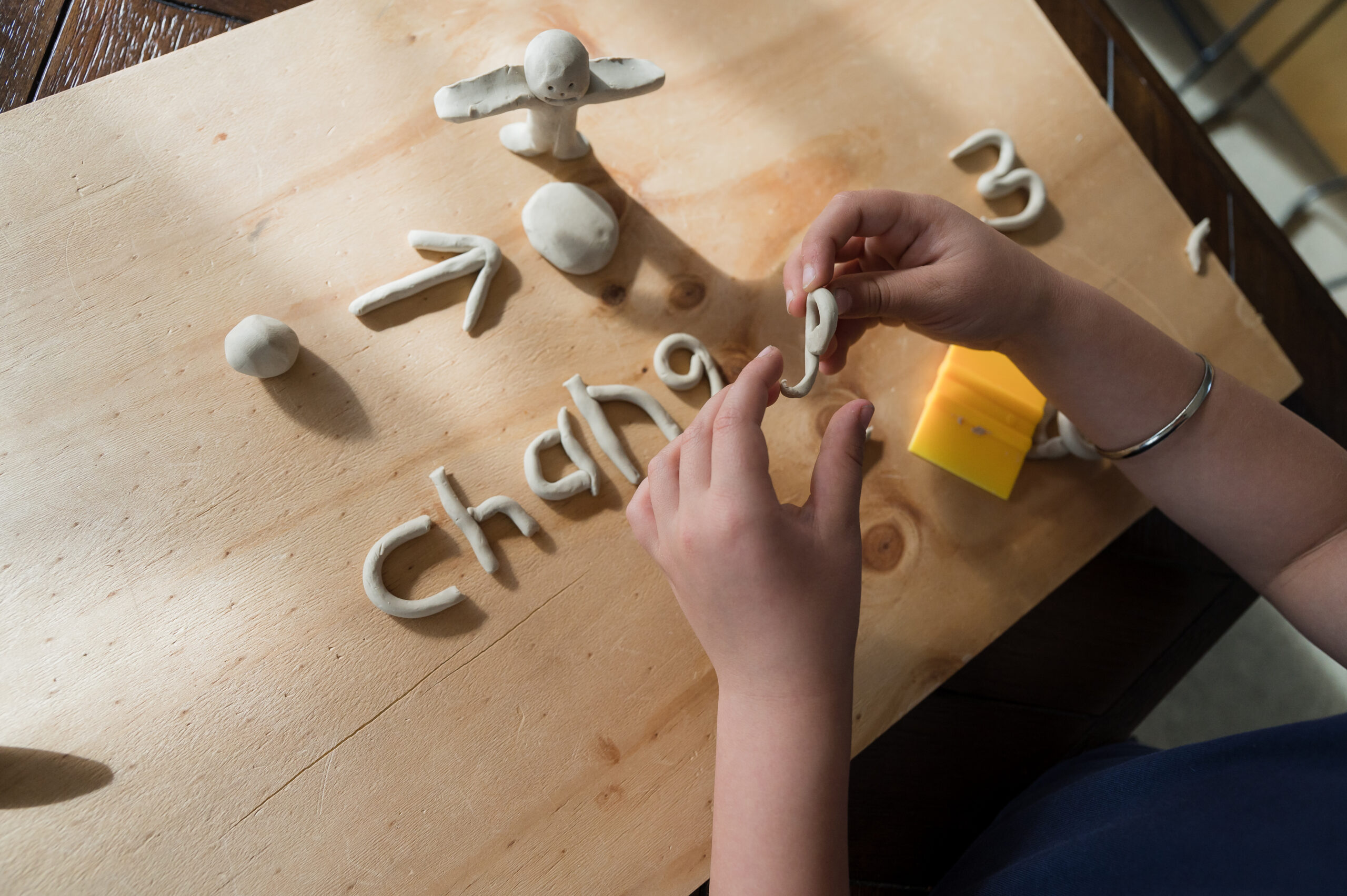
Our solutions for every neurotype
The Davis Method offers specialized solutions designed for various neurotypes, all built on the foundational understanding that neurodivergent minds have unique strengths and ways of processing information.
Our workshops serve two distinct purposes: For parents, educators, therapists, and caregivers, they provide comprehensive training to equip you with the knowledge and tools needed to guide those you support through individualized Davis Programs. For neurodivergent adults, while workshops offer valuable self-understanding and general principles, they differ significantly from our one-on-one Programs. Programs are deeply personalized interventions tailored to your unique needs, whereas workshops provide broader educational foundations. These workshops also serve as the first step for those interested in becoming licensed Davis Facilitators, allowing you to help others on their journeys.
Workshops typically run between 16-40 hours in an online, group setting (capped at 15 participants to ensure quality individual attention). This does mean they fill quickly, if you want to stay up to date with upcoming workshops, webinars, resources and stories about neurodivergence, make sure you’re signed up to our mailing list.
The Workshop path might be right for you if:
- You want to support one individual
- You’re interested in learning the complete methodology as well as the reasoning and logic behind the program
- You want long-term flexibility in applying the techniques
- You’re looking for a more cost-effective long-term solution
- You’re interested in a career in supporting neurodivergent individuals
Programs are delivered one-on-one between facilitator, neurodivergent individual and their support person. Programs are tailored to individual needs and pace.
Working one-on-one with a Licensed Facilitator might be right If:
- You’re seeking professional guidance for a specific individual or yourself
- You or your loved one prefers a structured program with expert support
- You are able to set aside the time to invest in the program
- You want to focus on progress rather than learning the theory and methodology
- You’re looking for a complete, guided experience
By offering this comprehensive range of solutions, we honor Ron Davis’s vision of unlocking the potential in every mind, regardless of neurotype. Each program builds on his core insight: that neurodivergence isn’t something to be “fixed,” but rather a different way of perceiving and interacting with the world—one that, with the right tools, can lead to extraordinary outcomes.
Our workshops fill up quickly due to the limited number of spots. Subscribe to our priority notification list to be the first to know when new workshop dates are announced and secure your place before they’re gone.
| Neurotype | Workshop option | Program option | Key benefits |
|---|---|---|---|
| Dyslexia / Literacy | Davis Gift of Dyslexia Workshop | Davis Mastery for Dyslexia Program | Unlocks reading potential through multisensory approaches that work with visual thinking styles |
| ADHD Attention | Davis Concepts for Life Workshop | Davis Mastery for Attention Program | Provides tools to harness focus and manage attention effectively. Explore and master essential life concepts that will enhance social interactions. |
| Dyscalculia / Math | Davis Mastery for Math Program | Transforms abstract number concepts into tangible understanding through clay modeling | |
| Dysgraphia / Handwriting | Davis Gift of Dyslexia Workshop | Davis Mastery for Dyslexia Program | Includes strategies that improve writing skills by addressing the root perceptual causes |
| Autism, for individuals over 8 | Davis Autism Approach Workshop | Davis Autism Approach Program | Offers life-changing tools for self-regulation, concept mastery, and social integration |
| Autism, children under 8. And non-speakers of any age | Davis Stepping Stones Workshop | Davis Stepping Stones Program | Provides specialized approaches tailored to developmental needs of young children and those with limited verbal communication |
| Executive Functioning | Davis Concepts for Life Workshop | Davis Concepts for Life Program | Builds essential cognitive foundations for organization, planning, and daily functioning |
Got questions? Contact us
From panic attacks to hitting the gym twice a week
When I began working with Sam over 2 years ago, I could never have imagined the remarkable journey we would share. At 26, Sam is an autistic individual who has faced numerous challenges throughout his life—mental health struggles, executive function difficulties, and sensory processing differences that made everyday experiences overwhelming. As his support person, I’ve had a front-row seat to both his struggles and his incredible growth, especially over the past 18 months as we’ve worked intensively through the Davis Autism Approach Program, with Davis Facilitator, Melanie Curry.
Davis Autism Approach Program
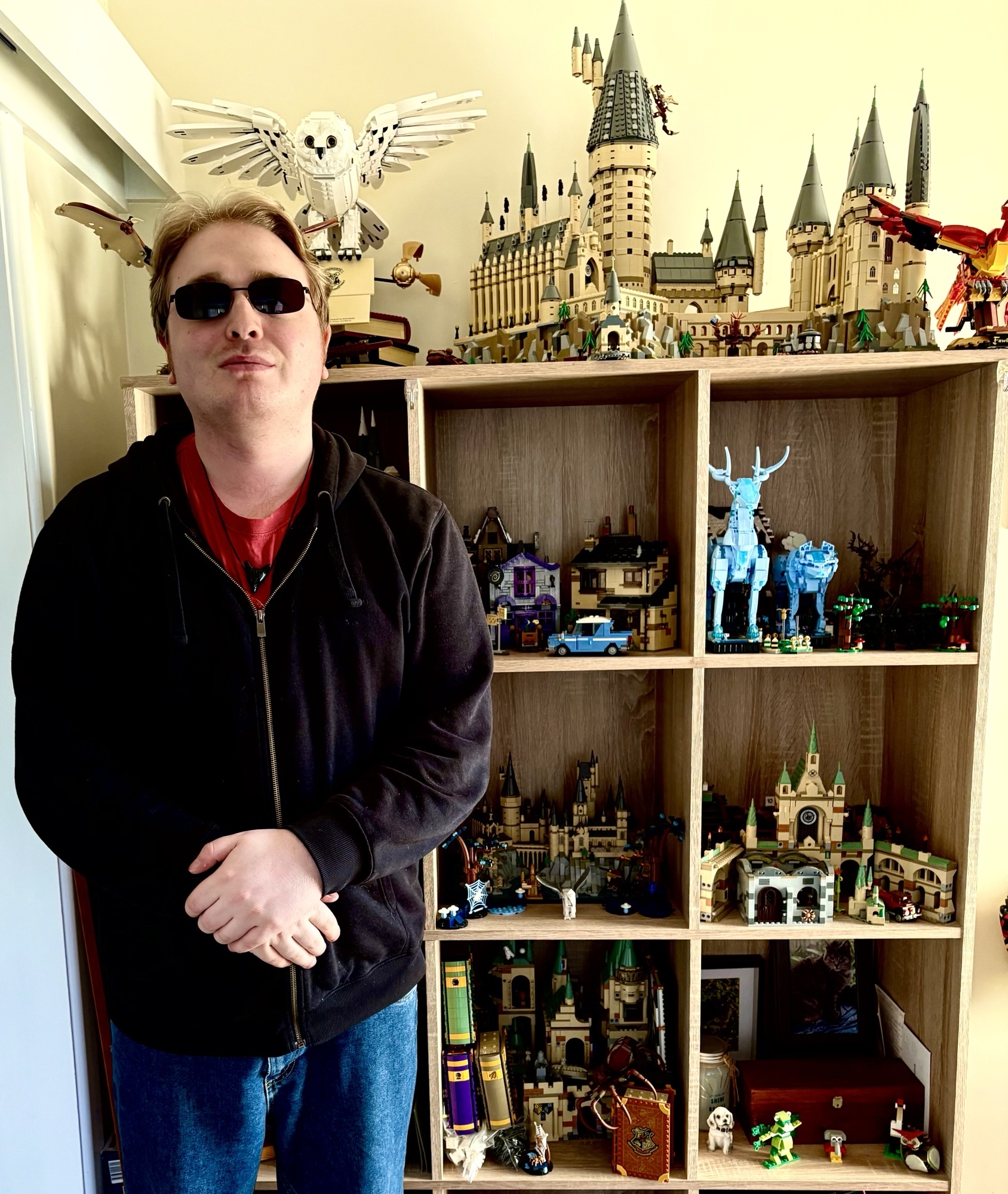
The beginning: uncertainty
Before we started the Davis program in early 2024, I worried we wouldn’t make progress. Sam’s world was overwhelming for him. He experienced unpleasant meltdowns, panic attacks, and showed symptoms of PTSD. His executive skills were very poor, making navigation through daily life extremely difficult.
Sam experiences what doctors call Alice in Wonderland syndrome, where his visual perception suddenly zooms images down to tiny sizes. He wears special glasses for light sensitivity and has other functional challenges that made traditional learning approaches ineffective.
It was like watching someone being handed a bicycle and asked to ride without any instructions—he would wobble and fall off, with no idea how to proceed. I felt helpless at times, wanting to support him but not knowing how to break through.
Our Davis journey begins
When we began the Davis Autism Approach program, I committed to working with Sam every other day, complementing his weekly sessions with Melanie, our Davis Facilitator. We focused on reading, writing, and the Davis Concepts.
The transformation was nothing short of incredible. Slowly, the “pennies started dropping” as Sam began to grasp fundamental life concepts. The first major breakthrough came when he understood the concepts of Cause, Effect and Consequence. For perhaps the first time, Sam began to truly understand what he had control over in his life and started clarifying long-held confusions.
Working through the Davis Autsim Approach Program with Sam changed my perspective too. As his support person, I found myself empowered by understanding these different ways of processing life, tasks, and outcomes. Concepts that would otherwise be confusing became clear, which has made my supporting abilities so much more effective.
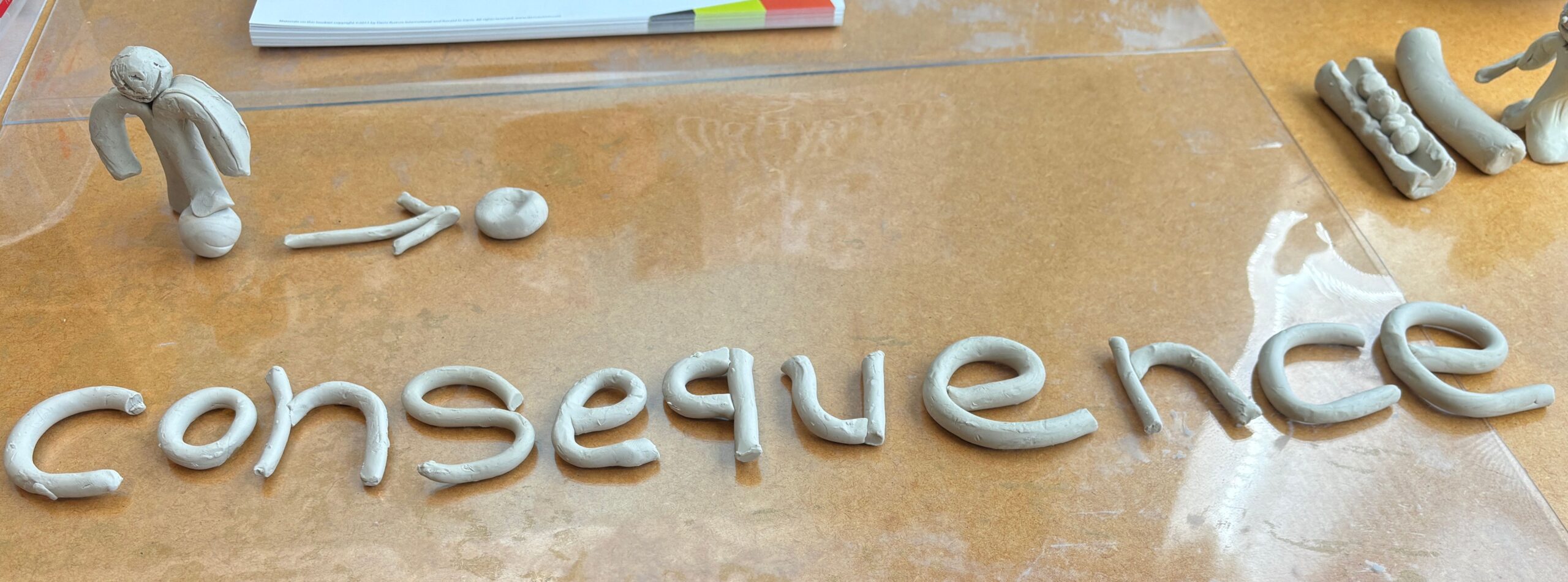
Real-life applications: Where the magic happens
One unique aspect of my role has been helping Sam apply these concepts in real-life situations. Between his sessions with Melanie, we would practice using his new understanding in everyday scenarios.
I remember one breakthrough moment when Sam was becoming overwhelmed with a change in his routine. Previously, this would have triggered a meltdown. Instead, I watched him pause, use his Davis tools to reorient himself, and then work through the situation step by step, applying his understanding of the “change” concept we had been modelling in clay.
Another time, Sam was struggling with a social interaction at the gym—a place he now visits twice weekly. Using the concepts he learned through the Davis program, he was able to recognize the dynamics at play and navigate the situation successfully. His pride in that moment was palpable.
The beauty of the Davis Autism Approach is that it’s experiential—it’s not about memorizing social scripts or being told how to behave. Instead, Sam gained an intuitive understanding of concepts that allowed him to think through each unique situation he encounters.
“Like a dam bursting”
The most amazing part of this journey has been watching Sam’s transformation. It was like a dam bursting — all of this experiential information had been locked up behind his struggles, and finally, the water could flow.
Since beginning the Davis Autism Approach program:
- His reading has improved dramatically—from not being able to identify anything on a page to reading at chapter level
- His confidence has soared
- Meltdowns have disappeared completely
- Panic attacks are gone
- His mental health has transformed
- He’s developed the ability to process tough life events with remarkable resilience
Sam has always been creative, quirky, and delightful, with a passion for Lego (his house is practically a Lego museum!), Star Wars, Harry Potter, and Lord of the Rings. He has a wonderful sense of humor reminiscent of Charlie Chaplin’s slapstick comedy. But now, these wonderful qualities shine even brighter because they’re not overshadowed by struggle and confusion.
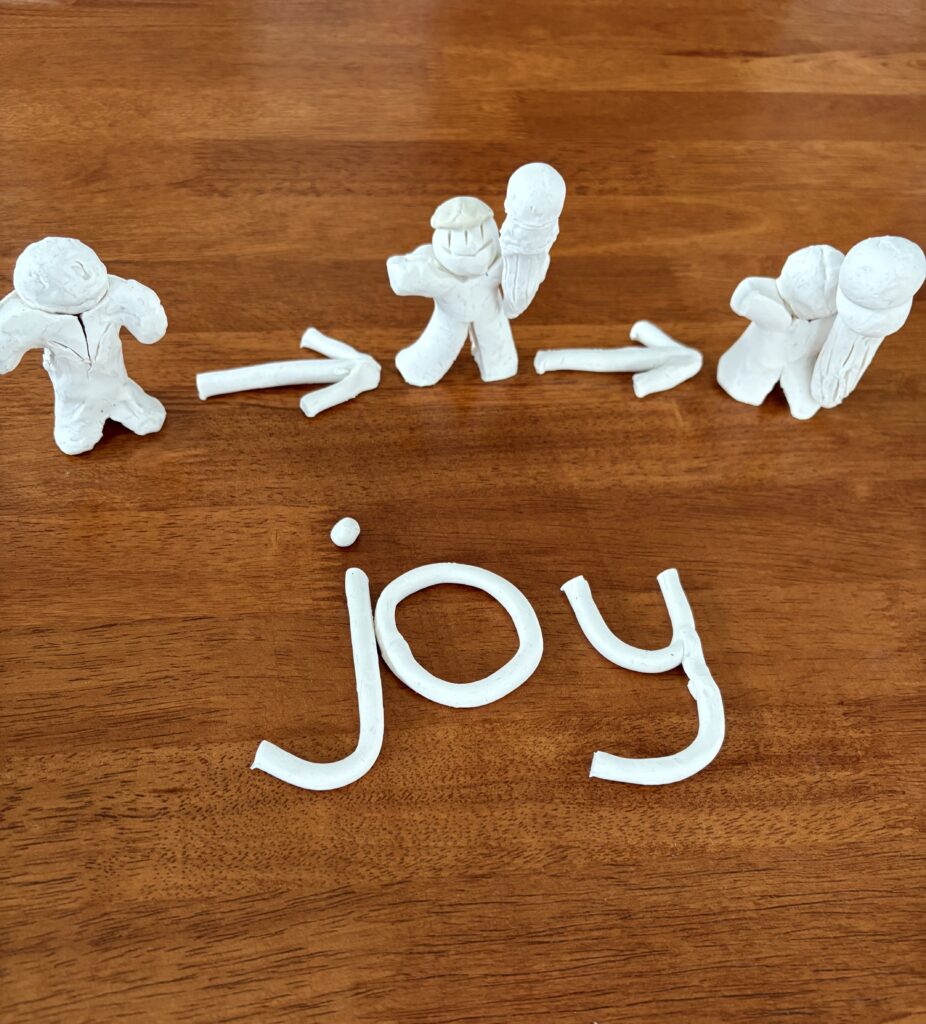
Finding identity and purpose
Perhaps the most significant change I’ve witnessed is Sam’s deeper understanding of himself. He’s been able to work through questions about his sexual orientation and identity, issues he had been battling for so long. Having the tools to work through these complex aspects of self has been empowering for him. Sam feels safe to be who he is in the world.
He’s now looking toward the future with aspirations to become a security guard. This wouldn’t have seemed possible before our work with the Davis Autism Approach program.
What sets the Davis Autism Approach apart
Having explored psychology, mental health resources, and various autism interventions over the years, I’ve seen what works and what doesn’t. What sets the Davis Autism Approach apart is that it’s truly an experiential journey for a neurodiverse person.
Ron Davis, who developed this approach, is a living example of someone who embodied all the struggles and difficulties that autistic individuals face. He pushed past incredible barriers and “did the hard yards” to help others follow the path he forged.
The Davis Autism Approach doesn’t try to force autistic individuals to think and behave like neurotypical people. Instead, it creates pathways between neurodivergent and neurotypical understanding. As someone who helps implement these concepts in daily life, I’ve seen how this bridge-building approach works in practical, life-changing ways.
My message to other support people
If you’re worried about where your child or the person you support fits in the world, Ron’s work offers a guiding light, an opportunity to engage with the world around them in a way that gives them a sense of belonging and home.
The Davis Autism Approach creates a foundation for understanding executive function, emotions, and social dynamics without the frustration that comes with traditional approaches. Every time I see the effects of it, I’m amazed at how powerful it is.
For me personally, being part of this process has been incredibly rewarding. As a support person, the Davis Autism Approach Program has given me tools and understanding that have made my role more effective and fulfilling. It’s cleared the ground really quickly and has transformed not just how I support Sam, but how I view neurodiversity as a whole.
The journey continues
Sam’s journey—and mine alongside him—continues to unfold. What once seemed impossible now happens regularly. Challenges that would have derailed him completely are now navigated with growing confidence.
Autistic people have an incredible ability to embrace life in ways that are unique and beautiful. The Davis Autism Approach Program has helped Sam tap into this ability while providing practical tools for navigating a complex world.
If you’re supporting someone with autism who struggles with executive function or finding their place in the world, I encourage you to explore the Davis Autism Approach Program or Workshop. It’s not just about managing symptoms or teaching coping mechanisms—it’s about building a foundation for true understanding, self-determination, and growth.
And that makes all the difference.
——
Kirsten works as a support person for individuals with autism and has witnessed firsthand the transformative effects of the Davis Autism Approach as she worked with Sam and Melanie through the program.
Interested in working with a facilitator?
Fill out the contact form below and a member of our team will be in touch with you.
For parents of children on the Autism spectrum, the journey is often filled with questions, worries, and a search for effective support. When regular schooling and interventions like ABA (Applied Behavior Analysis) don’t seem to work, it can feel like there is nowhere else to turn. Elise, mother of 12-year-old Logan, found hope, clarity, and rapid transformation through the completing the Davis Autism Approach Workshop — a discovery that not only changed Logan’s life but also her own.
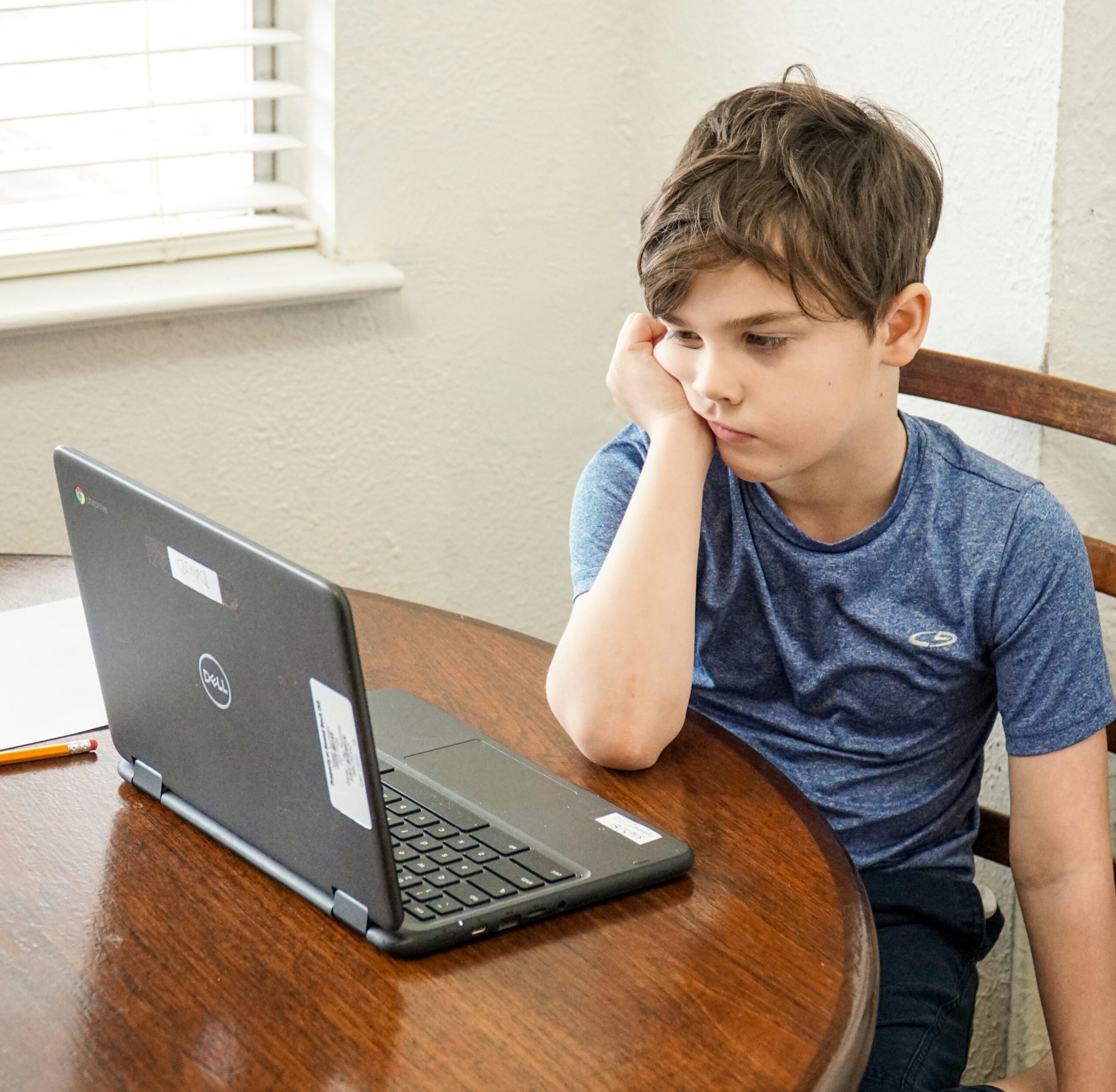
Elise and Logan’s Story
Before discovering the Davis Autism Approach, Elise watched Logan’s struggles with everyday life. Although Logan was non-speaking until nine years old, Elise could see a happy, intelligent boy inside. Communication barriers often triggered meltdowns especially in situations Logan couldn’t understand. One vivid memory was an airport incident. On the plane, his iPad stopped working, leading to a meltdown so intense that the family had to deplane. Simple frustrations quickly escalated into overwhelming situations for Logan and the family.
The turning point came when Elise attended the Davis Autism Approach Workshop. Inspired by Ron Davis’ own story as an autistic individual, she felt a spark of hope. The workshop’s unique methods of using clay to model abstract concepts and integrating them into real-world experiences immediately resonated. After completing the five-day workshop, Elise took Logan through the Davis Autism Approach Program. The results were life changing.
Discovering self-awareness
On the first day of the program, Logan experienced a profound moment of realization. Through the clay-based exercises, he began to understand that he was his own person, a “me” with a mind and a body. “What are these?” he asked Elise, looking at his legs. When told they were his legs, he repeated, “My legs?” Then he touched his head and exclaimed, “My mind.” “For the first time, I think he saw himself as an individual separate from the world around him,” says Elise.
This newfound self-awareness was the first breakthrough. Before the program, Logan saw the world as a single, overwhelming whole. He didn’t recognize parts or distinctions, including his own role within it. The Davis Autism Approach helped him understand he IS a part of it, creating a foundation for growth and connection.
Building life skills through clay
The program’s hands-on methods made all the difference. Using clay, Logan and Elise modelled key life concepts like cause and effect, responsibility, and emotions. The tactile, visual nature of the exercises helped him internalize these ideas in a way that traditional therapies had not. For example, now, when faced with a stressful situation, he will use his clay model of himself to understand the outcomes and make choices. A particularly successful instance of using this technique occurred on a school trip, when his earbuds stopped working on the plane. Elise was filled with fear from the previous incident of having to deplane. Logan used these newfound strategies to understand the how his actions would affect the situation and used his emotional regulation tools to manage his emotions. Instead of melting down, he took deep breaths, acknowledged his anger, and found a way to cope.
Through these exercises, Logan learned to understand consequences. If he said or did something hurtful, he could model the situation with clay to see how his actions affected others. This approach gave him a new way to process experiences and make better decisions.
Elise highlights how much easier bedtime has become. Now that Logan can understand the consequences of staying up late and not getting enough sleep, he’s willing to go to bed, an outcome she had never thought possible.
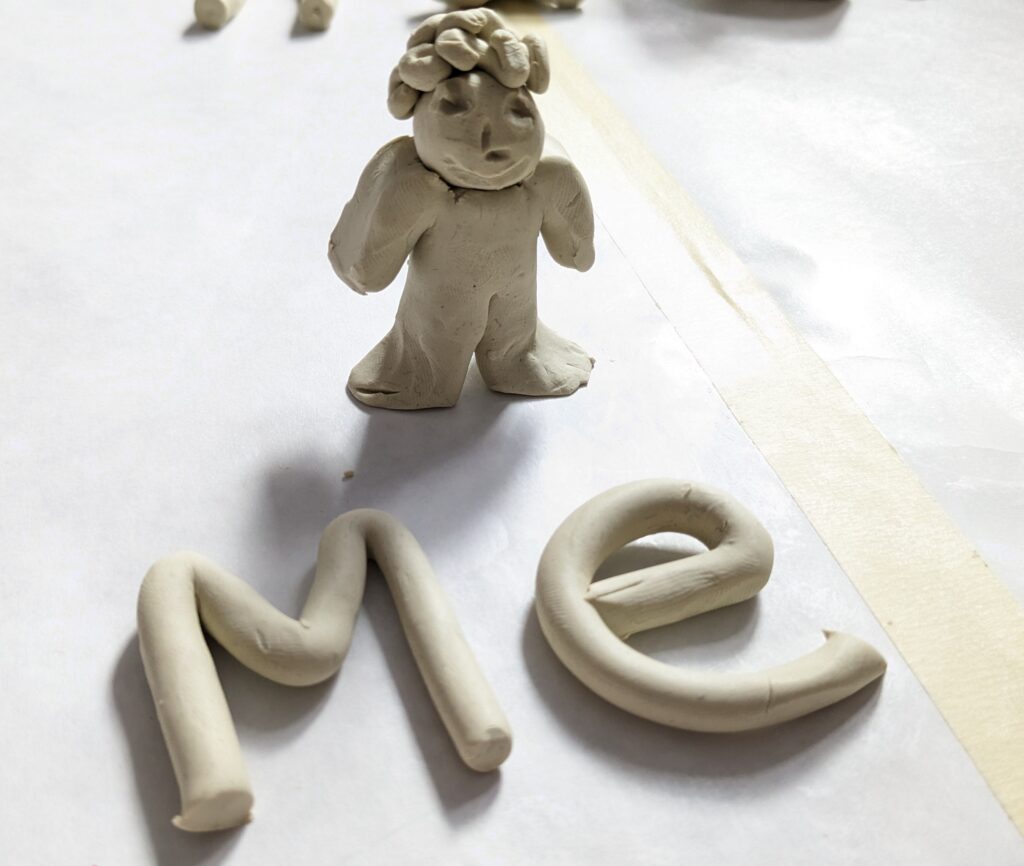
Rapid growth and new horizons
The progress Logan made during the program was remarkable. Within months, his confidence and abilities soared. He began reading, writing, and even creating. Despite struggling with basic math concepts before, he developed an understanding of algebra and geometry. His imagination flourished, he started building a “world” in his backyard, writing books, and even planning a television series with over 150 episodes.
For Elise, the changes were equally transformative. She learned how to better support Logan while also rediscovering her own sense of self. The life concepts covered in the Davis Autism Approach Workshop and Program are applicable to anyone of any age. For Elise, it’s improved her own decision-making strategies and reinforced boundaries.
Living a different life
Family life became lighter and more balanced. After the program, they took a trip to Hawaii – most parents of Autistic individuals will understand how impossible that thought is. Logan loved the trip – he tried new foods, enjoyed bus rides, and even went zip-lining and surfing. He adapted to changes in schedule, something that had previously been a major challenge. He now dreams of going to college and has started planning his future.
Since the Davis Autism Approach, Logan has been able to attend school for three days a week, where previously he was home-schooled. Logan’s teacher wants to try the clay modelling with the rest of the class, after seeing how Logan modelling the waves and how energy moves through them, she saw the benefits the rest of the class could gain from this type of hands-on learning.
With outings no longer ending in chaos, Logan went on his first school trip with 92 children. Logan remained calm and engaged, a stark contrast to previous experiences. His ability to handle stress, communicate his needs, and navigate social situations had improved dramatically. He attended loud musicals, a large state hockey game and navigated walking down the Las Vegas strip!

A program that empowers the whole family
The Davis Autism Approach is not just for the individual, it’s a journey for the entire family. The tools provided in the Davis Autism Approach Workshop can be used for regulating stress and navigating outcomes for tricky situations.
The program also fostered a deeper connection between the family. They developed a shared language and methods to communicate effectively. Using the life concepts, they could navigate challenges together, whether it was managing expectations or planning a daily routine or even showing each other their energy levels. Elise says, “Our entire life is Davis now, but a lighter version”.
Why the Davis Autism Approach Stands Out
Unlike other interventions that focus on specific skills or behaviors, the Davis Autism Approach takes a holistic view. It addresses the individual’s entire experience of life, teaching them how to navigate the world with clarity and confidence. The program is rooted in respect and understanding, empowering autistic individuals to embrace their uniqueness while gaining the tools they need to thrive.
This approach also prioritizes the involvement of support people. Parents, educators, and therapists are equipped with the knowledge and tools to guide the individual’s journey. The workshop provides a comprehensive foundation, ensuring that everyone involved feels confident and prepared.
“It’s a commitment, but it’s a fun commitment. The results come quickly, and they last. This isn’t just an intervention; it’s a way of life. It’s about showing the big picture of life and how to live it.”
A Message for Other Parents
For parents who feel lost, exhausted, or uncertain about the future, the Davis Autism Approach offers hope. Elise’s story is a testament to the program’s power to transform lives. Logan, once overwhelmed by the world, is now exploring it with joy and confidence. Elise, once consumed by stress, has found balance and connection.
“It’s a commitment,” Elise says, “but it’s a fun commitment. The results come quickly, and they last. This isn’t just an intervention; it’s a way of life. It’s about showing the big picture of life and how to live it.”
The Davis Autism Approach is more than a program. It’s a journey of self-discovery, empowerment, and growth—for both the individual and their family. If you’re searching for a way to truly connect with your child and help them unlock their potential, this might just be the answer you’ve been looking for.
Are you ready to take this path?
We have workshops availalbe in multiple timezones, head to the Events Calendar to find one that works for you.
If you would like to have a chat to one of our Licensed Presenters to see if this is the right fit for you, contact us for an obligation free Discovery Call.
Contact us Download Workshop Brochure Events Calendar
Life is full of abstract concepts. These include change, time, and responsibility. For neurodivergent individuals, understanding these ideas can be challenging because they are often not concrete or visible. Many parents of neurodivergent children struggle to explain these ideas and adults with executive functioning difficulties face similar challenges. This blog post explores what it’s like for individuals when these concepts are fuzzy, and what it’s like when these concepts become clear. It also offers practical strategies to make them more accessible. Whether you’re a parent or an adult seeking clarity, this guide will help.
The struggle with abstract life concepts
Everyday life requires us to navigate abstract ideas. Neurotypical individuals often take this for granted. For neurodivergent individuals, it can feel overwhelming. For example, concepts like “consequence” or “time” are not tangible. They cannot be touched or seen. This makes them harder to grasp.
Consider this common scenario. You ask your child to put on their shoes. Fifteen minutes later, they are distracted by something else and their shoes are still not on! Or think about the adult who underestimates how long a task will take before they head out the door to an appointment, which they end up late for. These struggles stem from a lack of clarity about abstract concepts.
Why is this the case? Neurodivergent individuals are often visual and hands-on learners. They excel in creative and imaginative thinking and often spend much time in their delightful thought world, in which anything can happen. Not being present in the physical world for much of the time can impact their ability to accurately experience the passage of time, to gain a consistent understanding of true cause and effect, or to create an inherent sense of order, to name a few abstract, but fundamental concepts.
“I can’t believe how life-changing these concepts are. I use them all of the time in my life now – it is just so easy to take responsibility for things that had always seemed impossible before.”
Davis Concepts for Life Client, Spain, 26

Key life concepts and their challenges
1. Change
Change is an inherent part of existence—whether gradual or sudden, predictable or unexpected. For many neurodivergent individuals, change feels unsettling. This can lead to rigidity or anxiety. For example, a child might resist new routines. An adult might strive for perfection before taking action.
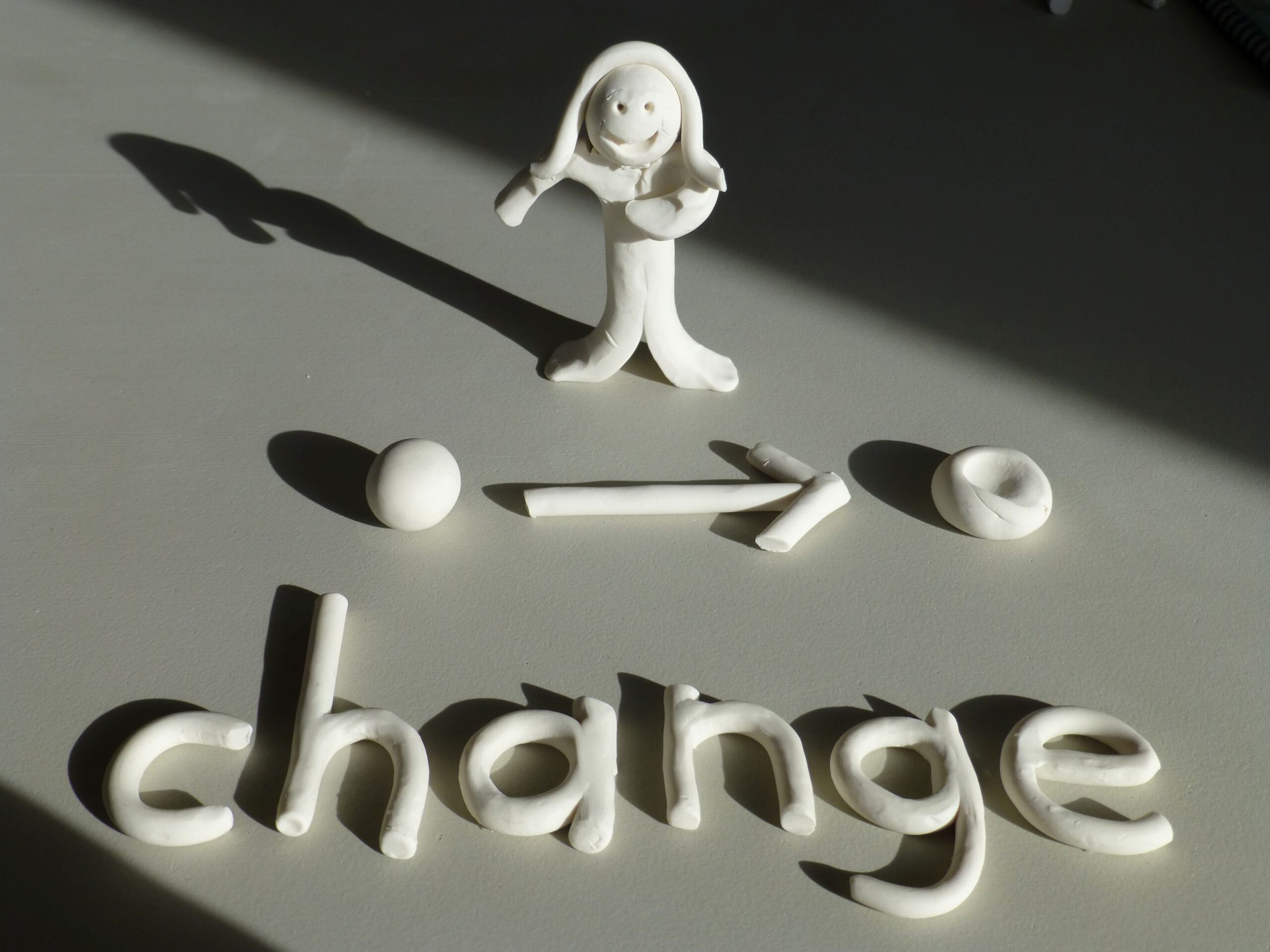
When the concept of change is unclear, individuals may:
- Avoid new experiences
- Become overwhelmed when things change
- Struggle with flexibility
- Experience perfectionism
Through our trademark clay modelling, we make this concept tangible. For example, we explore how a ball becomes flat when jumped on, how an empty bowl changes to contain cereal, or how ice transforms into water.
When we clarify this concept, we often see:
- Greater willingness to try new experiences
- Increased curiosity
- Better handling of routine changes
- Reduced anxiety
- Less rigid perfectionism
2. Consequence
Consequence means cause and effect. Something happens because of something else. Many neurodivergent individuals focus only on the end result. They miss the connection between actions and outcomes. This can lead to repeated negative behaviors or confusion when faced with discipline.
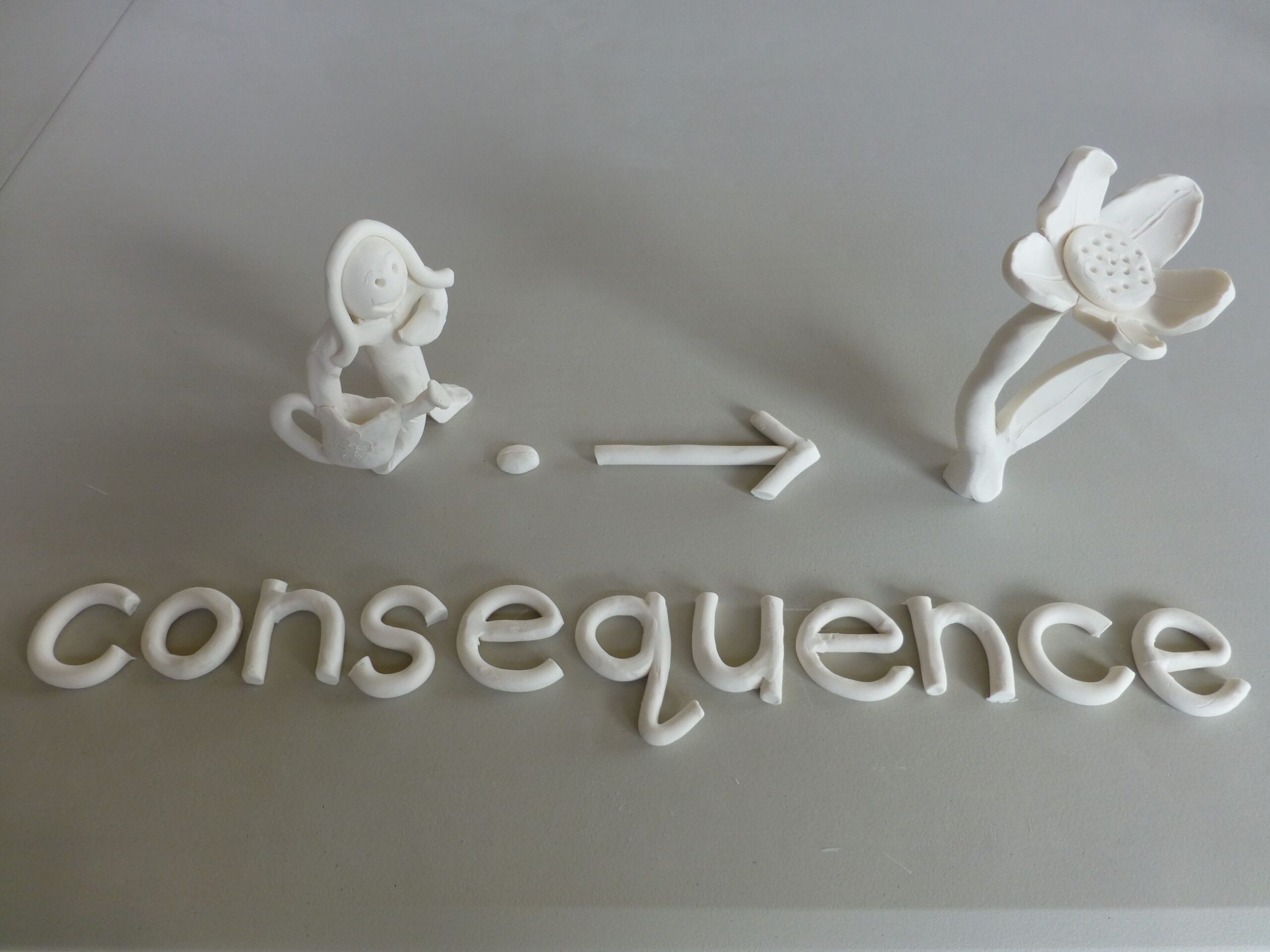
When consequence is unclear, individuals may:
- Repeat negative behaviors despite getting in trouble for them in the past
- Blame others
- Act impulsively
- Fail to predict outcomes
- Hurt others without meaning to
In Davis, we explore consequence as how we experience change around us. We can see the cause and effect of change – the consequence. The term consequence often has negative connotations, this method removes that negative stigma.
When consequence is clear, we see individuals:
- Changing behavior to create outcomes they want
- Taking responsibility for own actions
- Learning from their mistakes
- With improved relationships
- Taking more considered behaviors
- Being able to reason through a situation
- With an increased ability to predict outcomes
3. Time
Time is the measurement of change. For neurodivergent individuals, time can feel abstract and is often experienced in a distorted way. They may struggle to estimate how long tasks take. This leads to lateness, procrastination and disorganization.
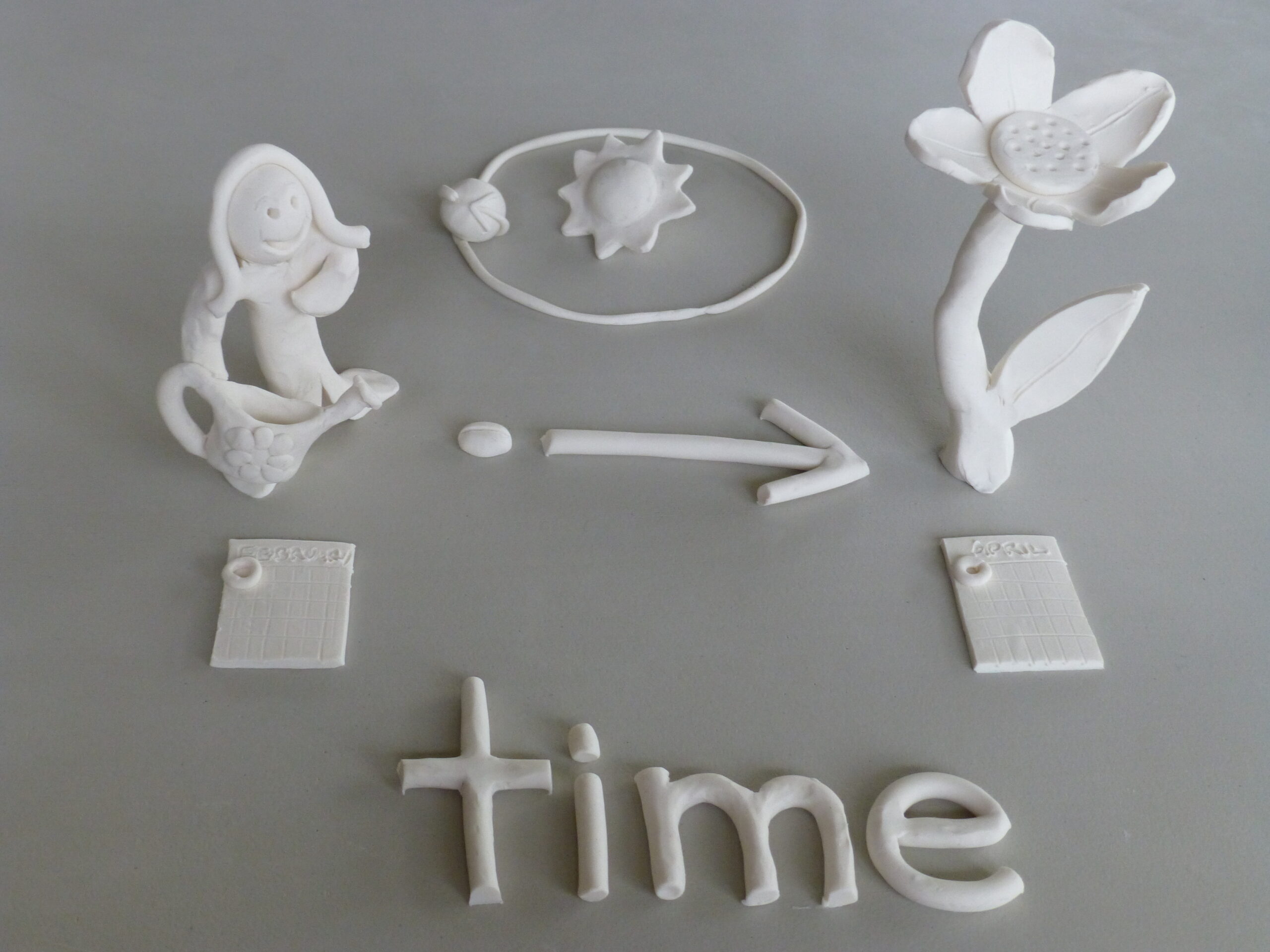
When time is unclear, individuals may:
- Constantly run late
- Leave tasks until the last minute
- Overcompensate by being excessively early
- Struggle to prioritize
In Davis, we make time concrete by understanding it as the measurement of change. When we cook pasta, we’re measuring how long it takes for it to change from hard to soft. When we sprout a seed, we’re measuring how long it takes to change from seed to sprout.
This practical understanding helps individuals:
- Plan more effectively
- Complete tasks on time
- Make better decisions about time management
- Reduce stress and confusion
4. Responsibility
Responsibility involves ability, motivation, and control. Responsibility does not happen if you have motivation, but do not have the ability to control (cause change). Similarly, you will not end up taking responsibility if motivation is lacking.
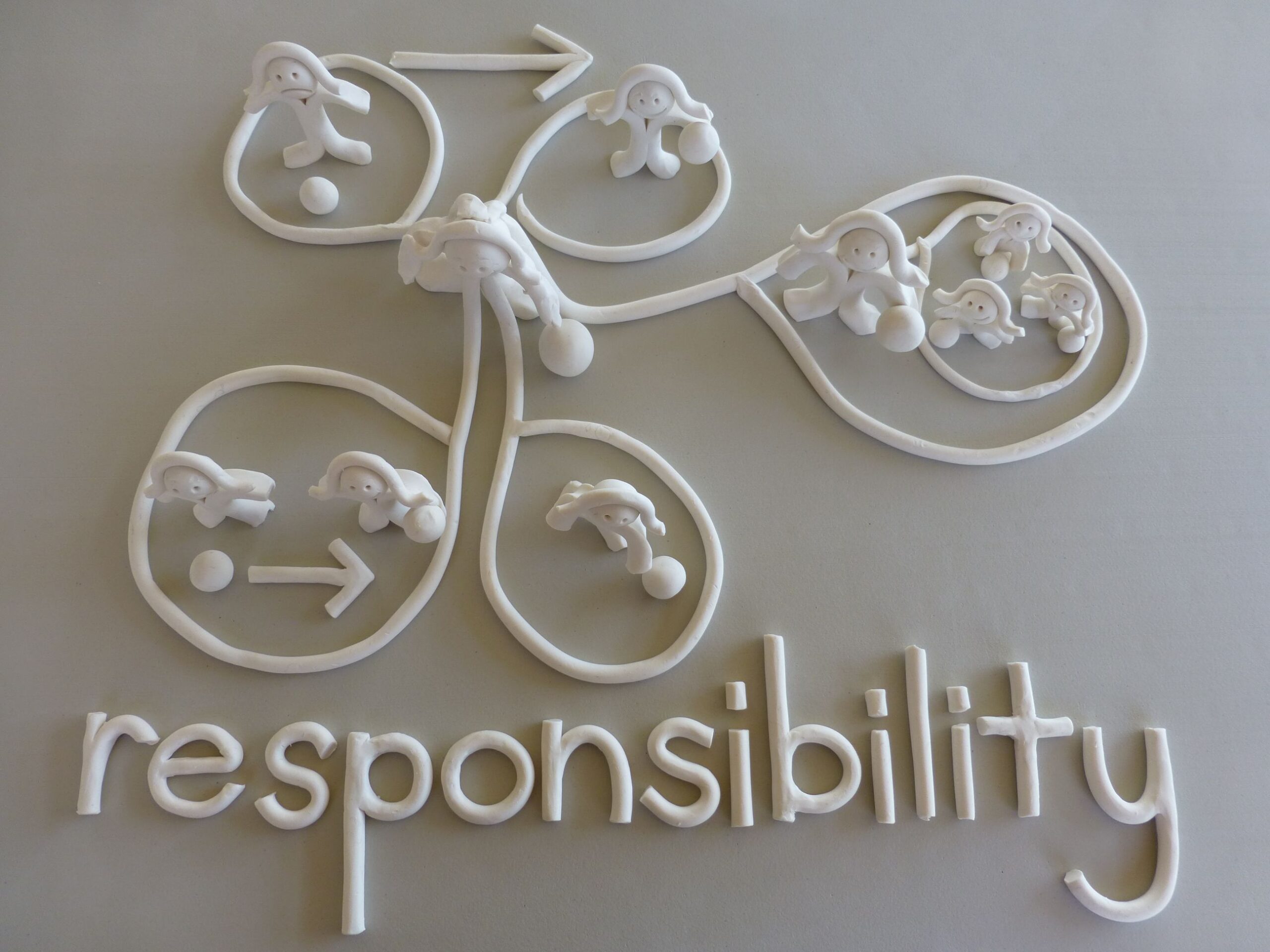
For neurodivergent individuals, responsibility can feel overwhelming. They may take on too much or avoid it altogether.
When responsibility is unclear, individuals may:
- Refuse certain tasks
- Blame others for mistakes
- Take on too much
- Struggle with boundaries
When responsibility is mastered and internalized, we see individuals who:
- Own appropriate responsibilities
- Set stronger boundaries
- Work well both independently and in groups
- Maintain healthier relationships
The Davis Method: Making abstract concepts concrete
The Davis Concepts for Life program and workshops offer tools to address these challenges. It uses hands-on techniques to clarify abstract ideas. As you can see with the examples above, clients use clay to model concepts like change or consequence. This approach is effective because it aligns with how neurodivergent individuals learn best: visual and hands-on. And because the creativity process and the learning process cannot be separated, the learning of these concepts becomes fully internalized and easily transferrable, rather than simply rote learned.
Key benefits of the Davis Method includes:
- Improved clarity of abstract concepts
- Greater willingness to try new experiences
- Enhanced ability to predict outcomes
- Increased confidence and independence
Next Steps
If you or your child struggles with life concepts, consider exploring the Davis Program. You can:
1. Attend a Davis Concepts for Life Workshop. This program is ideal for parents, teachers, and caregivers. After completing the workshop, you will be equipped to take an individual through the Concepts for Life Program
Find out more about our next workshop
2. Work one-on-one with a Licensed Davis Facilitator. They provide personalized guidance on your journey through the Davis Concepts for Life Program
Both options offer practical tools and strategies. These can lead to meaningful and lasting change.
For more information, book a free, no obligation discovery call. Take the first step toward clarity and empowerment today.
From Struggle to Success at 50
By Kristiina Goyette
For fifty years, I lived with an invisible challenge I couldn’t name. As a budget analyst, I had adapted to my struggles with reading, social anxiety, and constant mental exhaustion – attributing them to personality quirks or stress. It wasn’t until losing my job during the 2019 COVID pandemic that an unexpected discovery changed everything. In searching for answers to my “comprehension difficulties,” I stumbled upon something that would rewrite my understanding of myself: adult dyslexia. This is the story of how a late-in-life diagnosis through the Davis® Mastery for Dyslexia didn’t just explain my past – it transformed my future.
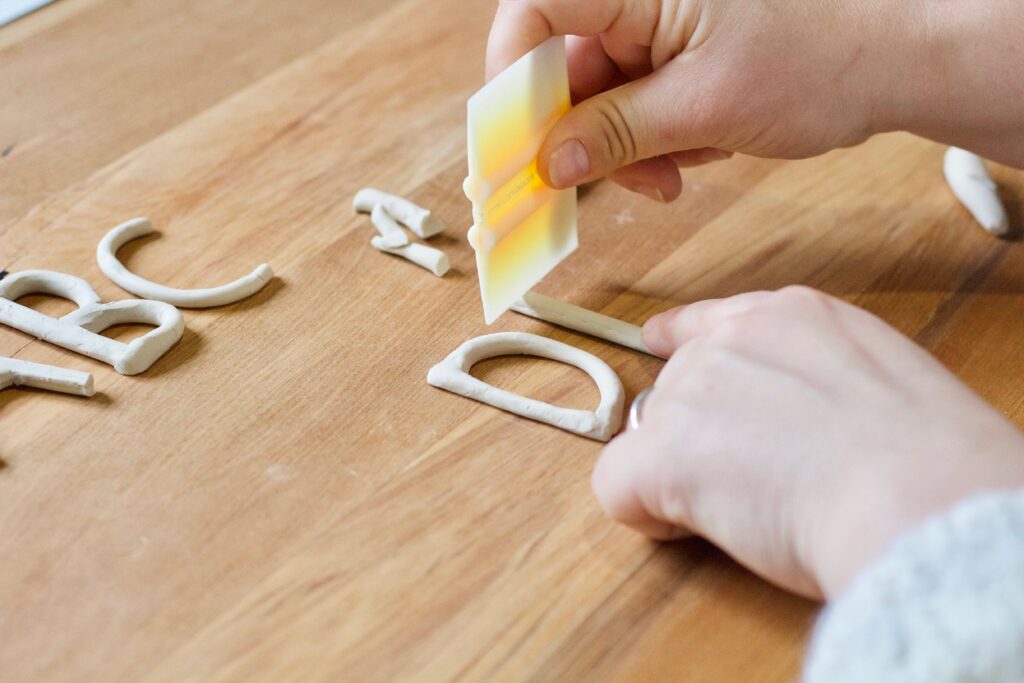
In 2020, I realized I had some comprehension difficulties to add to the list of ongoing strangeness that was my “normal.” Now in my 50s, I was still trying to finish my Associate in Arts (AA) in college — never really feeling like I was learning and constantly searching for the right career path. I had lost my job as a budget analyst due to COVID, leaving me depressed and uncertain about my future. I had struggled with anxiety, panic attacks, stomach issues, and social anxiety, among other issues, for years.
Using my extra time to finish the AA and figure out what was going on with me, I stumbled upon a link to Ronald Davis’s book, The Gift of Dyslexia. I had always thought dyslexia was only reading letters or numbers backward. It never occurred to me that I maybe dyslexic.
The awakening
Reading through The Gift of Dyslexia, the pieces started to fit together. My struggles were directly related to my dyslexia. For years, I grappled with pronunciation, I was considered “shy,” but I was terrified of speaking improperly or having “strange” ideas. My adult children and husband always helped me when I could not think of the right word, where we had gone, or the name of a person. I made up “nicknames” for things to remember them.
I never remembered sequences for processes, and, in a career of accounting/bookkeeping, I was constantly reviewing my notes for the correct order, even though I had done something daily.
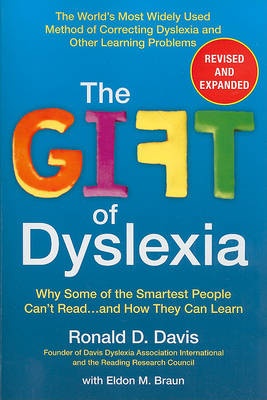
“It was amazing to realize that I can learn information just as well as anyone else — I just need to do it differently.”
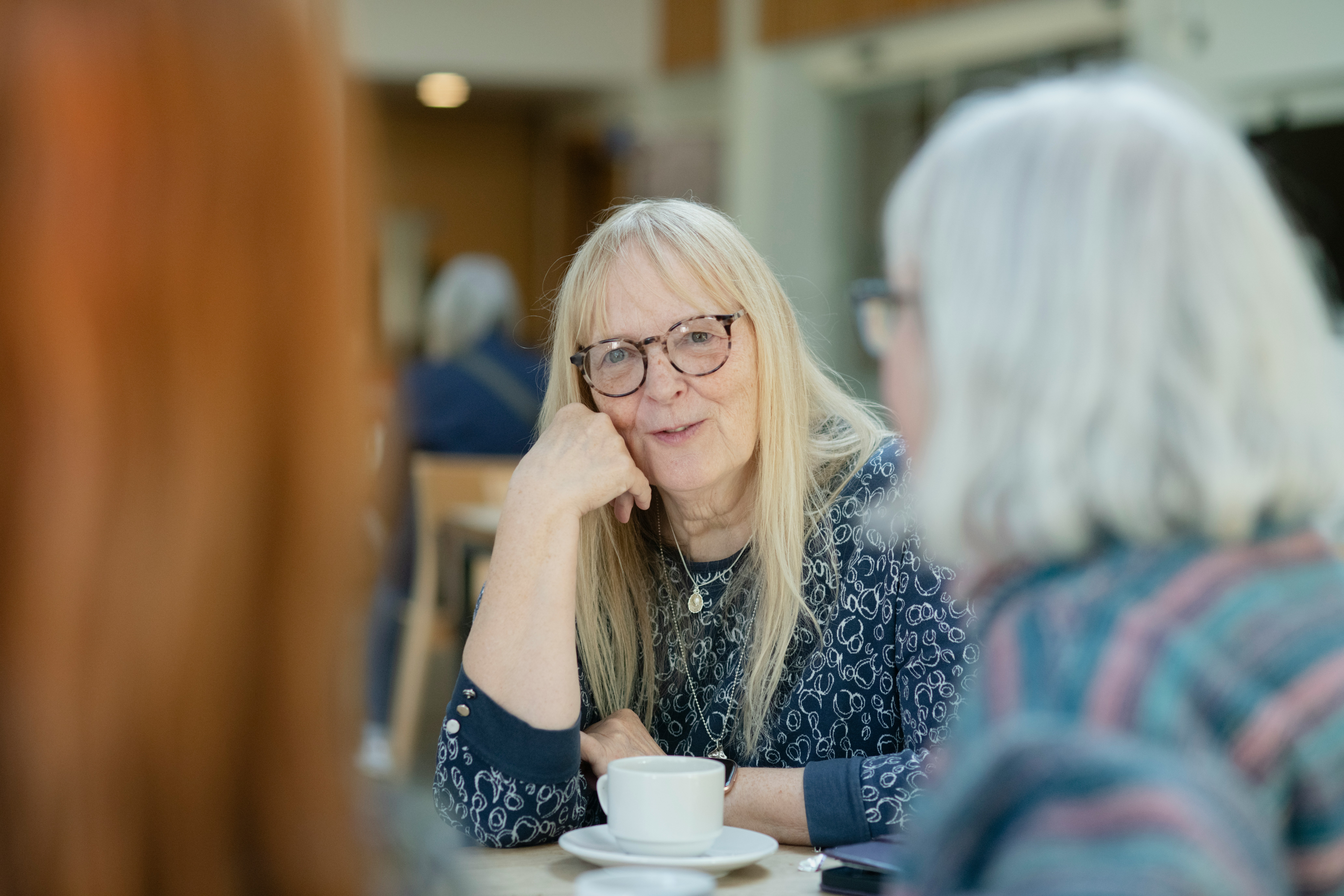
Breaking free from social anxiety
The second major change came with my ability to function in social settings. For years, I was physically ill and completely overwhelmed at parties, meetings, and restaurants. I became very anxious, withdrawn, and hypersensitive to noise. If alcohol was available, I always took it so that I could appear “normal” and try and blend in. My Facilitator took me to a restaurant, where we went through the tools I could use to focus, function, and enjoy myself. With each step, I became more self-aware, focusing on our conversation, slowing down my mind, and lowering my energy level. Things were workable for the first time in my entire life. I am happy to say that I have had many successful and enjoyable gatherings in restaurants, at parties, and in professional settings since I finished my Davis® Mastery for Dyslexia program.
Visual thinking
Because I am a visual thinker, my issues with memory, retention, and processing were from years of trying to learn things traditionally. I was able to do well if I had multiple-choice, but I could not regurgitate the information easily in an essay form or verbally. I had adapted to remembering things with “nicknames” so, on a multiple-choice test, if it was not a spelling test or the words were not spelled similarly, I could do well. This was double the work, but because I think very quickly, nobody noticed.

I have a good memory — I think in pictures, not words. This interfered with my reading process, I was not reading the words as words, but creating pictures, this led to difficulty relaying information. My pictures were not specific enough to identify terms.
The exercise that changed my world was making the alphabet with clay. My picture brain now remembers/visualizes the alphabet both forwards and backward. To this day, I can still verbalize the alphabet backward. It was amazing to realize that I can learn information just as well as anyone else — I just do it differently.
When the program ended, I was overwhelmed but excited and hopeful. The program was challenging, but I learned new ways of doing things I had been attempting to do forever.
My Facilitator, Jacalyn, was my cheerleader, supporting me when things got tough. I know there are other adults out there that are like me, I hope that my experience will give them the courage and understanding to reach out for help. I owe so much to my Facilitator for helping me have self-confidence, for showing me that thinking differently is a gift, and for supporting me as I continue to work on who I am and how I work best.
Note: Kristiina completed a Davis® Mastery for Dyslexia program. The program is based on the insights and strategies that enabled Ron Davis, a severely dyslexic individual, to overcome his own reading difficulties at the age of 38. The program is a transformational learning experience that embraces the unique and wonderful ways of thinking and perceiving experienced by people with Dyslexia. It then uses those perceptual strengths to overcome the challenges caused by that creative way of thinking.
Read our latest posts
- From Refugee Camp to Reading: Ryan and Yaya’s Transformations
- Davis Neurodiversity Weekend: Autism
- “We were yelling at each other, and then… I hit him.”: A Facilitator’s story of breakthrough
- What Causes Dyslexia? Understanding Disorientation and Dyslexic Perception
- Why Dyslexia Might Be an Ancient Feature, Not a Flaw
Navigating autism, dyslexia, and finding the right approach

By Nicola Killops
James was a happy, healthy, thriving boy. But even as a newborn, he wouldn’t sleep. He had always been an extremely active, but bright, sunny boy.
In daycare, James met all of his developmental milestones, except speech. I began to wonder why other children were fluent, but not him. We were reassured that some kids just took a bit longer, but when a friend came over, with a child one full year younger than James, who could speak fluently, I knew I had to make some forceful inquiries.
James was still in daycare when doctors diagnosed him with ADHD. The medication brought some relief to his sleeplessness but did little for his restlessness and focus. Looking back, during the consultation he tried to climb the walls and jump off furniture. Fortunately, this daycare accepted his quirkiness and recognized he was extremely imaginative, spending days in his fantasy world.
When formal schooling began, things worsened. James felt overwhelmed and anxious, and often acted out. He found solace in the library which was ironic. He began play therapy and was treated for anxiety, leading to a switch to a more expensive remedial school. In Grade 1, the school suggested a one-on-one facilitator, which was costly, but even with help, he struggled. He memorized reading material rather than truly learning it. After a major tantrum, the school called me in, revealing unacceptable handling at after care. James was left devastated by the experience.
Another diagnosis
James was diagnosed with high-functioning Autism/Asperger Syndrome, he was moved to a special school for Autism. His young teacher adored him, and his emotional healing began, but he couldn’t read. At eight, he was illiterate, and they added Dyslexia to his diagnoses. We were happy there, as James felt valued. Through the grapevine I learned about an intervention, new to South Africa: The Davis® Mastery for Dyslexia. Two students who had completed the program no longer needed extra reading lessons. I knew I had to get James into a program.
Our nearest licensed Davis facilitator, Axel Gudmundsson, worked with James for nine days. Though challenging, Axel helped James, who was illiterate and autistic.
It was tough, it took endless negotiations to get James onboard. Axel truly had his work cut out for him. By day three, Axel had won him over and James could name all alphabet letters, recite them forwards and backwards, and attempted reading on his own – something we had never dreamed possible.
The most remarkable change was James’s ability to grasp concepts like disorder, he began cleaning up after himself. He recognized cause and effect, realizing that his actions and behaviors were directly related to consequences, James even realized when his actions or words hurt me, and apologized, on his own accord!
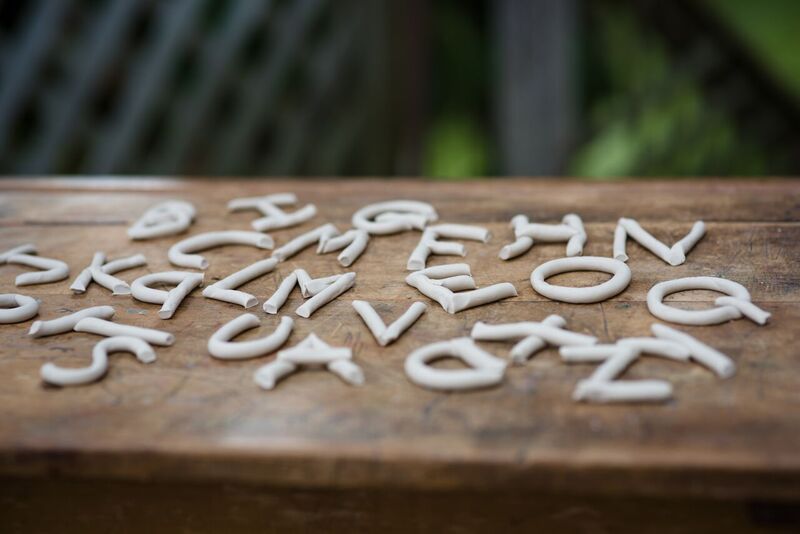
“ By day three, Axel had won him over and James could name all alphabet letters, recite them forwards and backwards, and attempted reading on his own – something we had never dreamed possible.“
Since working with Axel, James had continued to make steady progress. We had been working through a follow-up program at home for an hour a day, four days a week. To my surprise, he embraced these activities – something he would have previously avoided at all costs. He no longer protested or ran away; instead, he seemed to enjoy the work.
James made independent attempts to write and type, which was a huge improvement from being completely illiterate just a few months ago. For example, he tried to Google something, even if the spelling wasn’t perfect. Importantly, he no longer gave up and cried in frustration when he struggled. Instead, he simply asked for help, and I was able to spell things out for him so he could transcribe accurately. This was something I had begun to think might never happen.
The most meaningful progress I saw was in James’ ability to express himself through writing. Before the program, he fought and avoided even basic writing tasks, like signing his name in a birthday card. But on Mother’s Day, he independently wrote me a heartfelt letter saying he loved us and that we were the greatest parents. I didn’t care that the spelling needed work – this represented a 100% improvement from where he was just a short time ago.
I knew James was one of the most severe cases of dyslexia, so my expectations had been realistic. But I couldn’t help but wonder what Axel could achieve with a dyslexic child who was already functionally literate. The progress James had made felt almost miraculous. What started as a last-ditch effort had truly paid off, and I was so excited to see where we could go.
The principal of James’ special needs school noticed significant improvements in his handwriting, writing skills, and overall confidence and happiness in the classroom. They described him as a “star” who took much more pride in his work.
Note: James completed the Davis® Mastery for Dyslexia and the Davis Autism Approach® programs.
Whether you’re an adult or a child, whether you struggle with ADHD, autism, dyscalculia, dysgraphia, dyslexia, dyspraxia, or executive function difficulties, we are experts who understand neurodiversity ‘from the inside’ and can help you realize your true potential.
Contact us for a free, no obligation discovery call to see of our programs are right for you or your loved one

By Albert Calleros
Albert, is an autistic individual from Anaheim, California. He celebrates the day he became one of Dr. Angie Gonzales’ Davis Autism Approach® clients.
Albert explains the impact of the Davis program, in his own words.
“The Davis Autism Approach® has made a profound difference in my life“
Because of my lifelong struggle with autism, I have had to grapple with my unique social challenges on a daily basis. I felt profoundly miserable about the difficulties I was experiencing in both making and sustaining friendships. I had a lot of trouble with deciphering the subtle social cues being conveyed by others, and I was unable to grasp the overall nature of interpersonal rapport vis-à-vis others.
Combining these challenges with my poor executive functioning and impulse control capabilities, I experienced persistent psychological and emotional problems, including acute self-consciousness, and social anxiety.
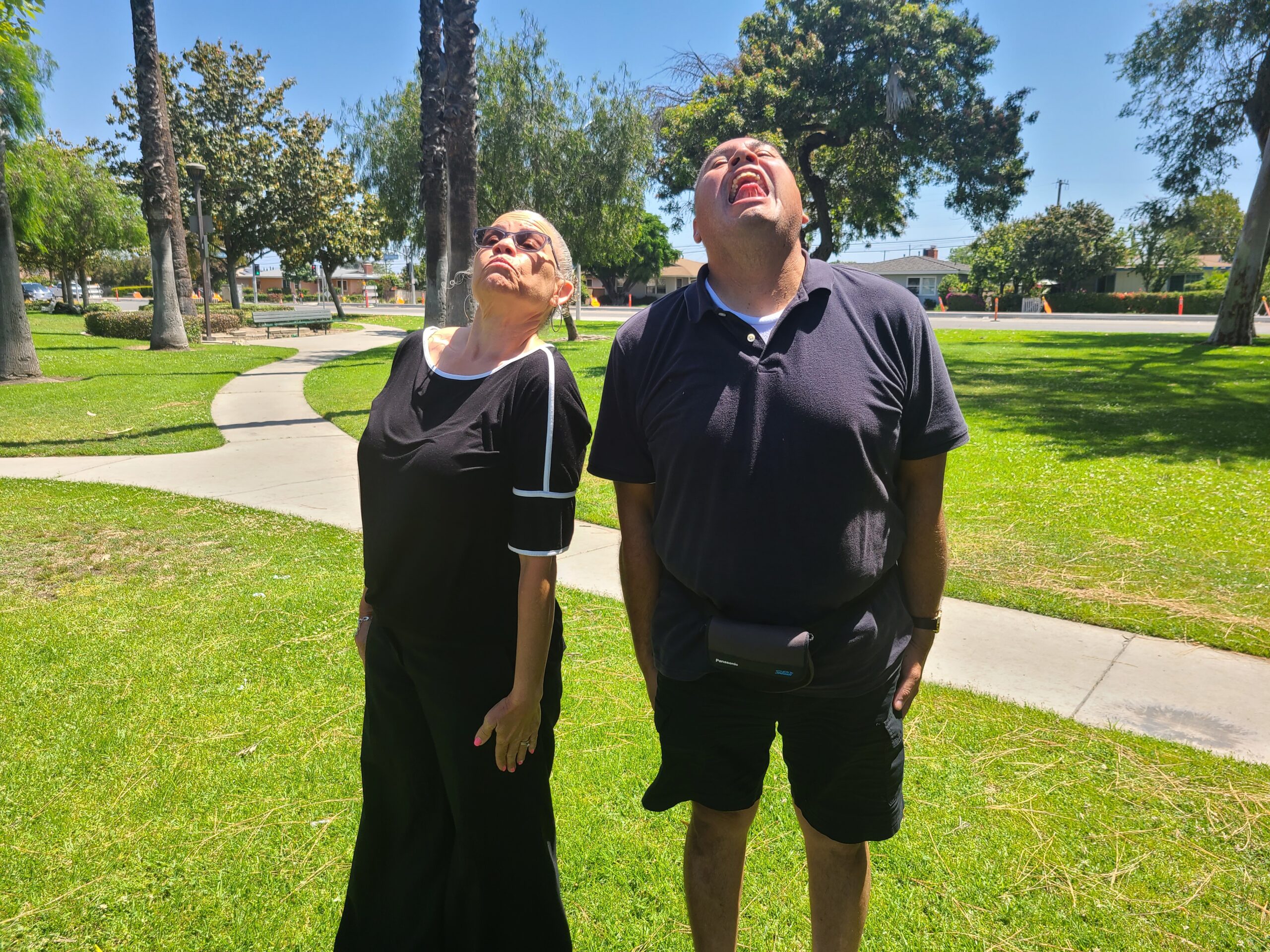
I participated in the Davis Autism Approach® program under the nurturing tutelage of my Davis Facilitator, Dr. Angie Gonzales. She saw the potential within me to be able to thrive amidst a predominantly neurotypical universe.
We worked together over the course of 8 months from 2017 – 2018.
Ever since I completed the Davis Autism Approach® program, I have been able to gradually emerge from the ‘netherworld’ of autism with a tremendous amount of self-confidence within me.
I have been discovering my essence as an autistic individual and a burgeoning sense of personal self-worth within me.
These changes have progressively led to a substantial improvement in my interactions with others, especially with relatives and friends. I have a heightened level of self-awareness pertaining to actions and emotions, as well as an enhanced understanding of potential repercussions that can arise from these. And this brings with it a newfound appreciation for social-emotional comity vis-à-vis others.
I have also experienced a dramatic improvement in executive functioning and impulse control capabilities.
And I no longer view autism as a scourge that must be harshly dealt with. As a matter of fact, the autism within me has become a wonderful gift that has compelled me to see the beauty of life at a particular instant in time.
If I had not chosen the Davis Autism Approach®, I most certainly would have been trapped in the ‘netherworld’ of autism for the rest of my life.
I have finally developed within myself a sense of ‘wokeness’ for the first time in my life.”
Albert Calleros
Note: Albert the Davis Autism Approach® Program, created by Ron Davis. This life-changing developmental approach was dedigned to give autistic individuals (like himself) the foundational skills needed to create change and participate fully in life. During this program, a highly trained and licensed Davis Facilitator will take you/your child on a gentle, respectful journey of self-discovery, self-actualization and self-empowerment.
Explore Davis Solutions
A Breakthrough Understanding of Dyslexia
In the realm of dyslexia, the Davis Methods have initiated a revolutionary paradigm shift. While many traditional programs continue to perceive dyslexia as a learning disability, Davis stands apart by understanding the root cause of it – a perceptual talent.
The Davis theory of dyslexia recognizes that individuals with dyslexia possess extraordinary talents, creative thinking, and vivid imaginations. What’s more, it acknowledges that the same thinking style that fuels these gifts also underlies the symptoms associated with dyslexia.
This transformative shift challenges the age-old mainstream notion of dyslexia, replacing it with a beacon of hope for struggling learners and dyslexic adults. It’s an evolution from deficit-focused interventions to empowerment-based solutions, a change that’s sweeping across the globe and transforming lives.
Empowering Individuals to Embrace Their Gifts
The Davis Dyslexia Correction program is not about accommodating or coping with dyslexia; it’s about empowering individuals to embrace their unique gifts and talents. At its core lies an innovative toolset, including signature clay techniques and powerful medication-free self-regulation methods for mental and physical focus, designed to catalyze this transformative journey.
Davis’ revolutionary clay techniques are a pivotal component, meticulously crafted to take abstract and often perplexing symbols, such as letters, abstract words, and punctuation, and mold them into tangible, comprehensible forms. The brilliance of this method lies in its alignment with the natural creative, multi-sensory learning abilities of neurodivergent individuals, offering an effective bridge between the abstract world of symbols and deep comprehension. These techniques have proven exceptionally effective, particularly for those who haven’t responded well to mainstream phonetic instruction.
Worldwide Reach: A Beacon of Hope for Dyslexics Everywhere
With a presence spanning the globe, the Davis Dyslexia Correction program has become a shining beacon of hope for dyslexics worldwide. From North America to Europe, Asia Pacific, Africa, India, and beyond, its transformative impact knows no bounds, accommodating diverse symbols and languages with ease. Notably, the revolutionary book “The Gift of Dyslexia,” authored by the program’s creator, Ronald D. Davis, has transcended linguistic barriers, with translations available in more than 20 languages.
What sets the Davis methods apart is its network of licensed Davis facilitators, who are highly trained at delivering these transformative tools through the Davis Dyslexia Correction Program. These dedicated professionals bring expertise and experience to the table, ensuring that individuals of all ages and backgrounds receive the support and guidance they need.
Its global footprint ensures that individuals across the world can access this life-transforming approach to dyslexia, including the innovative clay techniques. Stories of success, empowerment, and self-discovery resonate across continents, underscoring the program’s universal appeal and efficacy.
Personalized Learning: The Key to Unlocking Potential
At the heart of the Davis approach is personalized learning, with a central emphasis on harnessing the multi-sensory potency of clay techniques. Recognizing the uniqueness of each dyslexic individual, this program tailors its methods to cater to their specific needs, strengths, and challenges.
The program’s techniques form a holistic approach, addressing not only academic facets but also the emotional and psychological dimensions of dyslexia. By offering a comprehensive framework, it empowers individuals to attain their goals and flourish not just in education but in life’s broader pursuits.
Join the Movement: Be Part of the Davis Dyslexia Solution
Are you ready to embark on a transformative journey? The Davis Dyslexia Correction program, with its innovative self-regulation and mastery techniques, extends its invitation not only to individuals with dyslexia but also to educators, parents, and advocates. By disseminating awareness and understanding, you play a pivotal role in the dyslexia solution, contributing to a revolution marked by creativity and multi-sensory enlightenment.
As the program gears up to unveil its exciting new brand identity in November 2023, the world is welcomed to join this movement. Become a part of this change and play a vital role in unlocking the full potential of dyslexic individuals across the globe. Together, we can fashion a more inclusive, empowered, and compassionate future for all.
For more information on the Davis theory of how extraordinary minds give rise to dyslexia, visit https://youtu.be/eJ8k6zH71xw?si=7UhQoLkM1QmIIOx2
Dyslexia Explained
Breaking Down the Barriers of Disorientation for Neurodivergent Individuals
For decades, the challenges faced by neurodivergent individuals, particularly those with ADHD, have been a subject of extensive research and debate. But have you ever considered the role of disorientation in undermining the conceptual understanding of those with ADHD, and the groundbreaking medication-free solutions that promise to reshape their lives?
Disorientation and Distorted Perceptions: A Hidden Challenge
It’s no secret that disorientation can wreak havoc on a person’s life. Yet, what might be less known is how disorientation can disrupt the lives of individuals with ADHD. According to Ronald D. Davis and his innovative Davis Method, disorientation is not only a symptom but a key factor that contributes to the challenges associated with ADHD.
The World as Perceived
As humans, our reality is largely shaped by our perception of the world around us. When disorientation enters the equation, perception becomes distorted. Neurodivergent individuals, especially those with ADHD, find themselves navigating an alternate reality that differs from what others experience—a world of distortion, and sometimes, even fantasy.
Disorientation’s Impact on Learning
Disorientation, which is prevalent in many individuals with ADHD, not only distorts their perception but also affects their ability to grasp basic life lessons. Concepts like cause and effect are elusive in the disorienting child’s world. They do not develop a clear sense of consequences, making it challenging to navigate social norms and acceptable behavior.
The Unpredictable Nature of Time
For those with ADHD, disorientation extends to their perception of time. Time becomes a mercurial entity, with a minute sometimes feeling like an eternity and other times passing in a blink. While most children develop a sense of the passage of time by age five, disoriented children struggle to establish a uniform understanding of time. This discrepancy can persist into their teenage and adult years.
Time, Sequence, and Order
The ability to comprehend time is closely tied to understanding sequence and order. With a consistent sense of time, individuals can develop an inherent understanding of the way events follow one another. In the absence of this, the world becomes a place of disorder and unpredictability.
Why Disorientation Can Lead to Unacceptable Behavior
The disorienting child experiences a trifecta of challenges:
- Distorted Perceptions: They often misinterpret what they hear and see, leading to inappropriate responses.
- Time Sense Distortions: Their shifting perception of time can result in impulsive behavior and difficulty taking turns.
- Balance and Motion: A sensation of constant motion leads to restless behaviors, often without their awareness.
The Road to a Solution
While the challenges presented by disorientation might seem insurmountable, the Davis Method offers hope and a medication-free path to success. This innovative approach starts with providing orientation counseling to the affected individual, helping them gain control over their internal clock and energy levels.
Dial-Setting: A New Lease on Life
After orientation counseling, a Davis Facilitator employs a technique known as Dial-Setting. This technique allows the individual to set their internal clock’s “dial” at the same level as others, bringing consistency to their perception of time.
Mastering Consequence: A Paradigm Shift
With the aid of Davis Symbol Mastery, individuals learn to understand the concept of consequence. They begin to grasp the connection between their actions and the reactions of those around them.
Time, Sequence, and Order: Clay Modeling at Its Finest
To ensure a comprehensive transformation, the individual continues their journey by mastering the concepts of time, sequence, and order. Clay modeling, guided by a Davis Facilitator, helps them conquer these concepts and break free from ingrained habits.
A Brighter Future Awaits
Although it may take time for individuals, young and old, to overcome these ingrained challenges, the Davis Method promises to bring them into a world free of distorted perceptions. As their sense of time stabilizes, they can look forward to living in harmony with those around them and embracing a brighter, more predictable future.
In a world where medication is often the go-to solution for ADHD, the Davis Method offers a medication-free path that holds great promise for neurodivergent individuals seeking a life of clarity, control, and confidence. It’s a testament to the power of innovative thinking and a commitment to reshaping lives for the better.
Empowered Readers – The Dyslexic Difference
Exploring how dyslexic individuals become proficient readers sparked a new twist in brain research. Rather than focusing only struggling readers, some scientists studied those who excel despite dyslexia. It turns out that successful dyslexic readers forge unique mental pathways for reading comprehension, unlike conventional patterns.
Here’s what researchers found:
While typical readers activate the left brain for reading tasks, this is linked to weaker skills in dyslexics. Instead, proficient dyslexic readers light up the right temporal and frontal regions, indicating a different approach to reading. This brain activity predicts better reading achievements in dyslexic children. Conversely, those who lack these pathways struggle persistently.
What’s fascinating is that the brain areas engaged by adept dyslexic readers are tied to understanding word meanings. They often outperform non-dyslexic readers in vocabulary and comprehension.
This challenges the idea that dyslexic students need intensive remediation to build up phonetic skills. Instead, these findings shed light on why programs like the Davis program, tailored to the dyslexic learning style, bring rapid progress in reading. They equip dyslexic learners with tools that naturally suit their way of learning, aiding their journey to becoming skilled readers.
For more information about this research: https://www.dyslexia.com/research/articles/when-dyslexics-become-good-readers/
